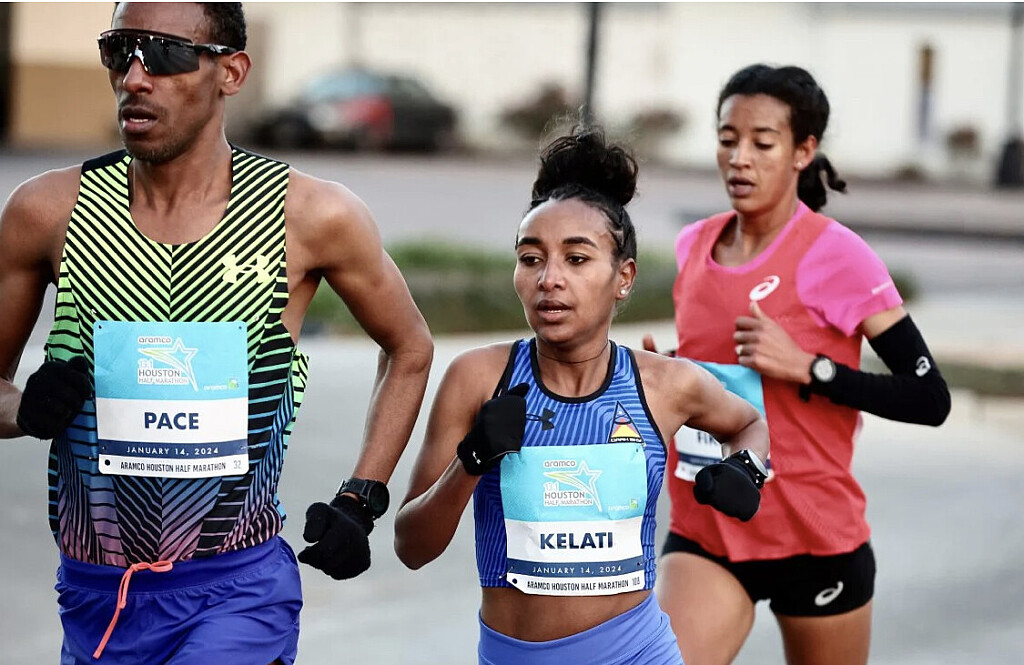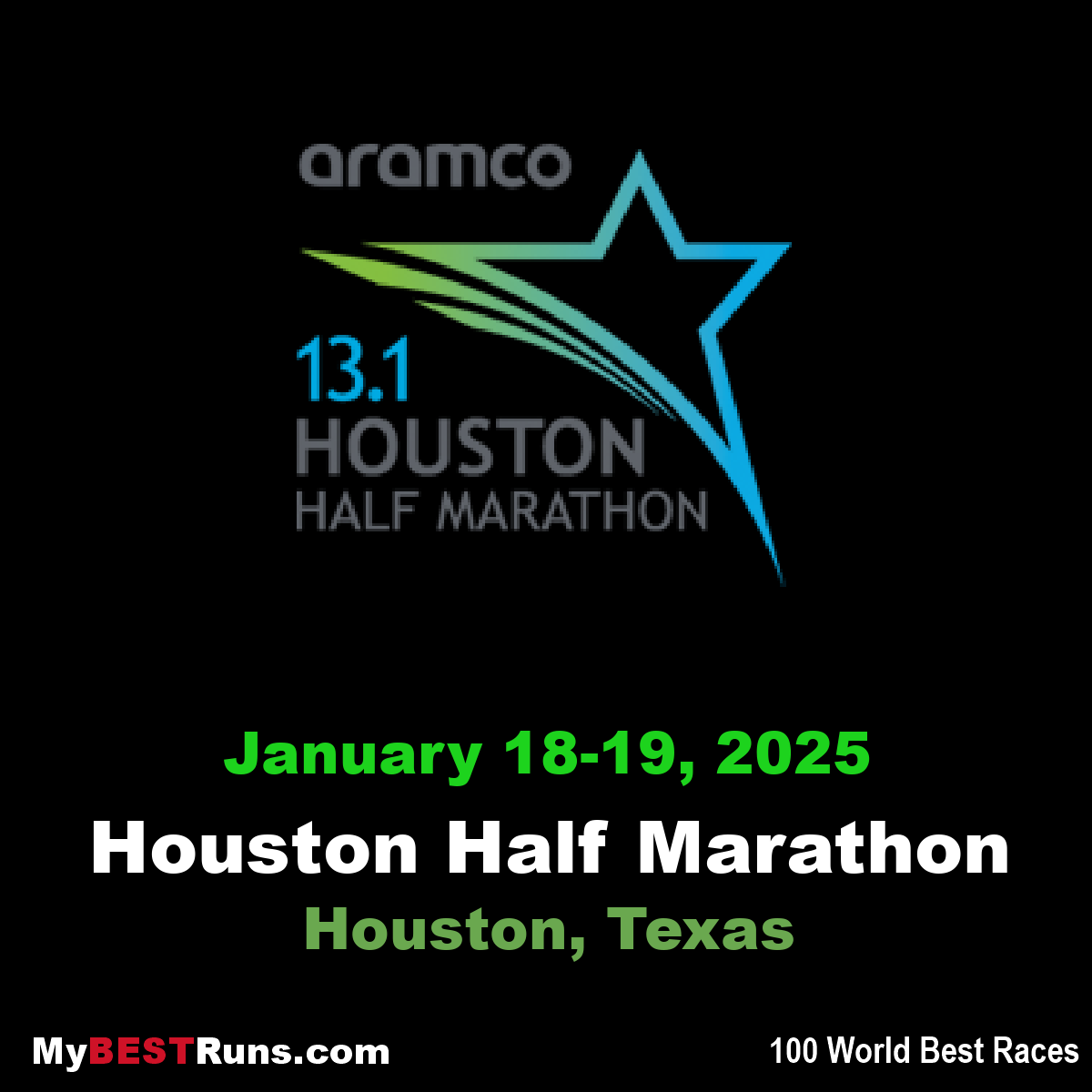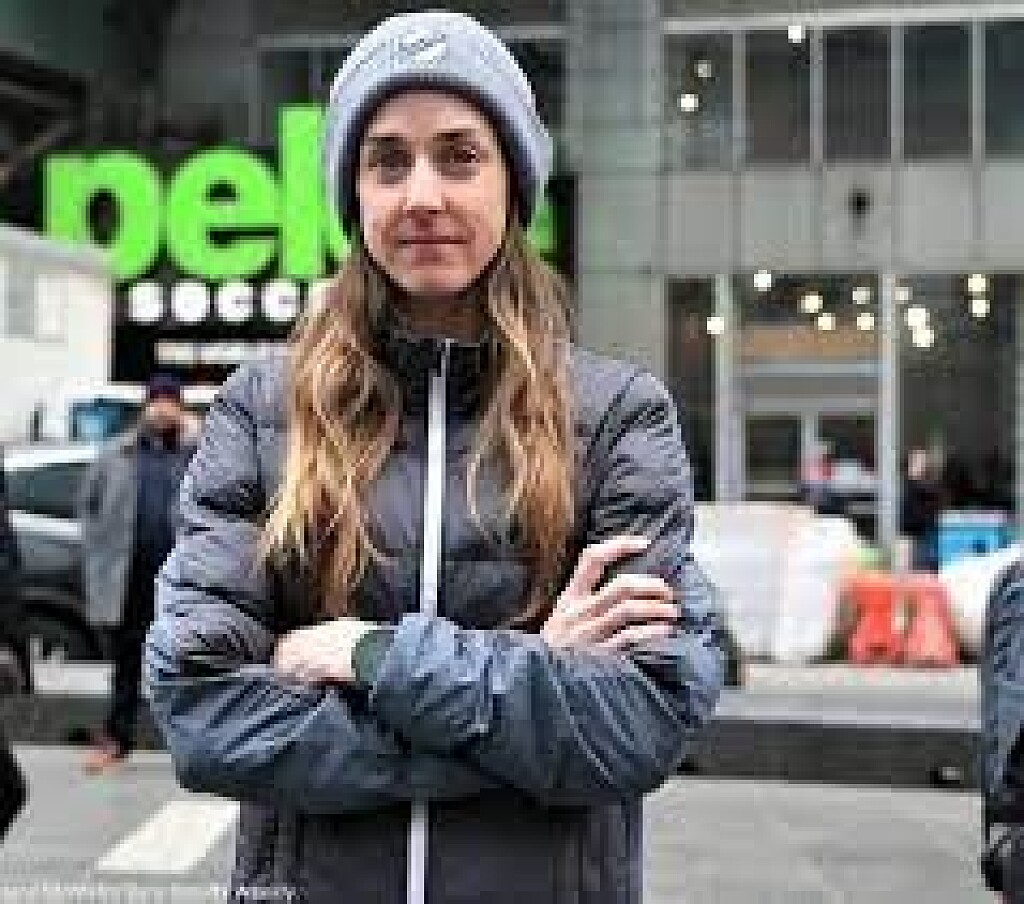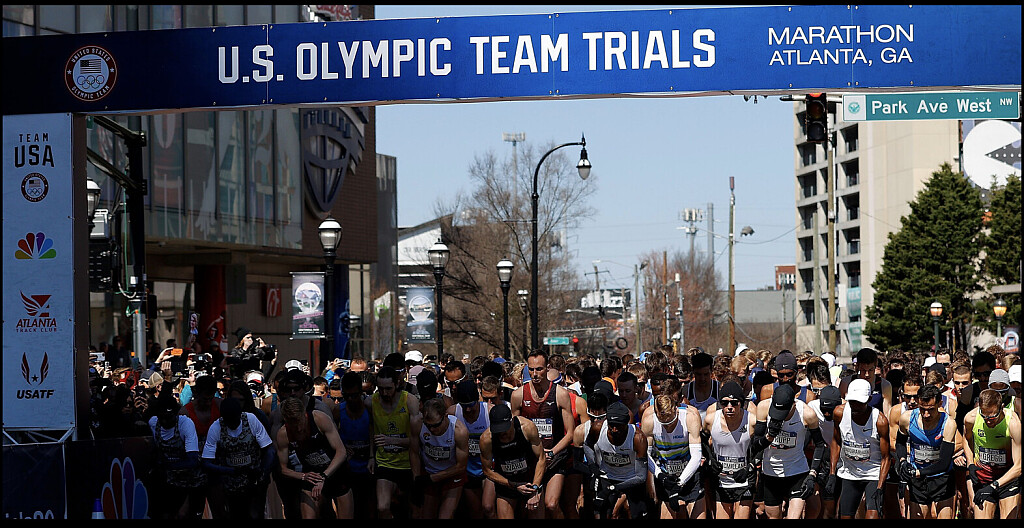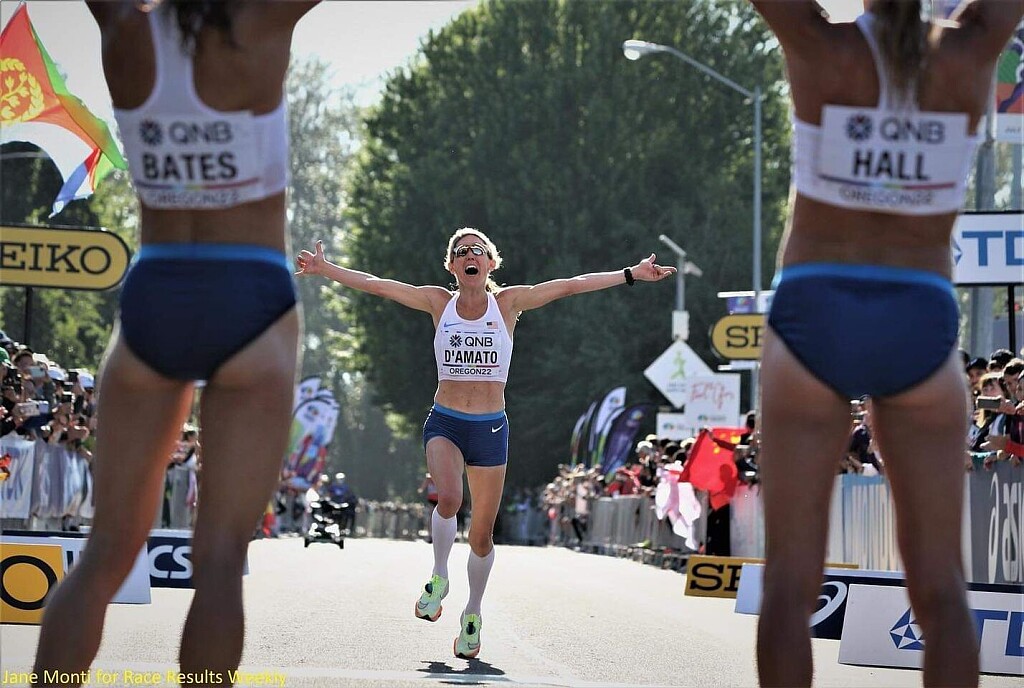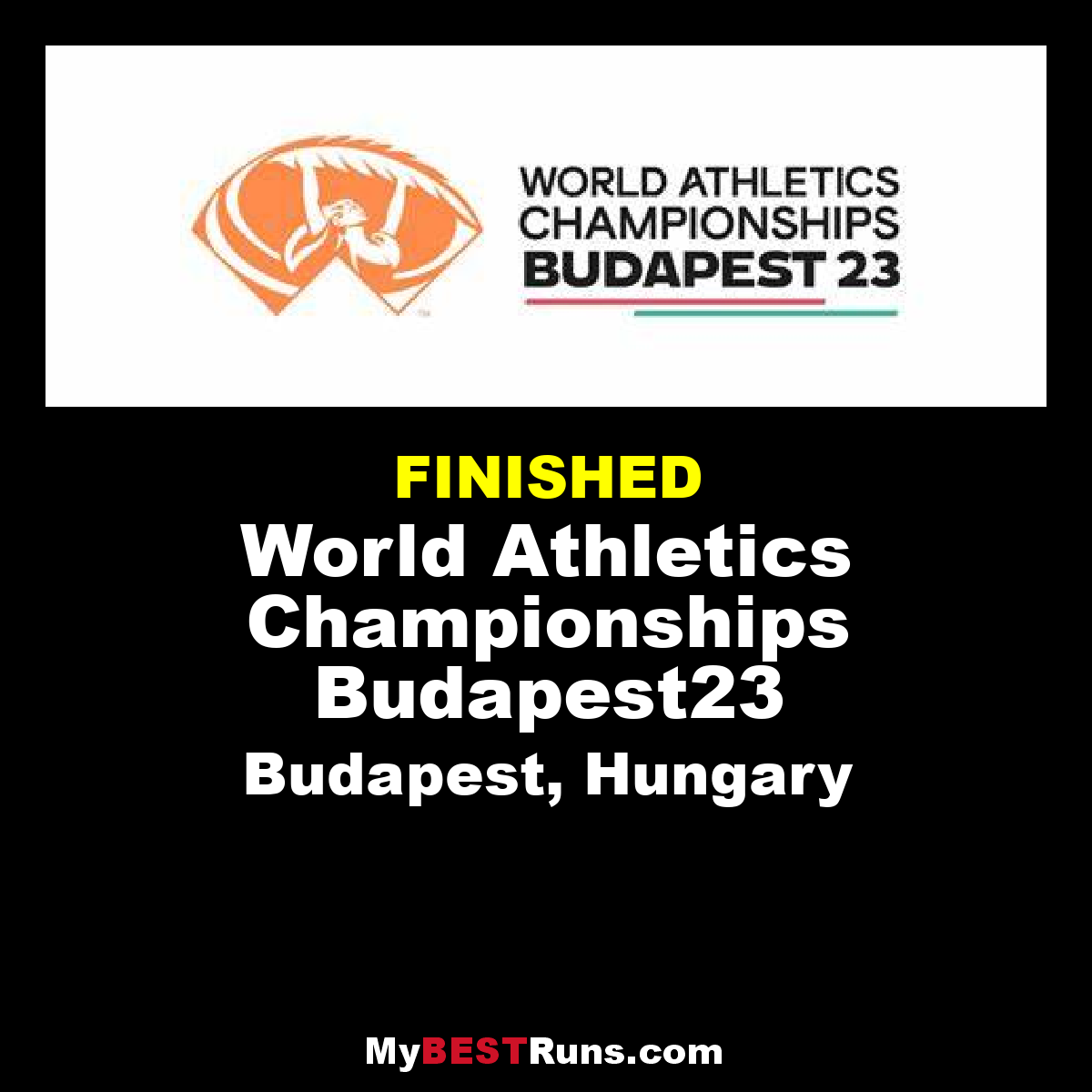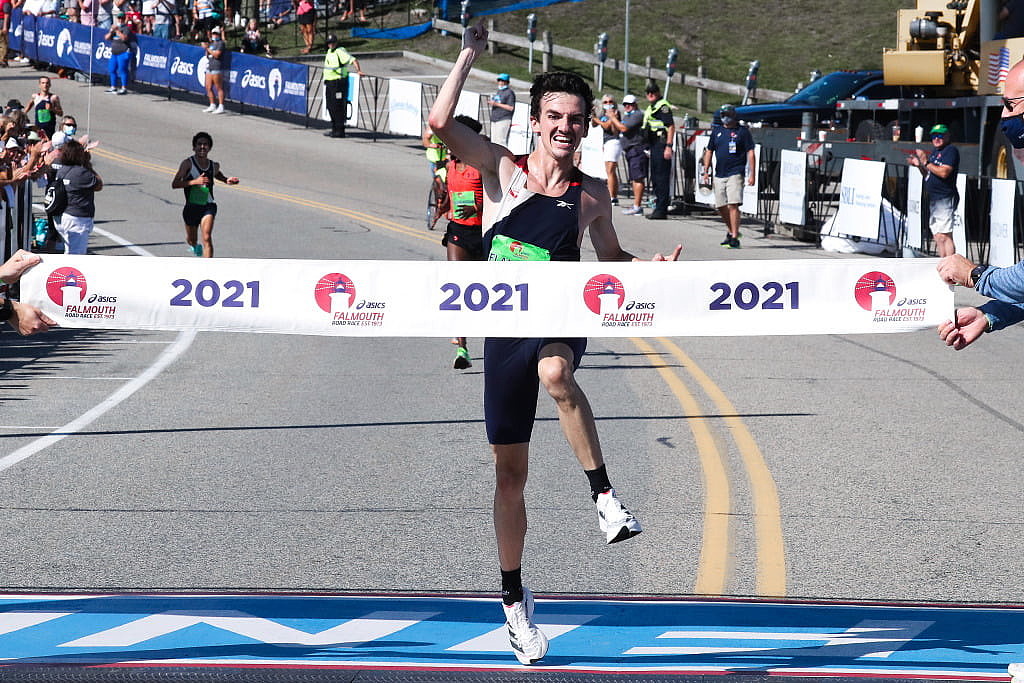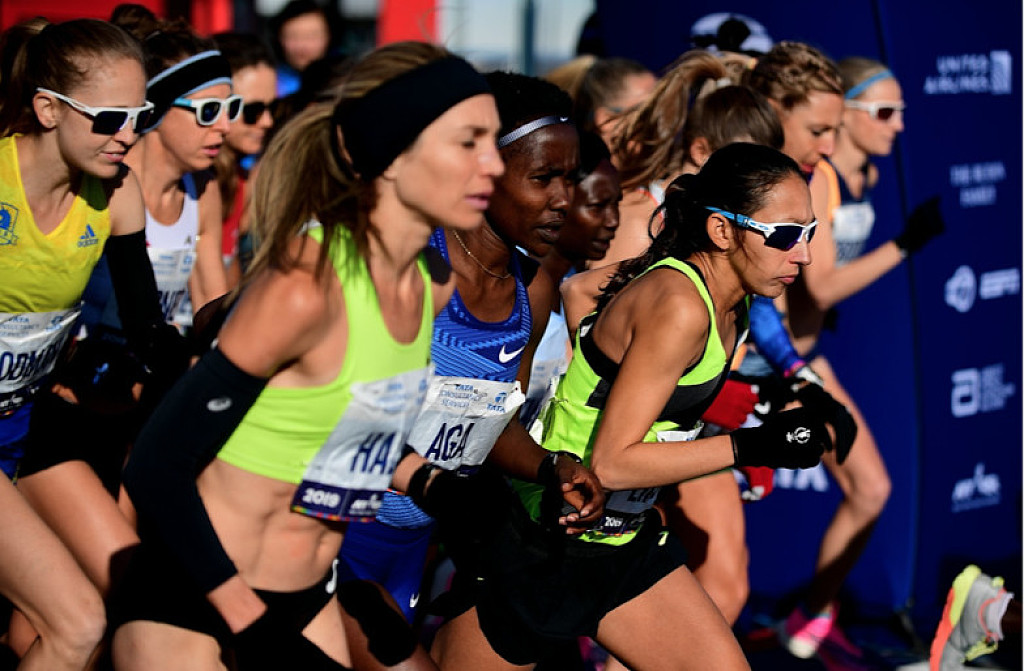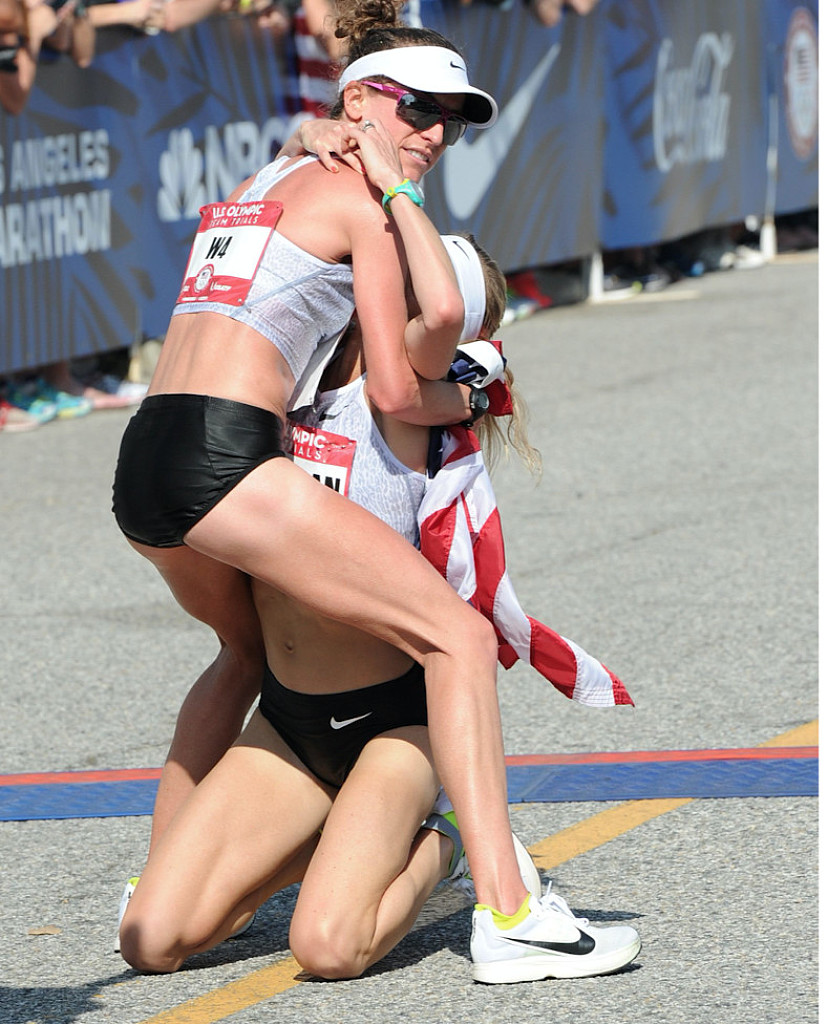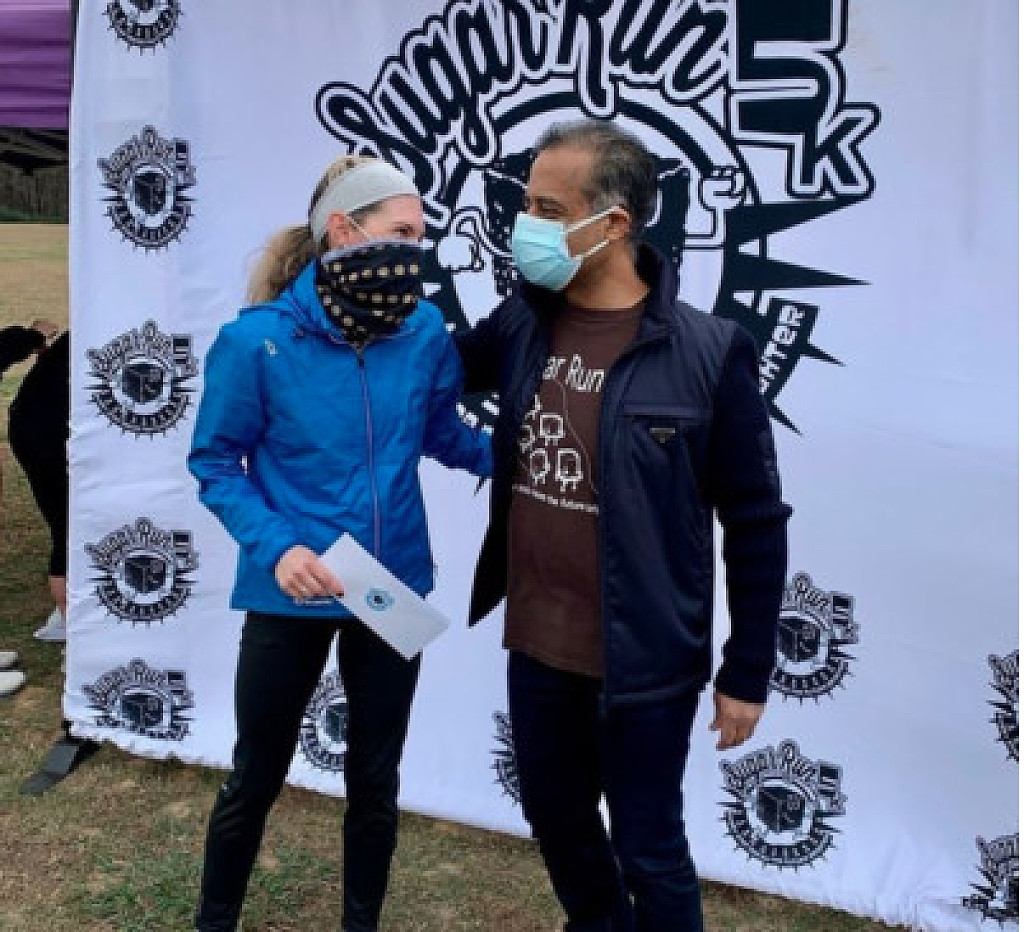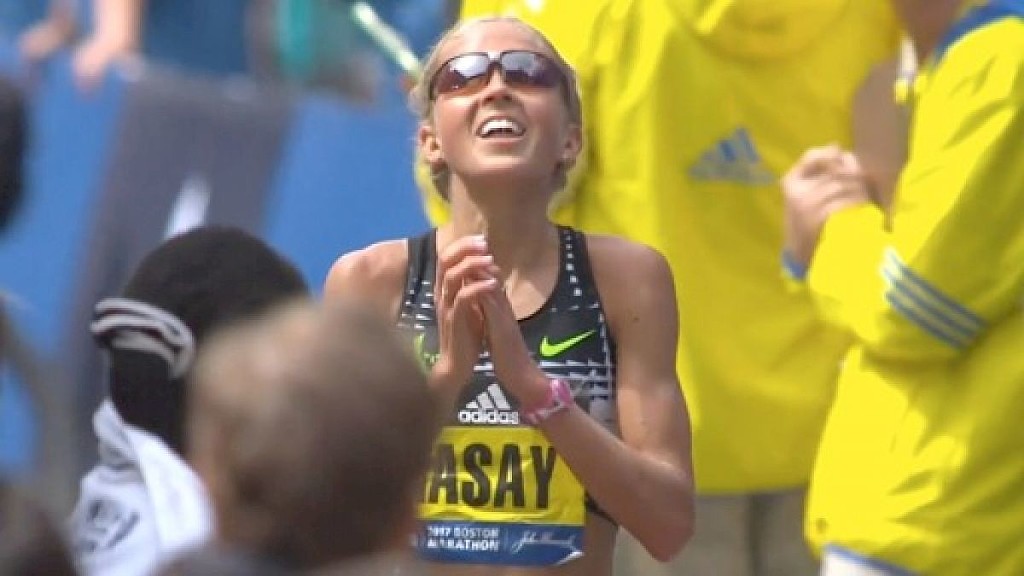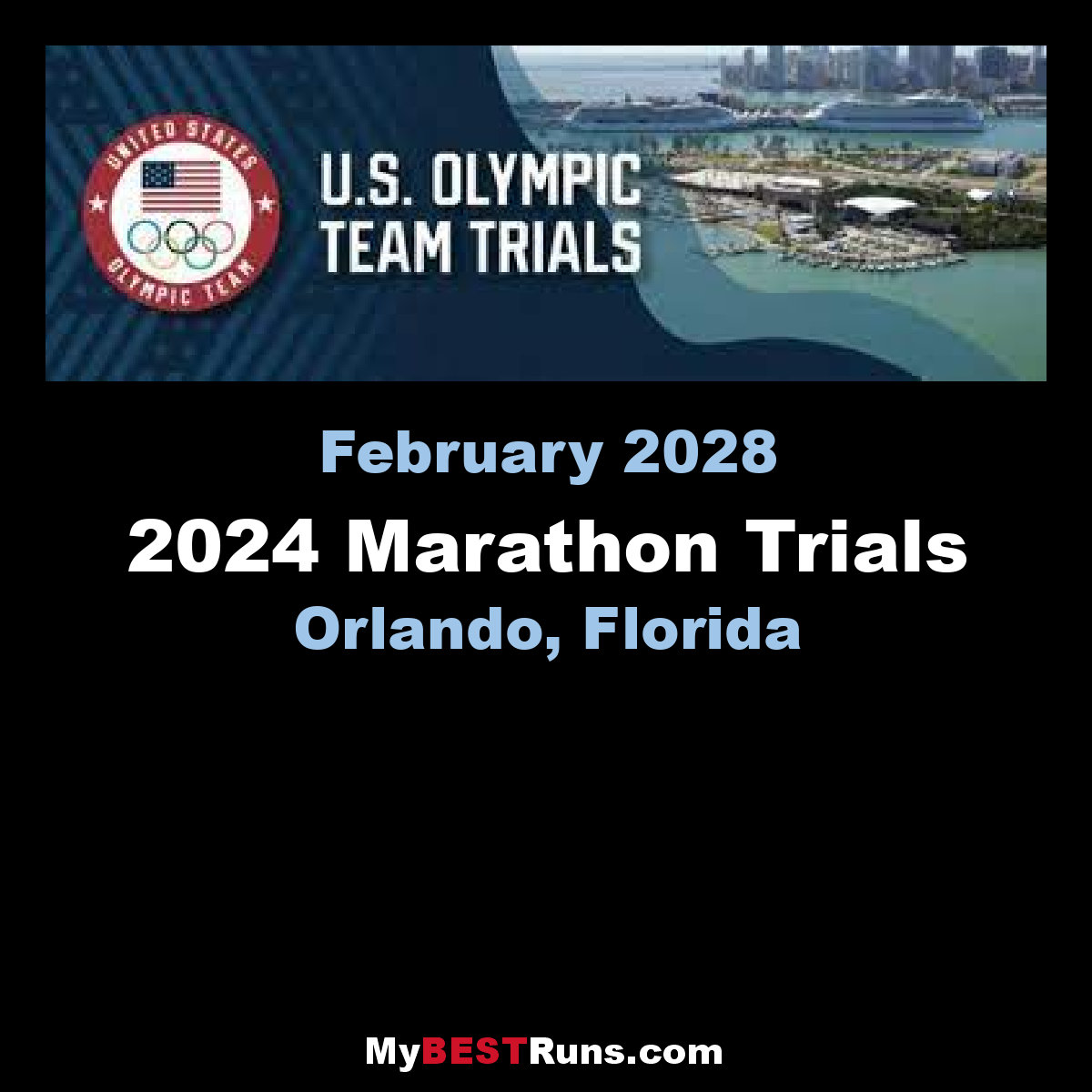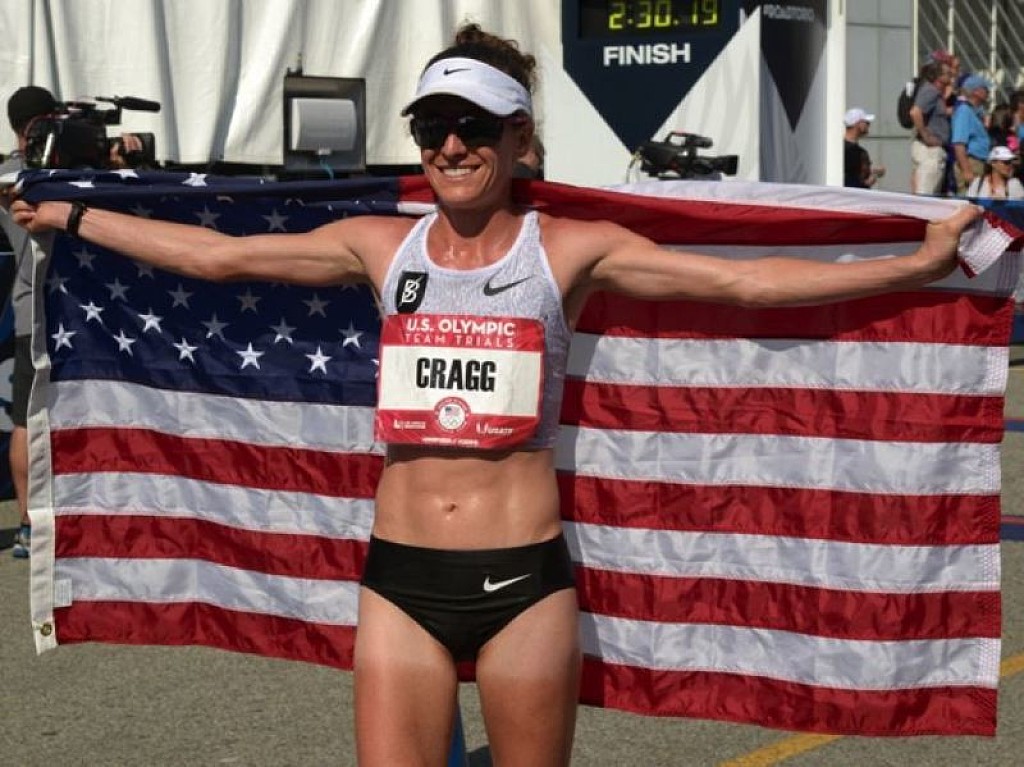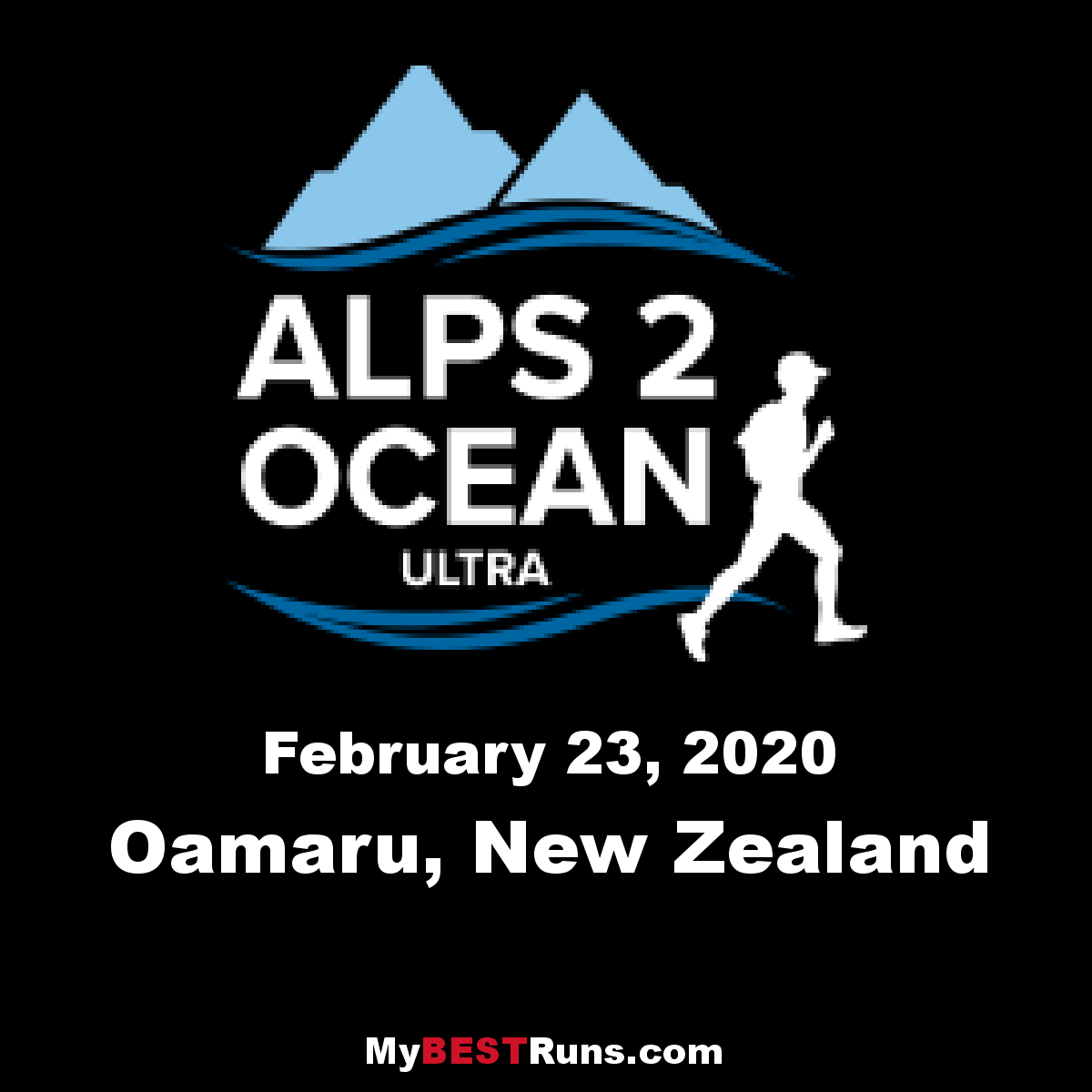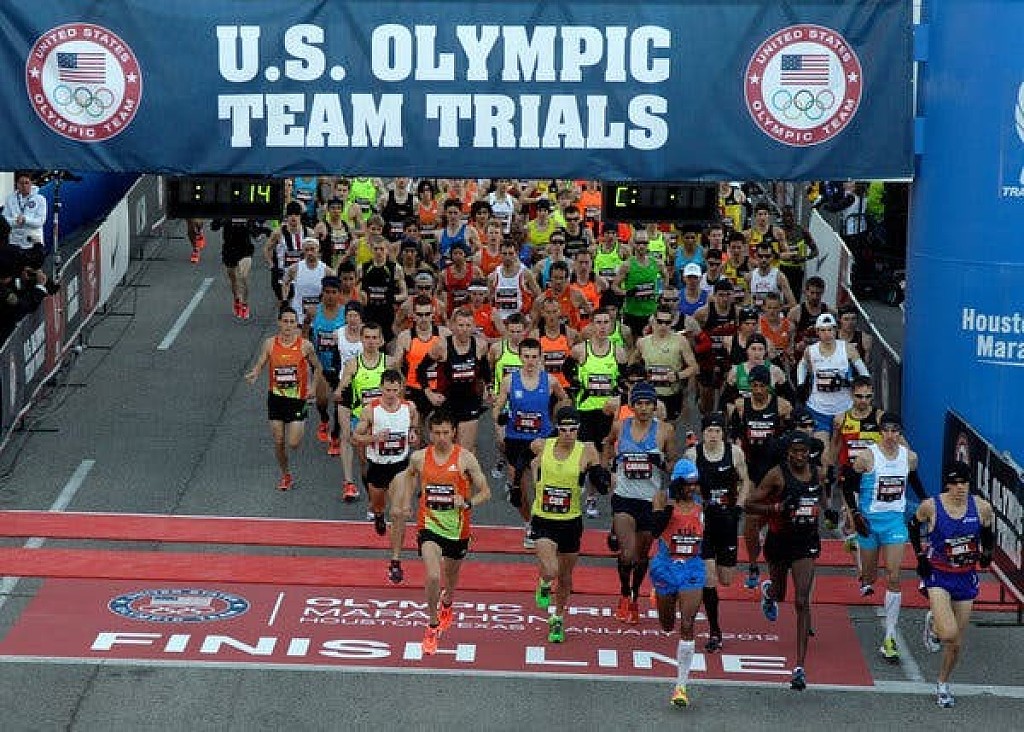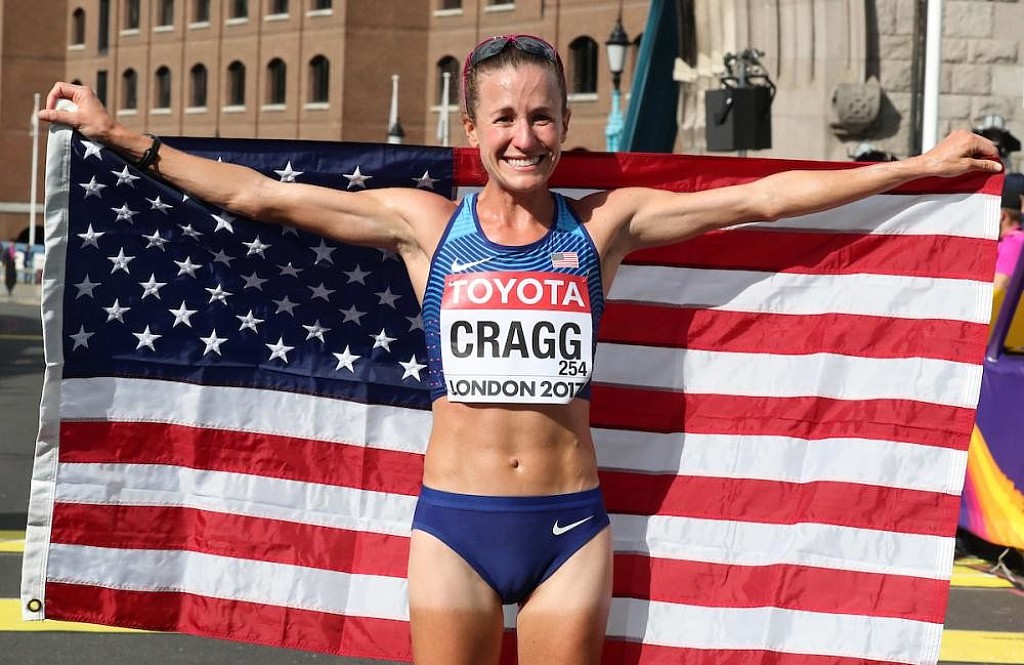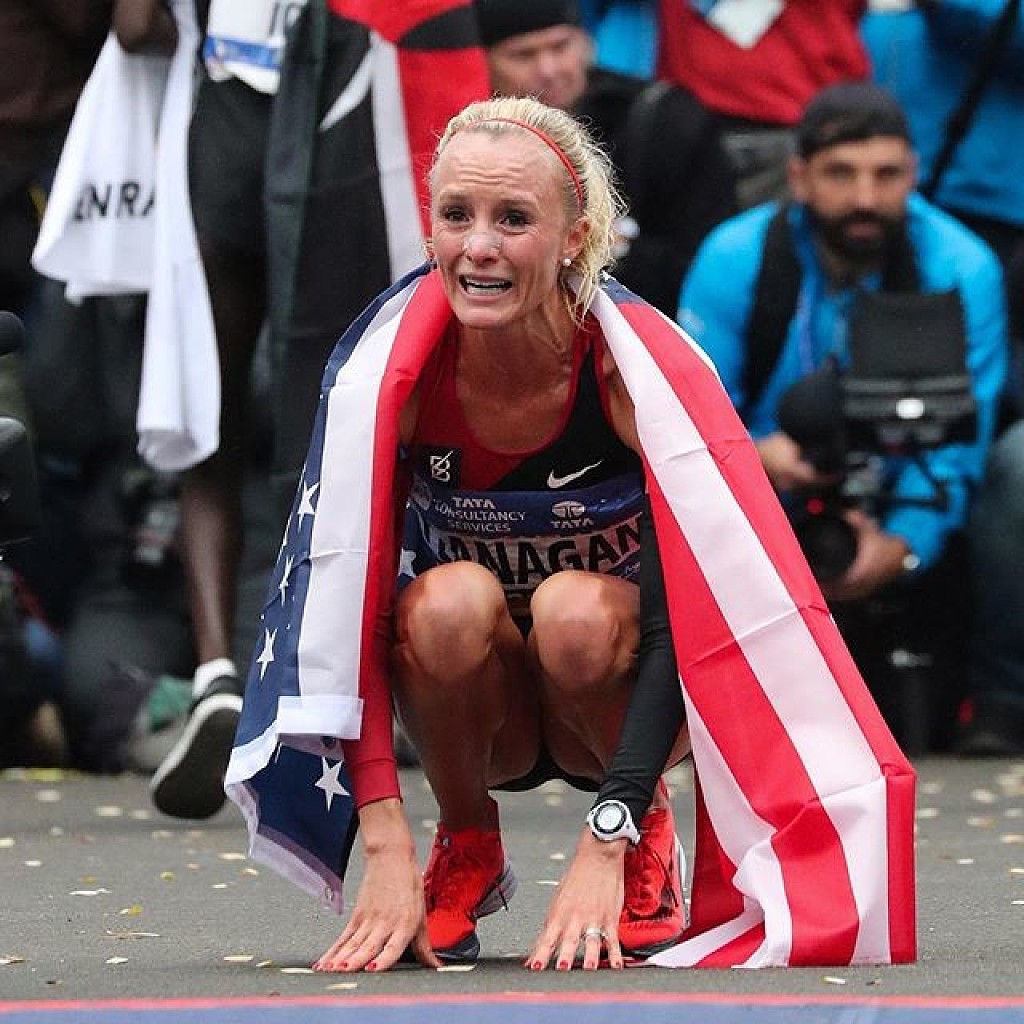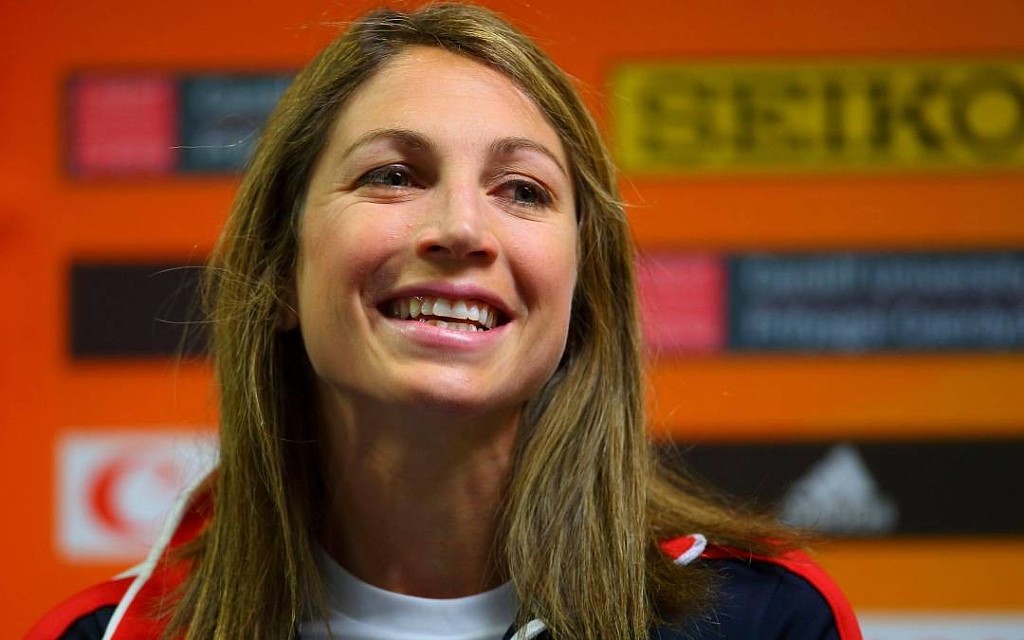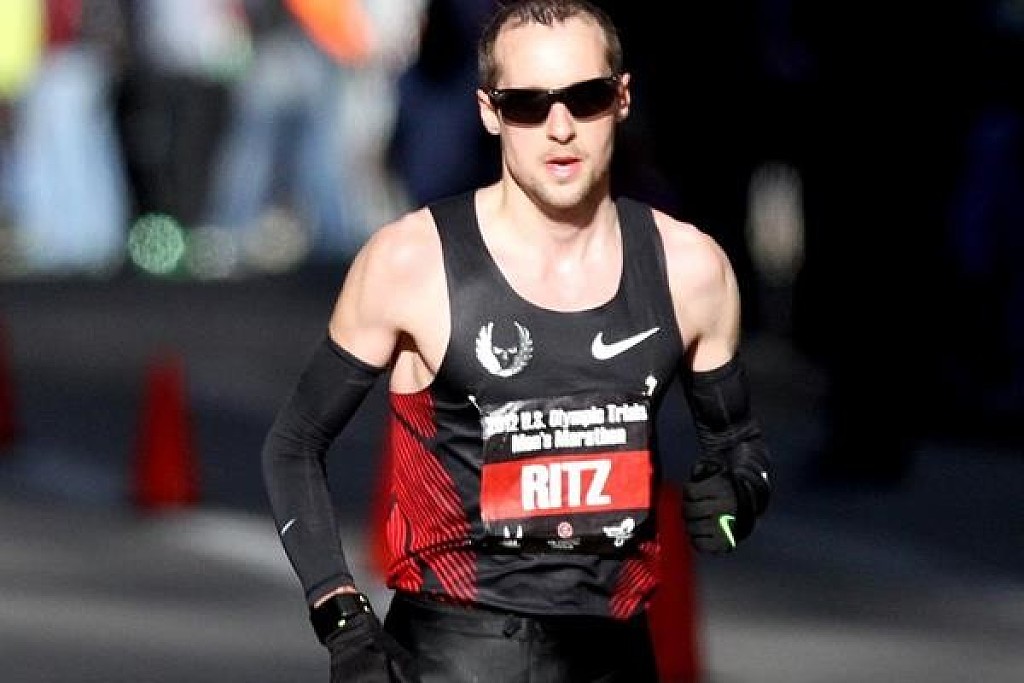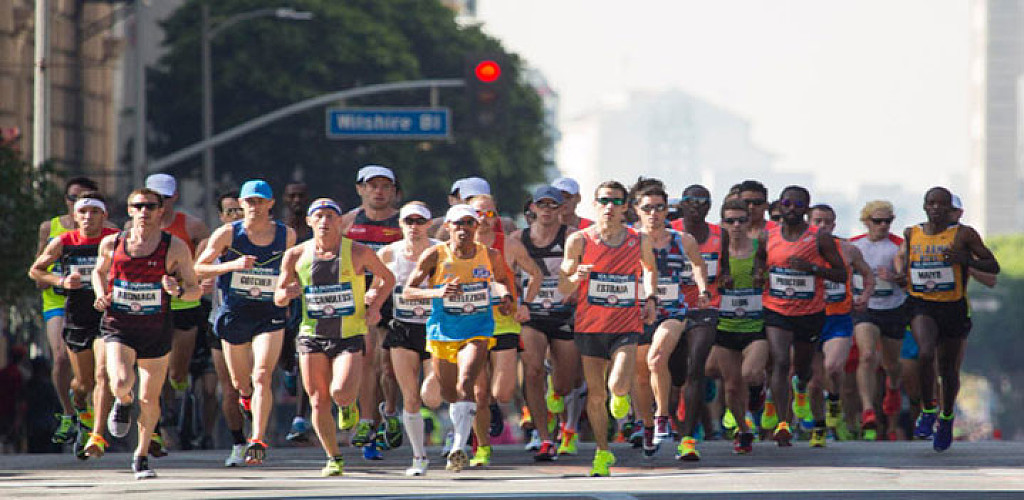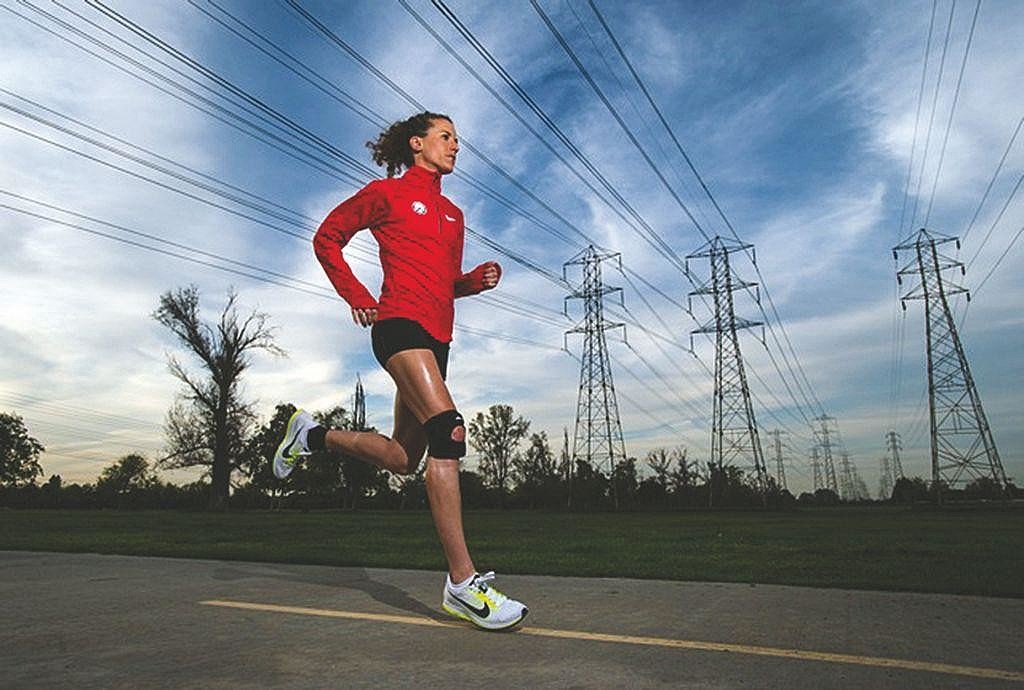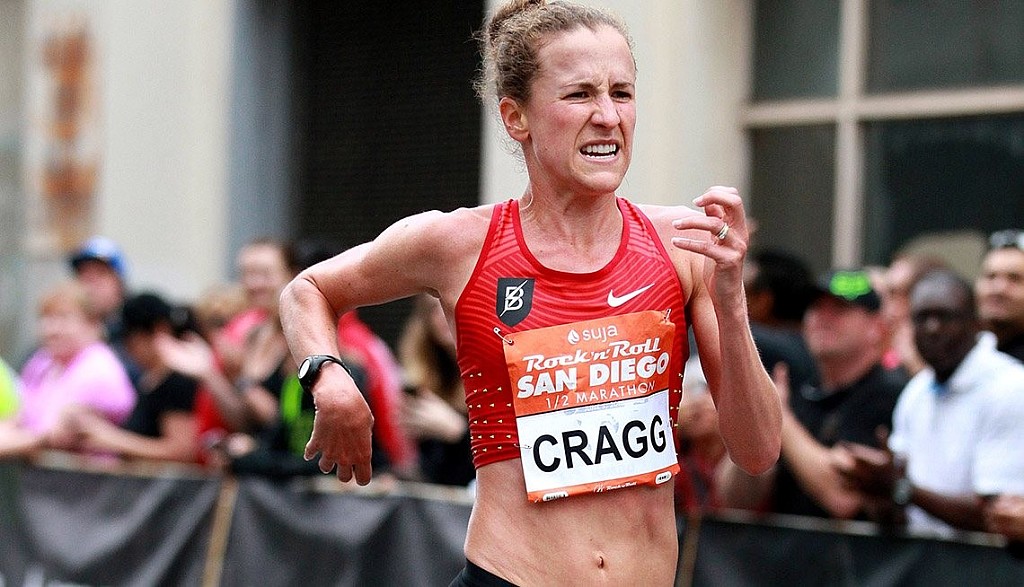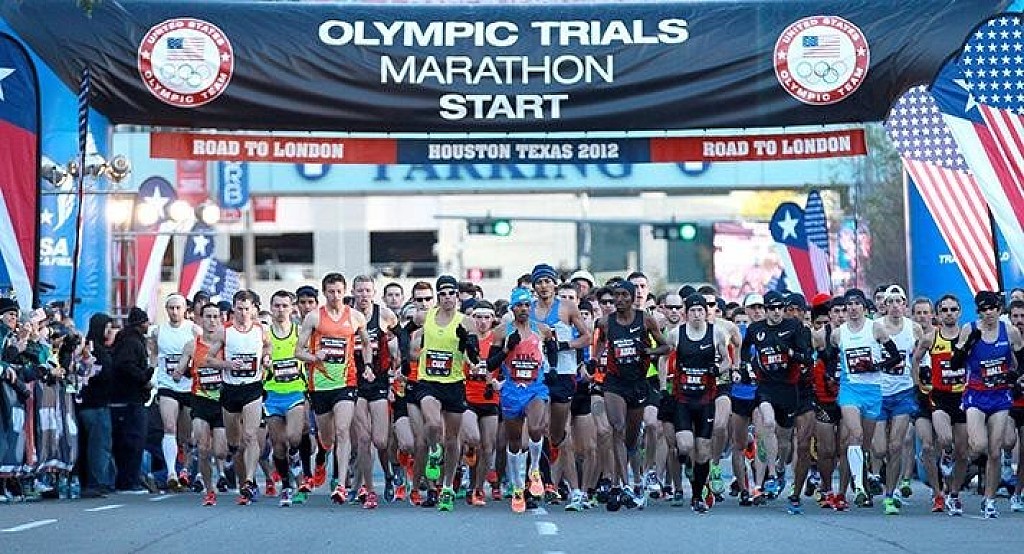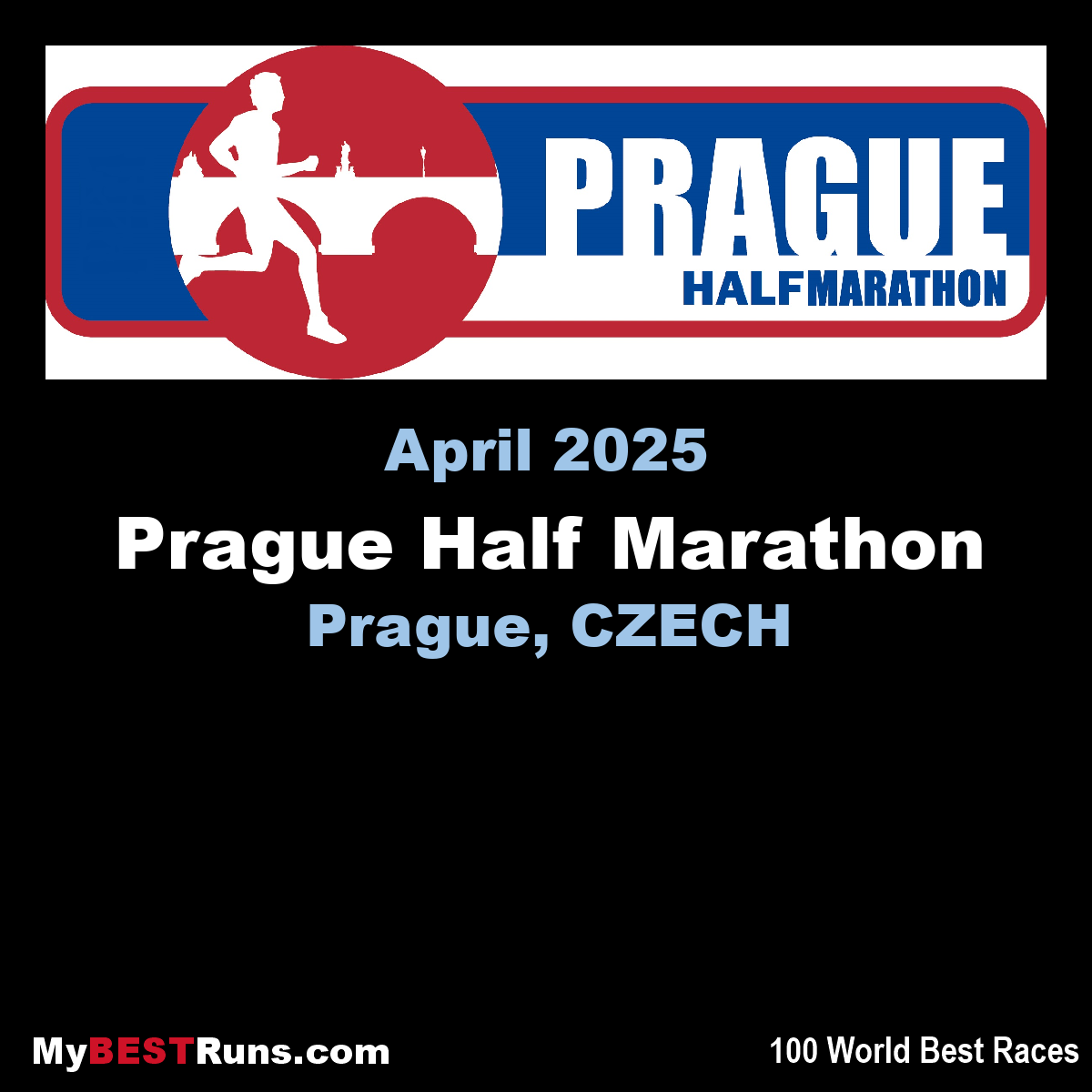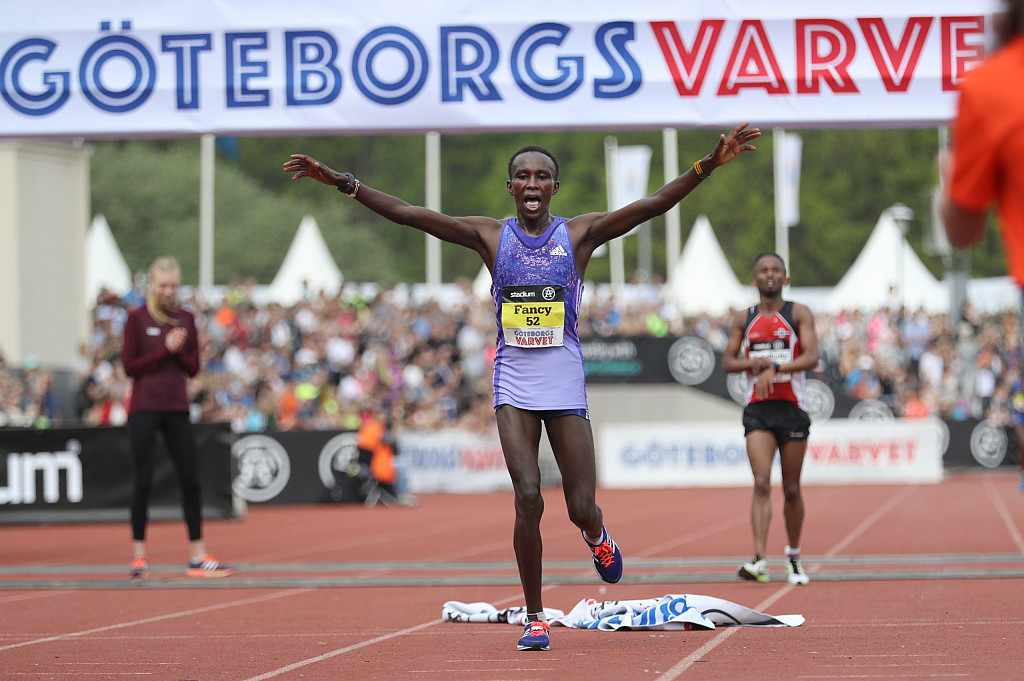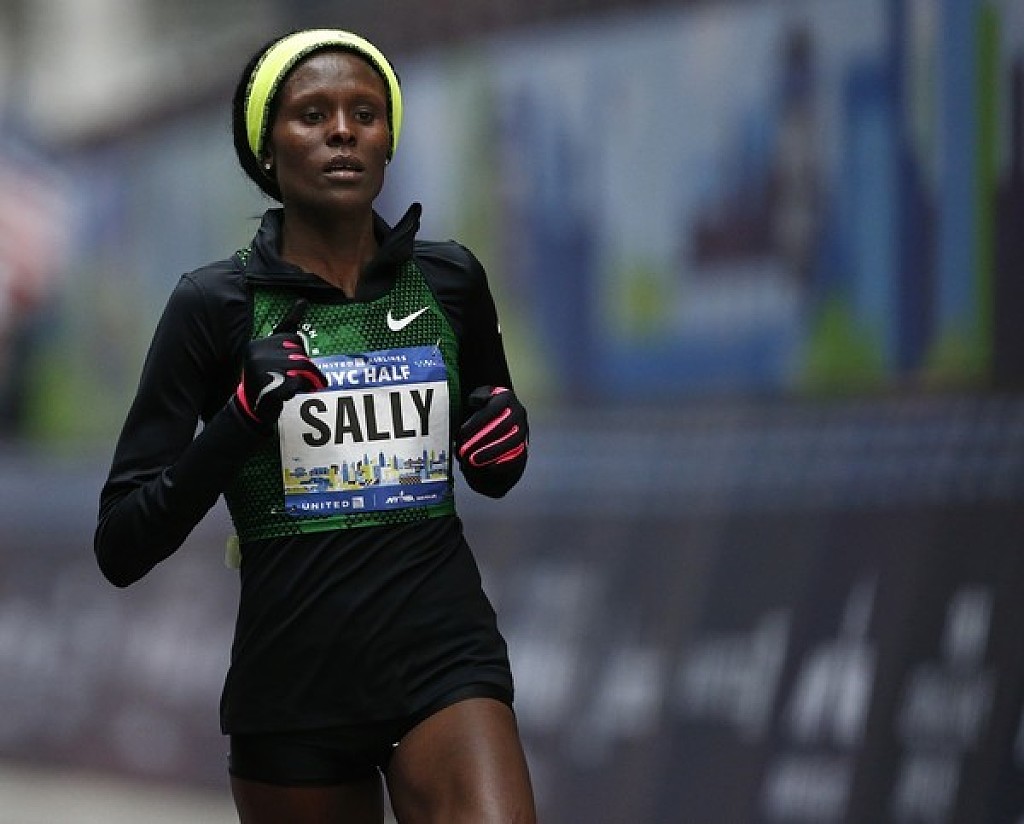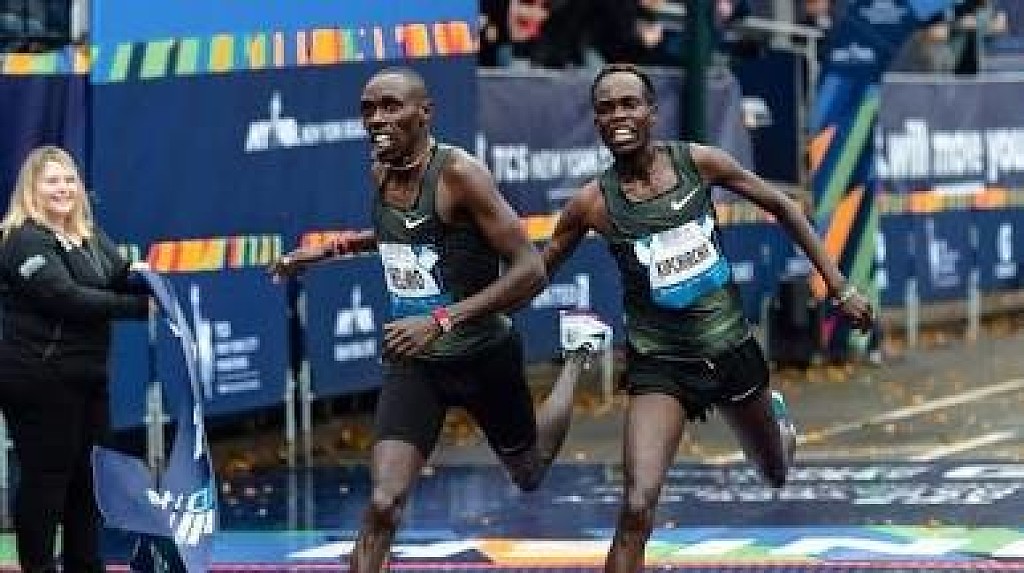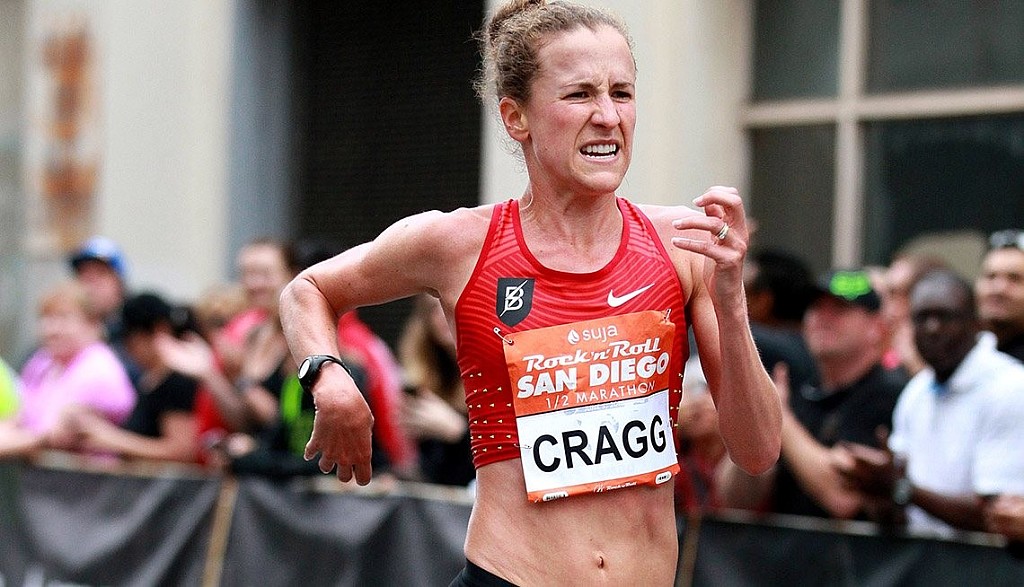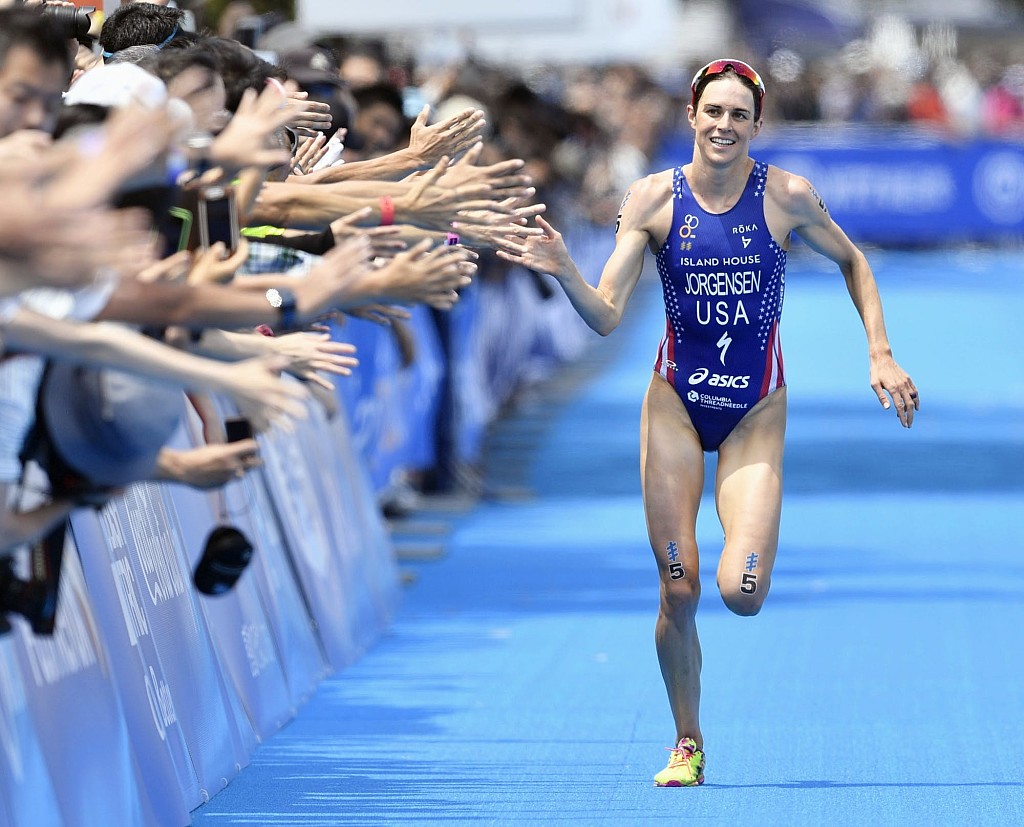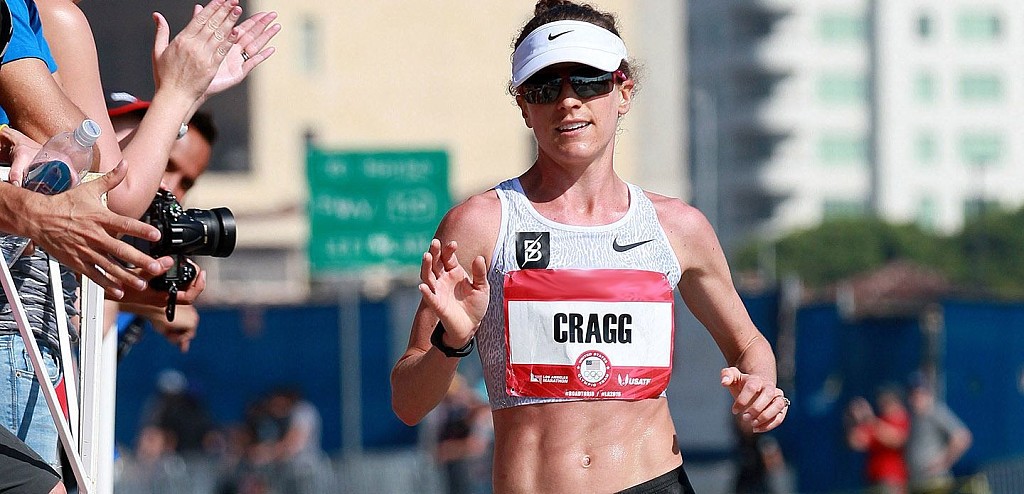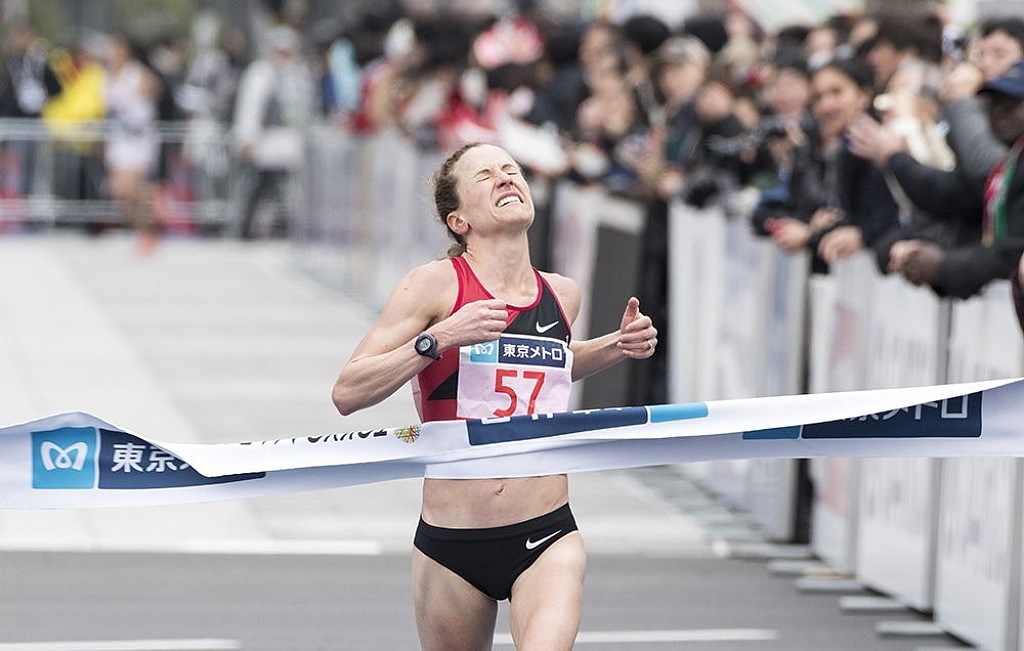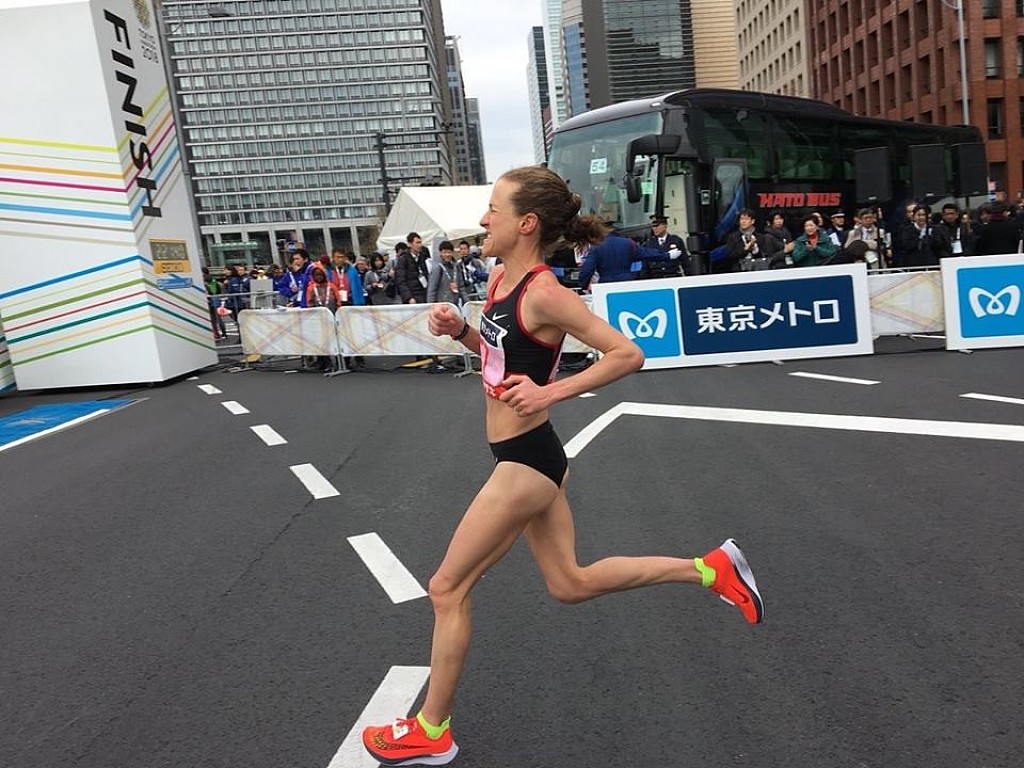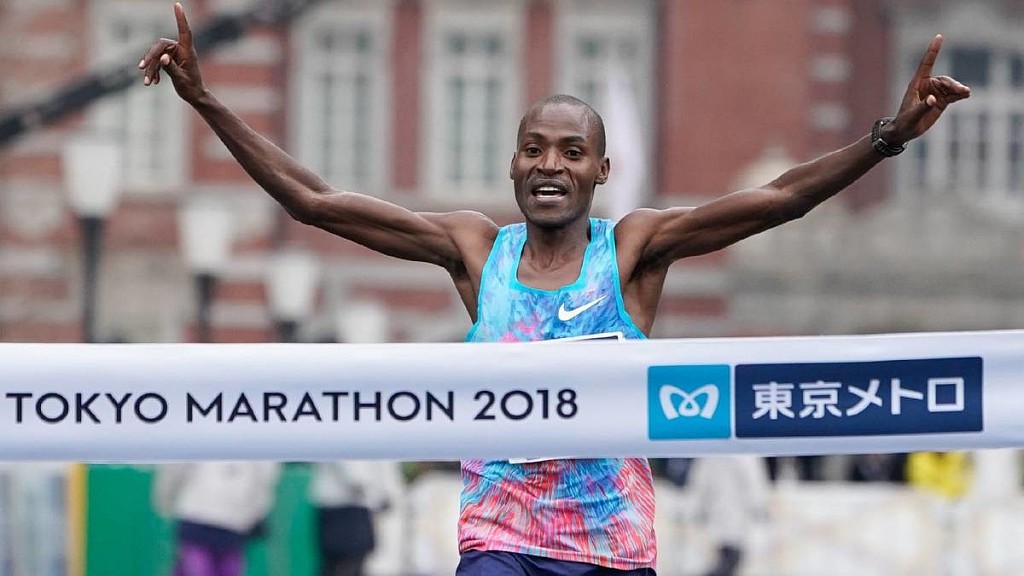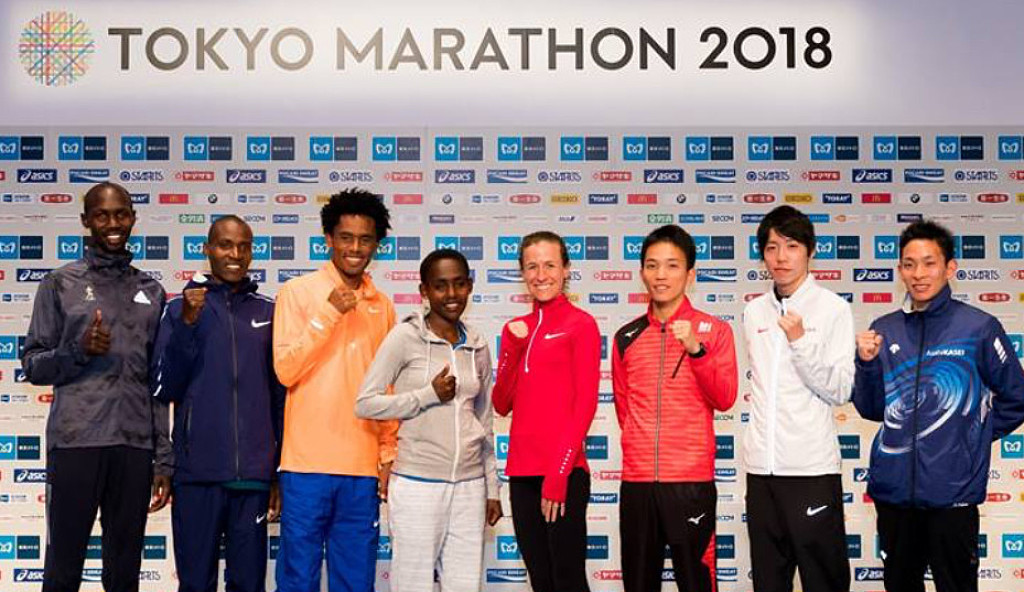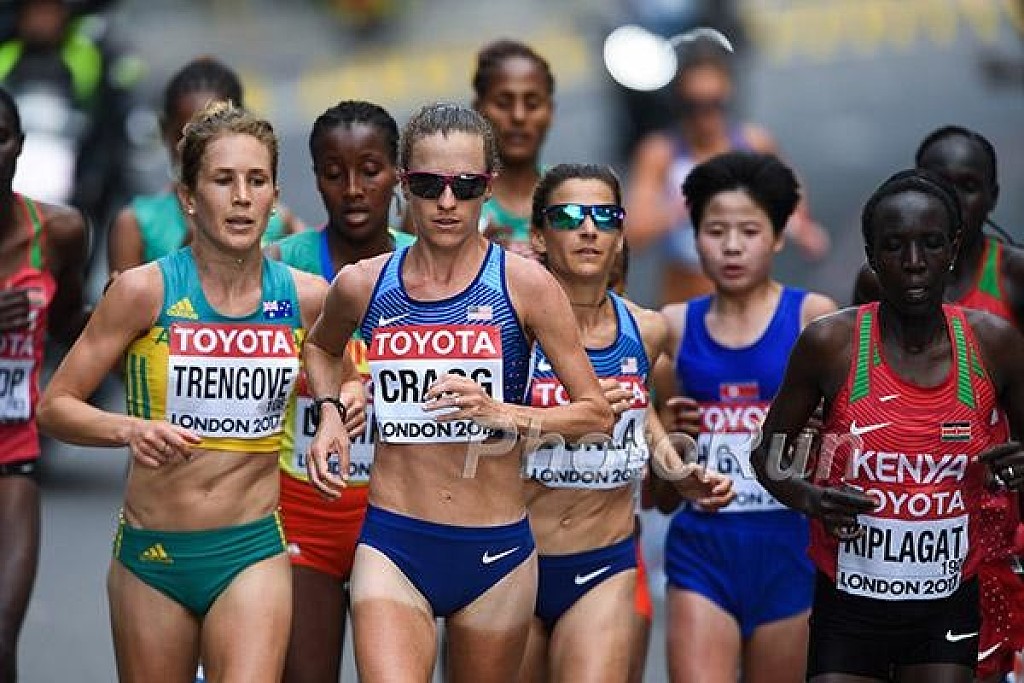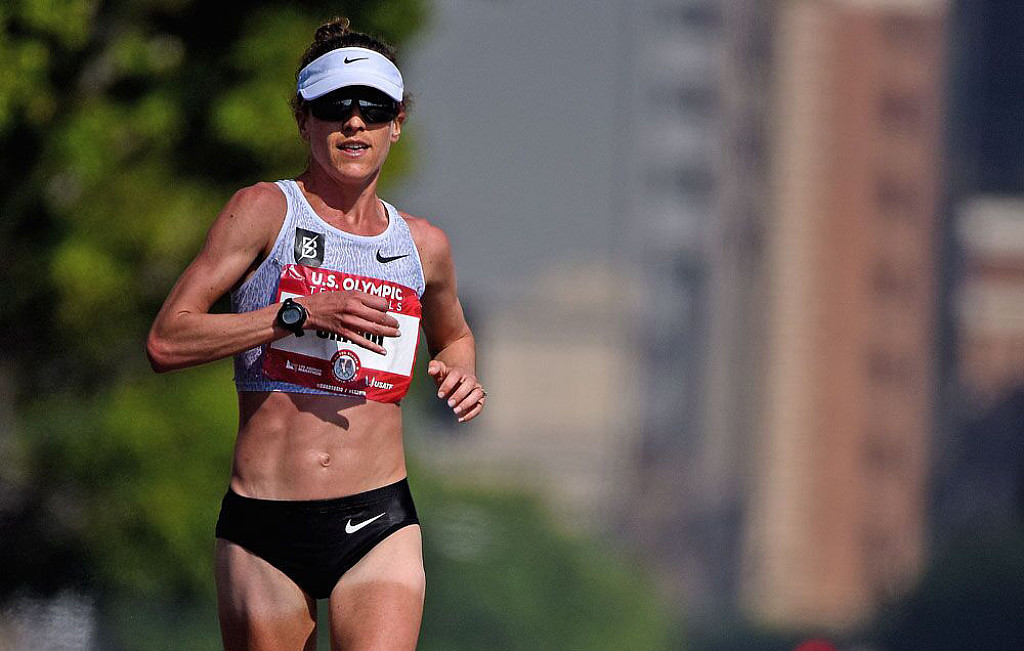Running News Daily
Running News Daily is edited by Bob Anderson. Send your news items to bob@mybestruns.com Advertising opportunities available. Train the Kenyan Way at KATA Kenya and Portugal owned and operated by Bob Anderson. Be sure to catch our movie A Long Run the movie KATA Running Camps and KATA Potato Farms - 31 now open in Kenya! https://kata.ke/
Index to Daily Posts · Sign Up For Updates · Run The World Feed
Articles tagged #Amy Cragg
Today's Running News
U.S. Olympic Marathoners Will Race the Bolder Boulder 10K as a Pre-Paris Tune-Up
Conner Mantz, Clayton Young, and Leonard Korir will run in the International Pro Team Challenge on May 27.
Memorial Day is always an exceptional celebration for runners in Boulder, Colorado, but this year, it will have some extra special Olympic flair.
On Monday, May 27, more than 40,000 runners will run through the city that’s known for the iconic Flatirons rock formations, the Pearl Street pedestrian mall, and an exceptionally active population in the annual Bolder Boulder 10K. Now in its 44th year, it’s been one of the top road running races in the U.S. since its inception, and this year will serve as one of the final tune-ups for the men’s U.S. Olympic marathon squad before racing in the Paris Olympics later this summer.
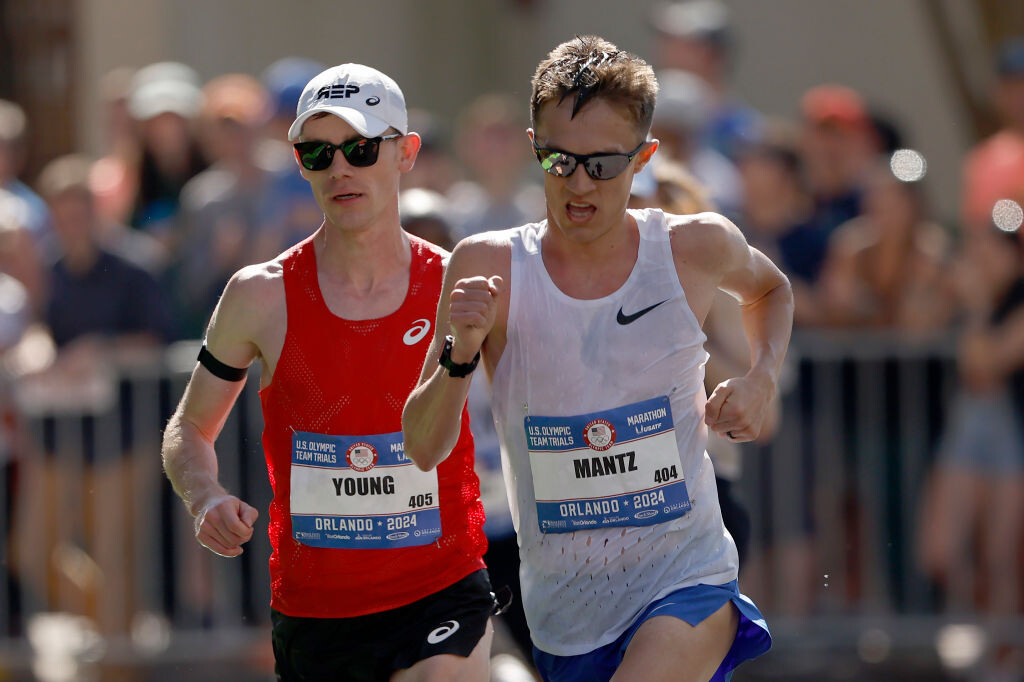
Conner Mantz, Clayton Young, and Leonard Korir, the top three finishers in the 2024 U.S. Olympic Trials who will be racing the marathon in the Paris Olympics on August 10, will be competing as Team USA Red in the Bolder Boulder’s International Pro Team Challenge that follows the citizen’s races. (Korir is expected to officially be named to the U.S. team in early May based on final pre-Olympic international rankings.)
The pro race, which has a prize purse of $83,700 before potential bonuses, is one of the things that makes the Bolder Boulder so unique. After all the runners in 98 citizen waves have completed the race, professional men’s and women’s international teams from more than a dozen countries compete on the same course for team and individual titles. The races feature a staggered start, with women beginning 15 minutes before the men so the winners of each race will finish about 10 minutes apart inside the University of Colorado’s Folsom Field football stadium.
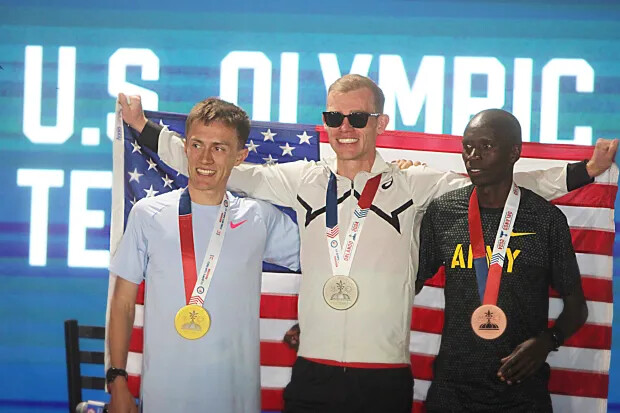
The finishing moments are among the thrilling spectacles in American running. By that point, the stadium is filled with a near-capacity crowd of roaring runners, family, and friends who have been watching the action play out on the massive video screens.
“The finish in the full stadium is like nothing else in the sport,” says Mantz, 27, who won the men’s race last year in 29:08 with a thrilling late-race surge to pass Kenya’s Alex Masai in the final 200 meters before the finish. “It was pretty electric. It took away all the pain you’re feeling mid-race. I was like, ‘Just race as hard as you can.’”
Team USA Red will have plenty of competition, from Team USA White, the secondary American team of Jared Ward, Futsum Zienasellassie, and Sam Chelanga, as well as teams from Kenya, Ethiopia, Mexico, and Rwanda. Teams are scored like a cross country race, with points awarded on the basis of finishing place, which means the team with the lowest combined score for all three runners is the winner. Ties are decided by the positions of the third-place finishers.
The women’s Team USA Red team will be led by defending champion Emily Durgin, along with Sara Hall and Boulder native Nell Rojas. Durgin finished ninth at the U.S. Olympic Trials in February and won the USATF 10 Mile Championships on April 7 in Washington D.C. At last year’s Bolder Boulder, she stormed to victory in 33:24, winning by 24 seconds over Kenya’s Daisy Kimeli.
Hall placed fifth in the U.S. Olympic Trials Marathon on February 3 in a U.S. master’s record (2:26:06) and 15th in the Boston Marathon on April 15. The women’s Team USA White roster will be composed of an all-University of Colorado alumnae squad—Makena Morley, Sara Vaughn, and Carrie Verdon.
“I can’t wait to be back in Boulder for the best day of the year,” says Durgin, 29, who will compete in the U.S. Olympic Trials 10,000 meters on the track in late June with the hopes of making the U.S. Olympic team. “Competing with Nell and Sara will make the experience even better.”
The women’s U.S. Olympic marathon team of Fionna O’Keefe, Emily Sisson, and Dakotah Lindwurm were invited to race in the Bolder Boulder but each runner declined, citing scheduling timing conflicts or a disinterest in racing at Boulder’s lofty altitude (5,430 feet). All of the runners who are racing for the U.S. teams in Boulder live at 4,500 feet or higher.
An Olympic Legacy
Boulder is known as one of the top running meccas in the U.S., in part because elite-level American and international runners have made it their training base since Olympic gold medalist Frank Shorter arrived in the early 1970s. Emma Coburn, Jenny Simpson, Yared Nuguse, Joe Klecker, Jake Riley, Hellen Obiri, and Edna Kiplagat are among the many top-level runners who are currently training in Boulder. Shorter, the 1972 marathon gold medalist, was a co-founder of Bolder Boulder 10K in 1979, and helped it grow into one of the country’s largest races.
Since then, numerous U.S. Olympians have raced in the Bolder Boulder, including Deena Kastor (a three-time women’s champion), Aliphine Tuliamuk (the 2022 women’s winner), Alan Culpepper, Elva Dyer, Ryan Hall, Abdi Abdirahman, Jorge Torres, Shalane Flanagan, Amy Cragg, Magdalena Boulet, and Libby Hickman, as well as Korir (who won it in 2022), and Ward (who was fourth in 2022).
Thanks to Boulder’s robust running community and the prestige of the race, the Bolder Boulder has also always featured fast sub-elite runners competing in the early citizen waves. Yet, the race has also celebrated dedicated middle-of-the-pack runners, as well as the first-time runners and walkers in the later waves. It was one of the first races to have bands playing along the course (as well as belly dancers and other entertainers), runners dressed up in costumes, elite wheelchair races, and in recent years, it has been known for a mid-race slip-and-slide and unofficial bacon aid station.
For the past 25 years, the Bolder Boulder has organized a special Memorial Day tribute—one of the largest in the country—that honors military veterans and new cadets.
The U.S. men’s Olympic marathon team competing in this year’s Bolder Boulder will be a legacy moment for the race, says Bolder Boulder race director Cliff Bosley.
“Having the three men that will represent our country in the marathon at this summer’s Paris Olympic Games is something we are extremely proud of,” Bosley says. “All three ran here last year, and to have them back is just incredible for the race, the city of Boulder, and the sport of running.”
by Brian Metzler
Login to leave a comment
Ethiopians Jemal Yimer (60:42) and Sutume Kebede (64:37) won the overall titles in Houston Half
In what is becoming an annual tradition, Weini Kelati ran 66:25 on Sunday to break the American record at the 2024 Aramco Houston Half Marathon. It was the third straight year the record was broken in Houston as the 27-year-old Kelati, making her half marathon debut, followed in the footsteps of Sara Hall (67:15 in 2022) and Emily Sisson (66:52 in 2023) to become a record-breaker in Houston. Sunday marked the third time the record had been broken in the past year as Keira D’Amatolowered Sisson’s record to 66:39 at the Asics Half Marathon in Australia in July.
Kelati finished 4th overall as Ethiopia’s Sutume Kebede, a late addition to the women’s field, upset Hellen Obiri to win in 64:37, a US all-comers record that moves her into a tie for 9th on the all-time list. The time was a pb of more than three minutes for Kebede, who was previously best known for finishing 3rd at the 2020 Tokyo Marathon and running 2:18:12 at the 2022 Seoul Marathon. Obiri, who was with Kebede through 10k (30:28) faded over the second half and wound up a distant 2nd in 66:07.
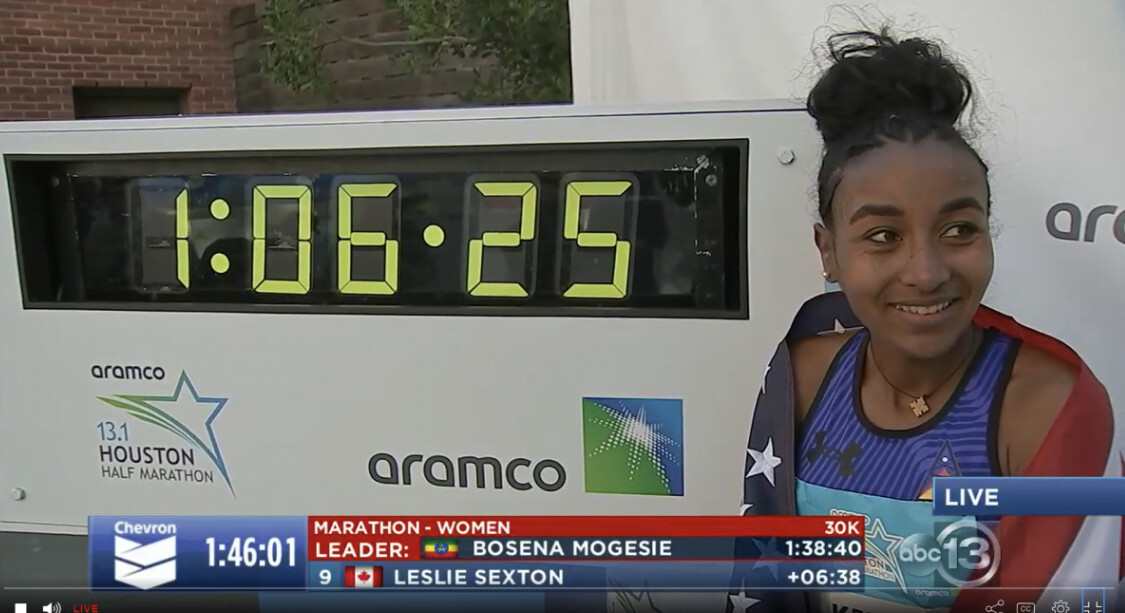
The men’s race came down to a five-man sprint finish with Ethiopia’s Jemal Yimer, who won in Houston in 2020 and was 4th at the World Half Marathon Championships in October, prevailing in 60:42. Wesley Kiptoo of NAZ Elite and Kenya was 2nd for the second straight year in 60:43 with 2022 champ Milkesa Mengeshaof Ethiopia 3rd in 60:45.
Biya Simbassa was the top American man in 60:45 in 4th, just ahead of a resurgent Diego Estrada, who led for the first 20 minutes and finished 5th in a pb of 60:49. Galen Rupp, tuning up for the Olympic Marathon Trials three weeks from now, hung back from the leaders and finished 14th in 62:37.
In the Chevron Houston Marathon, contested simultaneously, former NAIA star Zouhair Talbi of Morocco won the men’s race in 2:06:39 to boost his chances of Olympic selection. 2016 NCAA XC champion Patrick Tiernan, now training as part of Alistair and Amy Cragg’s Puma Elite Running team in North Carolina, was 4th in 2:07:45, hitting the Olympic standard and moving to #2 on the all-time Australian marathon list.

Ethiopia’s Rahma Tusa, the runner-up behind American Betsy Saina in September’s Sydney Marathon, won the women’s marathon in Houston in 2:19:33.
The races featured temperatures in the low 40s with 10 mph winds and gusts up to 17 mph, which made for a challenging end to the half marathon as miles 9, 10, and 11 were run directly into the teeth of the wind.
Below, six takeaways from the day’s racing in Houston.
2024 Houston Half Marathon men’s top 51. 60:42 Jemal Yimer, Ethiopia2. 60:43 Wesley Kiptoo, Kenya3. 60:45 Milkesa Mengesha, Ethiopia4. 60:45 Biya Simbassa, USA5. 60:49 Diego Estrada, USA14. 62:37 Galen Rupp, USA
2024 Houston Half Marathon women’s top 51. 64:37 Sutume Kebede, Ethiopia2. 66:07 Hellen Obiri, Kenya3. 66:24 Buze Diriba, Ethiopia4. 66:25 AR Weini Kelati, USA5. 67:36 Mestawut Fikir, Ethiopia
by Jonathan Gault (Let’s Run)
Login to leave a comment
Aramco Houston Half Marathon
The Chevron Houston Marathon provides runners with a one-of-a-kind experience in the vibrant and dynamic setting of America's fourth-largest city. Renowned for its fast, flat, and scenic single-loop course, the race has earned accolades as the "fastest winter marathon" and the "second fastest marathon overall," according to the Ultimate Guide to Marathons. It’s a perfect opportunity for both elite athletes...
more...3-time champion Molly Huddle is ready for 2023 NYC Half
The United Airlines NYC Half came into Molly Huddle‘s life in 2014 and it was one of the key turning points in the now 38 year-old’s storied career. Never a fan of cross country or indoor track, the 28-time national champion liked to de-camp from her Providence, R.I., home in the winter to put in her pre-season base miles in the warmth of Arizona. The NYC Half, with its mid-March date, was the perfect race to close-out her winter training block. Her long-time coach Ray Treacy, whom Huddle affectionately calls “The Guru,” gave his blessing and she signed-up for the 2014 race. It would be her first-ever half-marathon.
With the temperature right at the freezing mark, Huddle ran the entire race with the leaders. She went through the first 10-K in 33:01, and the second in a much faster 32:21 as the pace heated up. Although too far behind eventual winner Sally Kipyego (1:08:31), she finished a close third to eventual 2014 Boston Marathon champion Buzunesh Deba, 1:08:59 to 1:09:04.
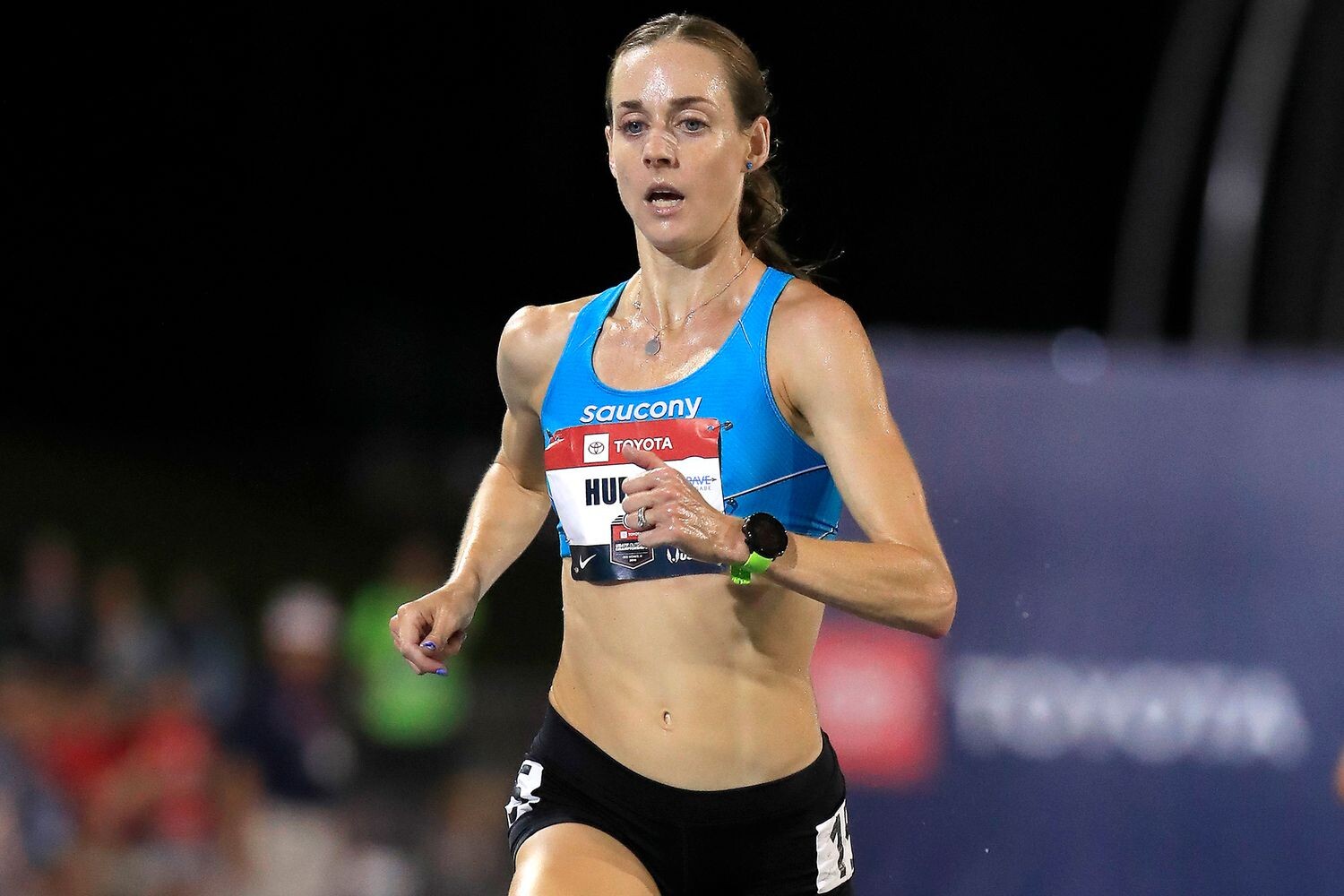
“It was good,” a shivering Huddle told Race Results Weekly’s Chris Lotsbom that day. “I think I stuck my nose in it in the beginning and the distance got to me a little in the end, but it was definitely a fun experience. I definitely want to do another one.”
The rest, shall we say, is history.
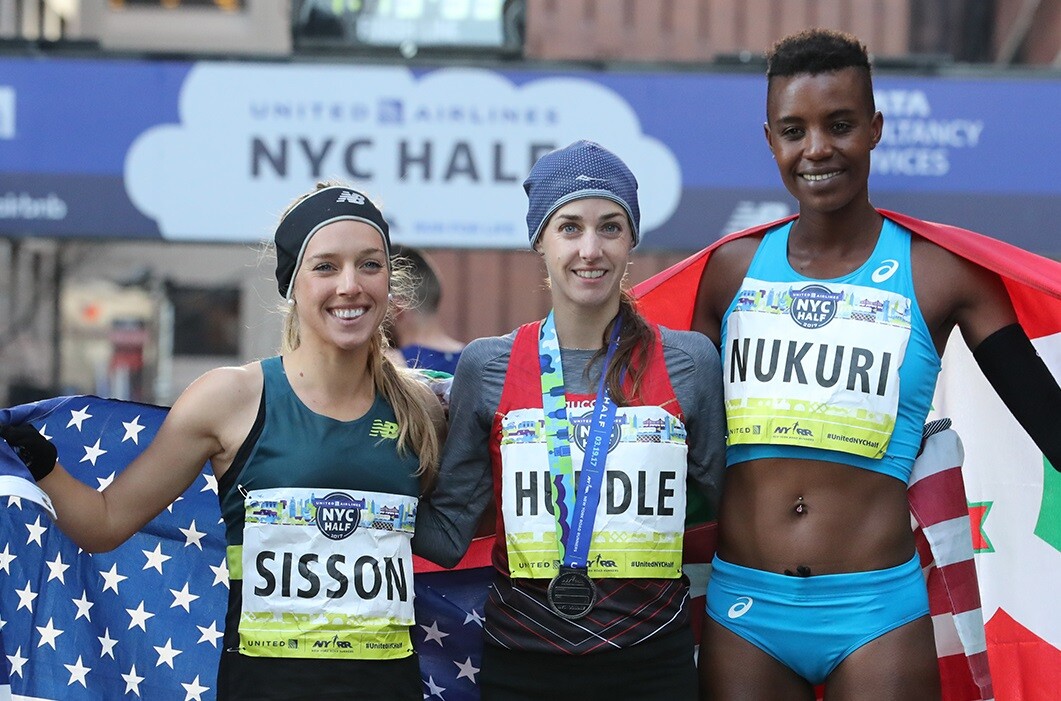
For the next three years Huddle would repeat the same winter program, training in Arizona then coming to New York for the NYC Half before starting her track season*. She won in 2015, 2016 and 2017, and in the 2016 race she set the still-standing USATF record for an all-women’s race: 1:07:41. During her reign at the top, she beat top athletes like Sally Kipyego, Caroline Rotich, Des Linden, Aliphine Tuliamuk, Buzunesh Deba, Emily Sisson, Edna Kiplagat, Diane Nukuri, and Amy Cragg. She also lowered her 10,000m personal best from 31:28.66 to an American record 30:13.17, a mark which would stand for more than six years until Alicia Monson broke it just 11 days ago at The Ten in San Juan Capistrano, Calif. She also collected $65,500 in prize money from the event which is organized by New York Road Runners.
Huddle returns to the NYC Half for the first time in six years on Sunday, but she’s no longer focused on winning. The race comes about 11 months after she, and husband Kurt Benninger, had their first child, daughter Josephine Valerie Benninger, whom Huddle calls “JoJo.” Speaking to Race Results Weekly at a press event yesterday in Times Square, she reflected on her history with the race.
“The last time I did the Half was 2017, I think, so a long time,” said Huddle, wearing a warm hat and jacket on a cold, late-winter day. “Great to be back. Great to be running again seriously after having the baby in April. So, this will be a good test.”
Huddle has been slowly building her fitness since giving birth to Josephine. She first returned to racing last August at the low-key Bobby Doyle Summer Classic 5 Mile in Narragansett, R.I., –very close to her home– clocking 29:17. Since then she has run in a series of local races in New England –a pair of 10-K’s, a 5-K cross country, and a half-marathon– to regain her racing chops.
Then, in January of this year, she ran the super-competitive Aramco Houston Half-Marathon and clocked a very good 1:10:01, a mark which qualified her for the 2024 USA Olympic Team Trials Marathon. She went back to training, and the NYC Half should give her a good reading on her progress.
“I’m really happy to fit it back in the schedule,” said Huddle, who is still breastfeeding and will be pumping while she is in New York (Kurt is with Josephine at home in Providence). “I feel like I’m having more baseline workouts now, less of a building phase and more back to normal. I’ve had a few little injury problems last month, but I’m coming around.”
A well-traveled athlete, Huddle is sticking close to home for her races now. New York is a three and one-half hour drive (or train ride) from Providence.
“I love racing within a drive distance of home now because of the baby, and this is an easier race for me to get to,” Huddle said. “So that’s good.”
Sunday’s race has yet another purpose for Huddle. It will kick-off her training for her next marathon, a distance that she hasn’t taken on since the 2020 Olympic Trials in Atlanta when she was forced to drop out with an injury. Although she wasn’t at liberty to reveal which race it will be, she said that the timing of the NYC Half was perfect, just like it always was.
“So, I’m really focusing more on the roads now; it fits in really well with that plan now,” Huddle said. She continued: “This is going to kick off a marathon build-up for me, so this will be a really good race to fit into my marathon block as we go forward the next two months.”
by David Monti
Login to leave a comment
United Airlines NYC Half-Marathon
The United Airlines NYC Half takes runners from around the city and the globe on a 13.1-mile tour of NYC. Led by a talent-packed roster of American and international elites, runners will stop traffic in the Big Apple this March! Runners will begin their journey on Prospect Park’s Center Drive before taking the race onto Brooklyn’s streets. For the third...
more...Questions Arise About Selection of 2024 Olympic Marathon Trials Site
The USATF national office overrode a recommendation from its board of directors that Chattanooga host the Trials.
Despite a recommendation from the USA Track & Field (USATF) board of directors that Chattanooga be named the host city for the 2024 Olympic Marathon Trials, the city will not host the event. Instead, Orlando, the only other city to bid on the Trials, was named as the host city.

According to minutes from the October 9 USATF board meeting held in Miami Beach, recently posted to USATF’s website, the board issued “an advisory vote of approval for the 2024 USATF U.S. Olympic Trials - Marathon bid to be awarded to Chattanooga, Tennessee. Final approval still remains with the USATF National Office.”
The vote was unanimously carried with one abstention. But the national office announced on November 8 that Orlando would be getting the nod.
Runner’s World asked USATF spokesperson Natalie Uhl and CEO Max Siegel for clarification on why the national office overrode the board of directors. Uhl referred questions on the matter to Mike Conley, the chairman of the board of directors.
Conley wrote in an email to Runner’s World, “The [United States Olympic & Paralympic Committee] is looking into the matter and until I hear back from them I have no comment.”
The USOPC was unable to provide comment to Runner’s World immediately, but a spokesman said he would do so at a later time.
Multiple sources told Runner’s World both Orlando and Chattanooga performed well at site visits. But late in the selection process, after the board vote, Chattanooga’s bid was disqualified.
Neither USATF nor Conley would confirm that Chattanooga was disqualified nor explain why.
A board member, Jim Estes, had been involved as an advisor on Chattanooga’s bid. Estes had disclosed the relationship from the beginning—board members and other volunteers with USATF are required to file conflict of interest forms and keep them up to date—and Estes recused himself from voting on anything related to the Olympic Marathon Trials. His recusal is noted in the meeting minutes.
According to his LinkedIn profile, Estes previously worked in the USATF national office in Indianapolis for almost 12 years, from 2005 to 2016. For the last four, he was the director of events. He is now a consultant for events in the running industry.
Estes declined to comment to Runner’s World. The chief sports officer at the Chattanooga Sports Commission, Tim Morgan, was directing Chattanooga’s bid for the Trials. He did not return multiple calls and messages requesting comment.
The board bases its vote on recommendations from members of the men’s and women’s long distance running committees, volunteers who visit potential sites and evaluate the bids for what will help produce the strongest Olympic team and be best for the athletes.
At a November virtual meeting of USATF’s board of directors, the topic of the bid for the Olympic Marathon Trials came up again. But the discussion was held in executive session, meaning that what was discussed remains private. The executive session lasted for 15 minutes. Again, Estes recused himself from the session.
A similar disagreement marred the selection of the 2016 Olympic Marathon Trials. For that event, the men’s and women’s long distance running committees recommended that the Trials return to Houston, which had staged a successful Trials in 2012. Siegel overrode that decision and decided the Trials should be in Los Angeles, a larger media market.
That race in Los Angeles went off in warm conditions. February temperatures reached into the mid-70s, and several athletes struggled in the heat, with many claiming inadequate fluids on the course. For the men, Galen Rupp, Meb Keflezighi, and Jared Ward made the team. On the women’s side, Amy Cragg and Des Linden finished first and second, and Shalane Flanagan collapsed at the finish line in third place.
USATF is facing scrutiny about other administrative matters. In November, when the nonprofit organization’s most recent tax forms were made public, it showed Siegel had a total compensation package of $3.8 million in 2021. The chief operating officer, Renee Washington, made more than $1.6 million. Together, those two salaries represented more than 16 percent of the organization’s revenues.
Earlier this month, heptathlete Taliyah Brooks filed a lawsuit against USATF for failing to reschedule the heptathlon during extreme heat at the 2021 Olympic Track and Field Trials.
by Runner’s World
Login to leave a comment
Americans Hall, Bates, D’Amato Shine in World Championships Marathon A team effort pushed the Americans to three top-eight finishes
Ethiopia’s Gotytom Gebreslase ran the fastest, but Sara Hall, Emma Bates, and Keira D’Amato got the biggest cheers from the crowd at Monday morning’s world championship marathon in Eugene, Oregon.
Running in front of the home crowd, Hall, Bates, and D’Amato smartly hung back in the chase back for the first half of the race and then began to work their way up as some of the runners in the original lead pack began to blow up.
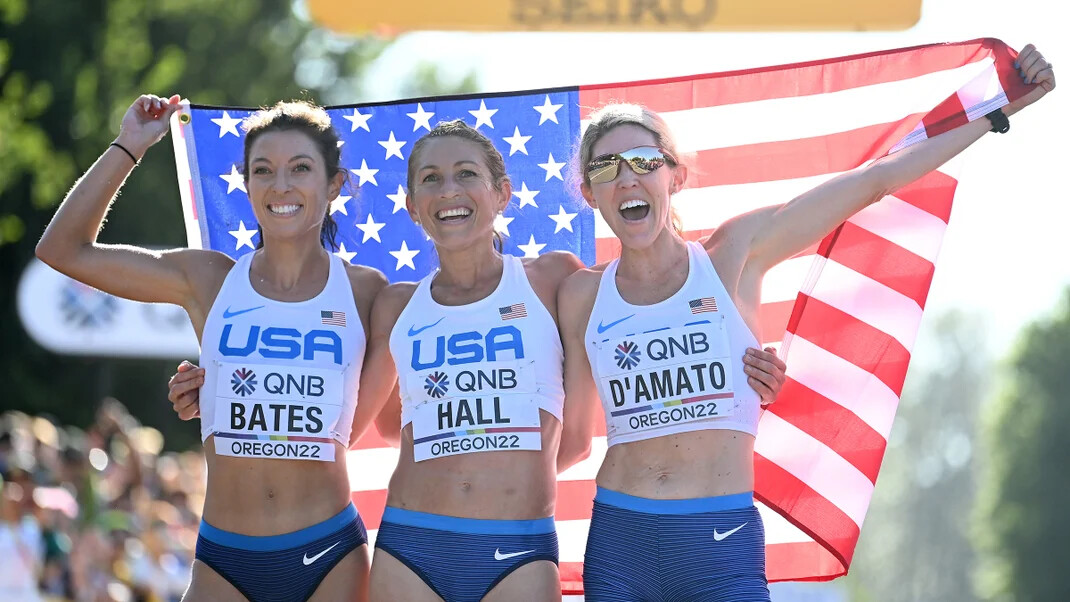
Hall (39, Crested Butte, Colorado) was the best of the bunch, surging throughout the final 8 miles of the race to place fifth in a season-best 2:22:10. She passed Kenya’s Angela Tanui (6th, 2:22:15) in the final mile but ran out of room in her pursuit of fourth-place finisher Nazaret Weldu of Eritrea (2:20:29). Hall’s finish was the best showing by an American woman in the world championships marathon since Amy Cragg earned the bronze in 2017 in London.
Bates (29, Boulder, Colorado) followed a similar strategy and wasn’t far behind in seventh in a new personal best of 2:23:18. D’Amato (37, Richmond, Virginia), who originally had gone out a bit harder only to get stuck in between the first two packs, eventually settled in with the chase pack alongside Hall, Bates, and British runner Jess Piasecki and Uganda’s Immaculate Chemutai.
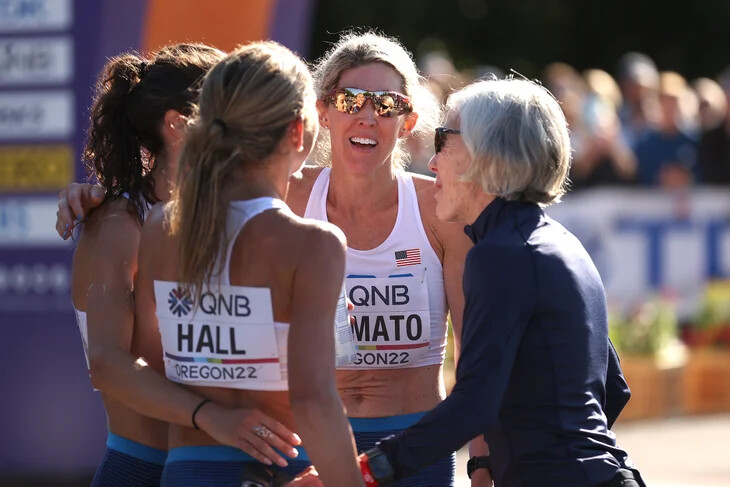
Hall, Bates, and D’Amato received roaring cheers from the crowd along the course that sent runners between Eugene and nearby Springfield, especially along the finish chute on Dr. Martin Luther King Drive. None had represented Team USA at a global outdoor championship before.
They were greeted at the finish line by American running legend Joan Benoit Samuelson, who won the 1984 Olympic marathon and served as the official starter of the women’s world championships race.
by BRIAN METZLER (Women's Running)
Login to leave a comment
World Athletics Championships Budapest23
Budapest is a true capital of sports, which is one of the reasons why the World Athletics Championships Budapest 2023 is in the right place here. Here are some of the most important world athletics events and venues where we have witnessed moments of sporting history. Throughout the 125-year history of Hungarian athletics, the country and Budapest have hosted numerous...
more...Ben Flanagan and Edna Kiplagat Win the 49th Annual ASICS Falmouth Road Race
Organizers of the 49th Annual ASICS Falmouth Road Race, one of America’s premier running events of the summer, officially brought road racing back to the streets of Falmouth today with Canadian, Ben Flanagan, winning the Men’s Division for a second time in 32:16 and Kenyan, Edna Kiplagat winning the Women’s Division in 36:52.
Flanagan set up his strategy in advance. “I was out with my family at the Black Dog Café and I took a run on the course,” said Flanagan. “I noticed a crosswalk just before the final turn and decided I would make my move there. I knew, if I could hold off the pack until we got to the final downhill there was no way they could catch me.”
The men’s race began with Frank Lara going to the front coming out of Woods Hole to post a 4:28 first mile. An accomplished pack of 18 men lined up behind Lara, as he held the lead through most of the race. By mile six, the men started to sort themselves out. Biya Simbassa, a University of Oklahoma graduate -- who recovered from a fall at the halfway mark -- stayed in the hunt, as did Emmanuel Bor, fresh off his fifth at the U.S. Olympic Trials 5000m.
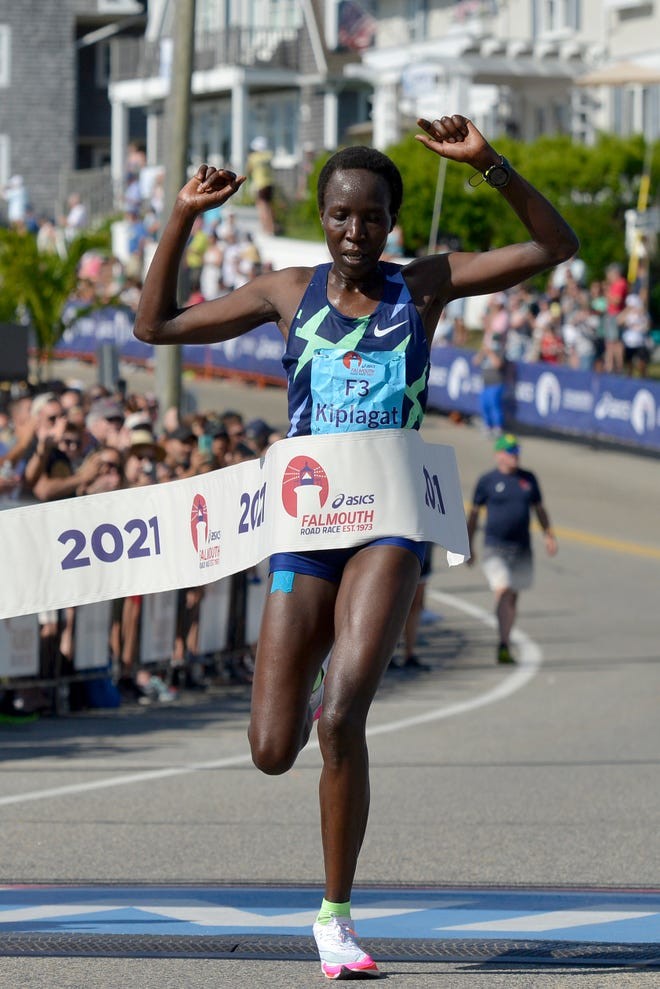
Flanagan made a determined push at the base of the final hill before driving over the top to seal his victory over Simbassa, Bor and Lara - all finishing within 6 seconds of each other.
The women’s race broke early with a pack of 30 dropping to seven by the second mile. Iveen Chepkemoi, a young 24-year-old talent from Kenya, who trains in Colorado Springs, put a gap on Edna Kiplagat, Emily Durgin, Fiona O’Keeffe and past Falmouth champion Diane Nukuri. By the halfway point, the race was between Kiplagat, a Boston, London and New York City Marathon champion, and Chepkemoi, with the second pack fading by 20 seconds. At mile four, Kiplagat pulled away as Chepkemoi got caught by the chase pack.
“This was a fast race, and I needed it at this point in my training because I’m running the Boston Marathon in October,” said Kiplagat. “Once I saw the finish, I focused on keeping away from second place.”
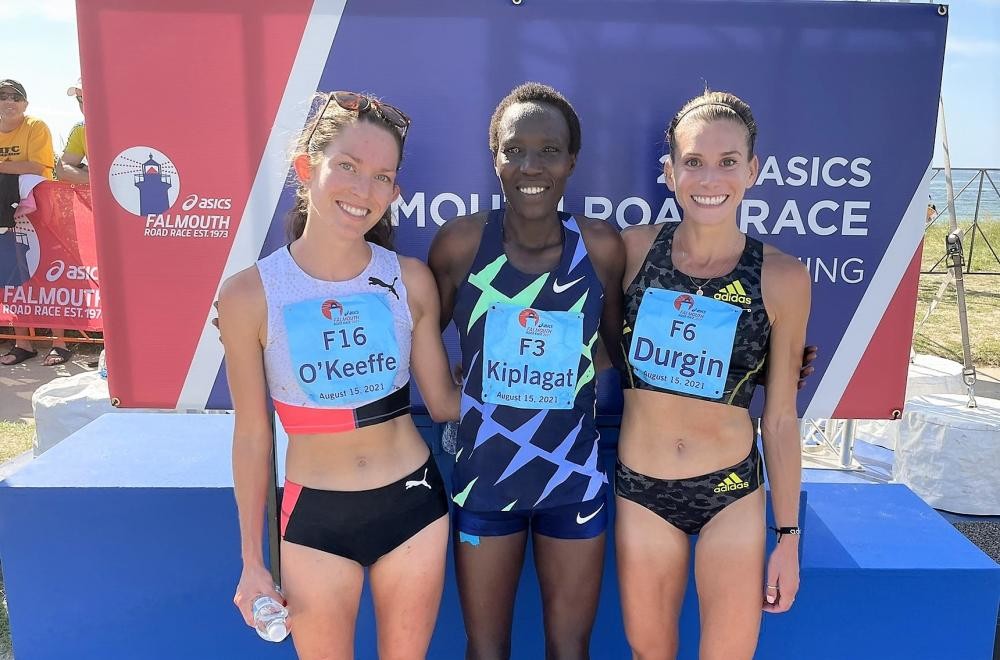
Durgin edged O’Keefe by one second to secure her third runner-up finish of the summer. “This is a beautiful course. We were all working together feeding off each other,” O’Keefe said. She was second at the U.S. 10K and 6K Championships. O’Keefe, a six-time All American at Stanford now coached by Olympian Amy Cragg, finished third.
In the Wheelchair Division, Hermin Garic, a veteran of eight Falmouth Road Races, took his first win with a 25:40. “I worked my butt off for this win,” said Hermin, who will be wheeling Utica Boilermaker the day before he heads to the 125th Boston Marathon. Emeilia Perry took the women’s wheelchair race in 37:39. “I’m really excited. This is my first Falmouth Road Race and I wasn’t expecting that last hill, ” Perry said after the race.
Additionally, the 2020 Tokyo Olympic Marathon bronze medalist, Molly Seidel, served as the official race starter and joined the ASICS Falmouth Race field of nearly 8,000 registered participants as its very last runner. For every runner that she passed along the 7-mile course, the Falmouth Road Race pledged to donate $1 to Tommy’s Place, a vacation home in Falmouth for kids fighting cancer. Tim O’Connell, founder of Tommy’s Place, announced an additional dollar-for-dollar match. While Seidel officially ran past 4,761 runners along the way, the Falmouth Road Race is pleased to announce that it will double its pledge, bringing its donation to $9,522.00 in appreciation of Seidel’s participation in this year’s event and to celebrate her victory in Tokyo. Combined with O’Connell’s match, that brings the grand total to $19,044.
About Falmouth Road Race, Inc. The Falmouth Road Race was established in 1973 and has become one of the premier running events of the summer season. Each year the race draws an international field of Olympians, elite and recreational runners out to enjoy the iconic 7-mile seaside course. The non-profit Falmouth Road Race organization is committed to promoting health and fitness through community programs and philanthropic giving.
by Running USA
Login to leave a comment
Falmouth Road Race
The Falmouth Road Race was established in 1973 and has become one of the premier running events of the summer season. Each year the race draws an international field of Olympians, elite runners and recreational runners out to enjoy the scenic 7-mile seaside course. The non-profit Falmouth Road Race organization is dedicated to promoting health and fitness for all in...
more...Some Veteran Pro Runners Are Making Less This Year, and They're Ditching the Sport
Many athletes are confronting a bleak financial reality. Some are quitting the sport entirely.
What do Noah Droddy, Ben True, and Andy Bayer have in common?
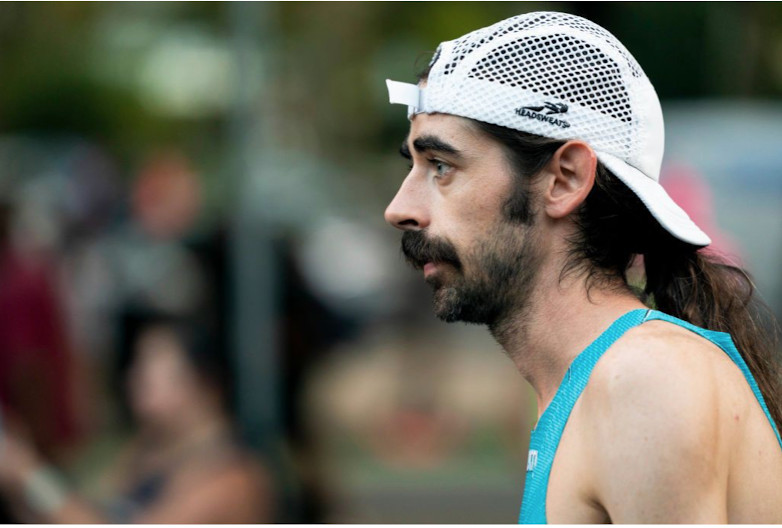
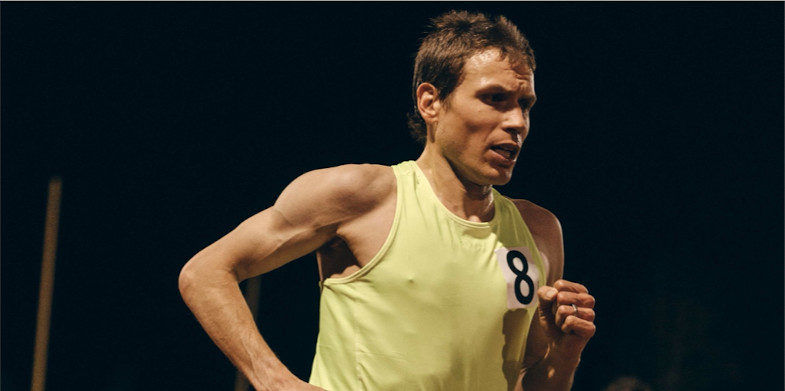
They’re all ranked among the top 10 Americans of all time in their events—Droddy in the marathon, True in the 10,000 meters, Bayer in the steeplechase.
How Much Do Pro Runners Make? For Some Veterans, It’s Less This Year
And they were all dropped by their sponsors at the end of 2020.
This news took a while to seep out—after all, athletes don’t tend to publicize it when their sponsors reduce their pay or stop supporting them altogether. But Droddy, 30, and True, 35, have been open about their status and confirmed it in calls with Runner’s World (both had been sponsored by Saucony), and Bayer told the Indy Star that Nike dropped him and he has left the sport, at age 31, for a job in software engineering.
Droddy—one of running’s most recognizable figures in races with his long hair, backward baseball cap, and habit of losing his lunch at marathon finish lines—summed up his situation in a tweet on February 19.
Is he right? Is it typical for top runners, at the height of their careers, to lose financial backing from shoe companies? Or is this an anomaly at the end of an unusual, pandemic-marred 15 months?
Runner’s World had conversations with eight athletes, four agents, two marketing employees at brands, and three coaches to get a sense of the current economics for athletes. They painted a complex picture.
Are most pro runners broke?
Many are just getting by. For years, America’s pro runners have been on shaky financial footing. With the exception of those who win global medals or major marathons, distance runners often struggle to earn enough money to pay for their essentials (rent and food), plus cover all their running-related expenses, such as coaching, travel to races and altitude camps, health care, gym membership, and massage.
Over the past year, the pandemic has erased lucrative racing opportunities. Additionally, shoe companies have been reevaluating their sports marketing budgets, from which runners are paid. Experts say that the result has been an increasing bifurcation between the sport’s haves and have nots.
The most successful, those destined for the Olympic team or starring on the roads, are earning generous base payments and bonuses for setting records or winning. Many of the rest are scraping by, with smaller contracts, if any, and they’re supplementing their shoe company earnings with jobs.
Running’s middle class, much like America’s, is shrinking.
The exception is runners who belong to a single-sponsor training group, like those in Flagstaff, Arizona (Hoka); Boston (New Balance); and Portland, Oregon (Nike). In those cases, coaching, travel, and training camp costs are absorbed by the club, easing the financial pressure on athletes and making it possible for them to pursue the dream.
Brands these days appear to be more eager to devote dollars to groups and the athletes who train with them, rather than individual athletes training on their own in different locations. That presents a quandary for midcareer runners who have achieved a level of success. Faced with the loss of a sponsorship, they aren’t always willing to pick up and move to a new town and a new coach.
What do contracts look like?
If you’re a top runner in the college ranks, and you’ve won multiple NCAA titles at the Division I level, shoe companies—Nike, Adidas, Brooks, Saucony, Hoka, and others—will usually come calling, offering more than $100,000 a year for multiple years, with a spot in a group or a stipend to pay your coach. Those companies are betting on those NCAA champions to be Olympians of the future.
Dani Jones, for instance, won three individual NCAA titles at the University of Colorado, and she signed with New Balance at the end of last year. Her agent, Hawi Keflezighi, said she entertained competing offers from other companies.
A midcareer athlete with a breakthrough performance—hitting the podium at a major marathon or making an Olympic team, for instance—might also be rewarded with a base contract worth $50,000 to $100,000.
The top sprinters earn even more (although their careers are typically shorter). Usain Bolt famously made millions, and Canadian sprinter Andre De Grasse was 21 when he signed a deal worth $11.25 million—before bonuses—from Puma in 2015, the Toronto Star reported.
The payouts drop significantly after that. Let’s say you’re a distance runner, but you haven’t been able to get a big win in college, although you’ve come close. The lucky ones are looking at deals for about $30,000 to $75,000 per year.
Your agent takes a 15 percent cut of that. And this base salary most often comes without benefits: no health insurance, no 401(k). As independent contractors, pro runners are paying all their own taxes. (In contrast, traditional full-time employees have half of their Social Security and Medicare taxes paid by the employer.)
Many young runners out of college join pro groups, and they’re not making anything beyond free gear and coaching. Others might get a stipend worth $10,000 or $12,000 a year.
The contracts typically sync with the Olympic calendar. At the end of 2020, many athletes’ contracts were expiring—even though the Olympics didn’t happen. That’s how Droddy, True, and Bayer were dropped. Shannon Rowbury, a three-time Olympian, told Track & Field News her deal with Nike was extended for one year, two if she makes the Olympic team this summer.
If an athlete has a good Olympics, the sponsoring company often has an option to extend the deal for an additional year, which includes the world track & field championships. It’s at the company’s discretion—not the athlete’s.
Parts of the sponsorship model appear to be changing, but slowly. When NAZ Elite announced a new deal with Hoka last fall, it included health insurance for the runners. Similarly, members of Hansons-Brooks in Rochester, Michigan, get health insurance if they work in the Hansons running specialty stores. And last May, Tracksmith brought Mary Cain and Nick Willis on as employees at the company—Cain in community engagement, Willis as athlete experience manager—with the plan that both would continue to train and race at an elite level.
Why doesn’t anyone know exactly how much runners are making?
As part of these deals, athletes have to sign non-disclosure agreements (NDAs), promising to keep the terms quiet. If an athlete violates the NDA, the sponsor can void the contract—or sue for breach of contract.
This is, in fact, similar to other sports. In basketball, LeBron James is being paid $39.2 million this season by the Los Angeles Lakers. But he also has an endorsement deal with Nike, and the exact structure of that is unknown.
In running, prize purses are publicized—$150,000 for winning the Boston Marathon, $25,000 for being the top American at New York in 2019, $75,000 for winning the Olympic Marathon Trials.
But as in other sports, the terms of the sponsor deals are kept mum. And appearance fees at major races, as well as time bonuses within those appearance fees, which represent a major source of income for road runners (mainly marathoners), are also mostly unknown.
Athletes feel that the silence around sponsor contracts and appearance fees puts them at a disadvantage—it’s hard to know their market value. Yes, they can—and do—have quiet conversations with peers about it. But lacking broad knowledge, they lack power.
And as a result, the industry is rife with rumors and assumptions. Athletes’ values are often inflated through the grapevine.
“I think it is very similar to the dynamic that would occur if no one knew the price of home sales,” Ian Dobson—a 2008 Olympian who ran for Adidas and Nike during his pro career, which ended in 2012—told Runner’s World. “How could you ever be confident in a sale price if you didn’t know what any other homes in your neighborhood were selling for? Granted, we don’t know every detail of every home sale in the neighborhood, but it’s certainly helpful to know in general terms the dollar amount that these are going for so that we can all understand what value our home might have.”
Also, athletes keep quiet when their circumstances change. They feel embarrassed. One athlete told Runner’s World, “No one in track wants to be the one to say, ‘I got dropped,’ or ‘I got reduced.’ It's all taboo.”
Even so, $30,000 is nothing to sneeze at—especially for a job that’s about pursuing individual goals.
No, it’s not. But not every contract is structured the same way.
Some pay that base amount, no matter what. Other contracts penalize athletes with reductions if, for instance, they don’t finish in the top three in the country in Track & Field News rankings, or if they get injured and can’t race a certain number of times per year.
That’s why numerous Nike athletes seemed to be eagerly seeking racing opportunities of any kind last summer amid the pandemic. Marathoner Amy Cragg raced a 400 meters at an intrasquad meet on July 31, and finished in 90.15 seconds—6:00 pace—presumably to check a box on her contract. On August 7, she ran 800 meters in 3:03.85. The record of those races are in her World Athletics profile.
A Nike spokeswoman, when asked about athletes racing in 2020 to meet contractual obligations, responded: “We do not comment on athlete contracts.”
Time bonuses, once seen as a reliable way to beef up athletes’ base payments, are also becoming less frequent or harder to hit, as shoe technology improves and fast times become more common, according to one agent.
What role do agents play?
For athletes who have never previously had a sponsorship deal, it’s almost impossible to secure one without the help of an agent, who can get in the door at all the major brands.
For American distance runners, there are nine main agents—all men—negotiating the deals (Keflezighi, Josh Cox, Paul Doyle, Ray Flynn, Chris Layne, Dan Lilot, Tom Ratcliffe, Ricky Simms, and Mark Wetmore). Karen Locke, one of the few female agents in track and field, represents a few distance runners among her roster of clients in field events.
Of course, all the prominent agents—who have multiple clients across multiple brands and at various stages of their athletic careers—have data about what athletes are worth. But they have a duty to each one to maintain confidentiality about the specifics of that deal.
Agents bring to their athletes a broad picture of the market and what each might command, providing advice to those considering offers: Yes, this a fair offer, a solid deal. Or no, you can do better.
They also help get athletes into competitive track races like the Diamond League and elsewhere, or into the World Marathon Majors. They can handle travel arrangements to meets and help to make sure records get ratified. Generally, their role is to go to bat for athletes, no matter what they need.
For their services, they take 15 percent of everything an athlete earns: sponsor deals, appearance fees, and prize money, no matter how small the race or winnings.
Agents are supposed to negotiate on behalf of each client individually, but athletes have no idea if that’s happening. Are they being used as part of a package deal? Thrown in at a minimal rate as a thank you to a brand for giving a generous deal to a superstar? Or, on the upside, getting a small appearance fee from a major marathon that they wouldn’t be able to get into on their own, because they have the same agent as a mega-star?
“Agents want to bring in the most money for their combined athletes—if they manage 20 athletes, they’re trying to bring in the maximum money they can across 20 athletes,” one athlete told Runner’s World. “That doesn’t necessarily mean they’re trying to maximize for each individual. The difference between earning $20,000 a year and $30,000 a year is profound in terms of your ability to actually train as a professional. But it translates into a small amount [$1,500] for the agent.”
Why is the market tricky right now?
The pandemic caused upheaval in marketing budgets. Also, the people who work in marketing at shoe brands can be inexperienced in the running industry, and turnover often runs high at those positions, jeopardizing relationships between athletes and brands that have lasted years.
The marketing budget questions are not limited to running, said Matt Powell, a sports business analyst and vice president for NPD.
“I think brands are taking a more circumspect view of endorsement contracts in general—whether it’s teams, leagues, or individual athletes,” he said. “They’re [questioning whether] they’re getting the return on that investment.”
Nike is rumored to have cut its marketing budget for running, amid layoffs at the company. Nike did not return an email from Runner’s World seeking clarification on the budget or the numbers of runners it currently sponsors.
Although Nike’s superstars are said to be fine and not facing any reductions in their deals, one Nike athlete, a 2016 Olympian, told Runner’s World, “It’s pretty much assumed that everyone is getting less.”
And it’s believed that several of these contracts are for shorter periods of time than they might have otherwise been: through the world championships in 2022 in Eugene, Oregon, instead of through the next Olympics in 2024.
In answer to questions from Runner’s World about True and Droddy—as well as rumors about a new Saucony-sponsored training group—Saucony responded with an emailed statement from Fábio Tambosi, Saucony’s chief marketing officer:
“At Saucony we believe you cannot have a sports brand without the inclusion and authentic connection with athletes. We are excited about the evolution of Sports Marketing as a brand pillar for years to come, and remain committed to building an athlete strategy that aligns with this goal.” 

Good news abounds, too
On the positive side for distance runners, Puma has re-entered the distance running market. Molly Seidel was lured from Saucony to Puma, and Aisha Praught Leer told Women’s Running she signed a “big girl contract” with Puma. Additionally, the company started a group in North Carolina, coached by Alistair Cragg and with three athletes so far.
The shoe company On has also invested heavily, starting a new team in Boulder, Colorado, coached by Dathan Ritzenhein and with athletes like Joe Klecker and Leah Falland.
Keira D’Amato, 36, signed her first pro contract, with Nike, after a string of impressive performances during the pandemic on the track and roads. She has kept her job as a realtor.
Keflezighi sees an opening for apparel brands that don’t have footwear to sponsor more athletes. Women’s apparel company Oiselle has done this for years, and Athleta is now sponsoring Allyson Felix. Could a menswear company be far behind? These arrangements leave athletes free to choose their own running shoes, which can be advantageous as shoe technology advances so quickly.
Why do brands have pro runners anyway?
Beyond the individual dollar amounts in contracts, brands seem to be rethinking what the role of a professional athlete is. Is it to inspire with performances, and hope those performances translate into shoe sales? Or is it to connect with fans on social media and promote product sales that way?
“You have to kind of look at it big picture,” True told Runner’s World. “These companies aren’t giving athletes money for charity; they’re doing it for a marketing investment and they’re looking for a return on their investment. And currently—and this is not ideal, in my mind—you look at the rise of social media and influencers. They are very inexpensive for marketers to go after and they get their products in front of a lot of eyeballs.”
A 2:20 male marathoner who also has a drone and a great Instagram account or YouTube channel might be gaining followers, True said, while a 2:05 marathoner is training hard and devoting his craft toward the next race.
“The average person, they don’t understand that 15-minute difference,” he said. “One historically will cost that company a lot of money. The other does not cost much at all and will get a whole lot more eyeballs on the product. You have to understand that.”
In his nine years with Saucony, True, training on his own in Hanover, New Hampshire, was part of only one ad campaign the company ran. The company preferred to use models for its ads and catalogs.
In February, True ran 27:14 for 10,000 meters, a personal best and faster than the Olympic standard. He wore Nike spikes and a plain yellow singlet. If all goes according to plan, he’ll race the U.S. Olympic Track and Field Trials in June and try to make his first team. His wife, professional triathlete Sarah True, is pregnant and due in July. And after that, he’ll run a fall marathon. True intended to debut at the marathon last fall, before the pandemic canceled all the races.
He’s moving ahead and training hard, despite the financial uncertainty. “I would have loved to have spent my entire career with Saucony,” he said. “I very much enjoyed working with them. I’ve been fortunate enough that I have had probably a lot more support than many other people in my position. That’s been nice.”
At this point, he is hoping another company will pick him up to take him through the next few years. “If a company just gave me a bonus structure that is fair for the result, I’d be happy with that,” he said. “It’s not like we’re looking for huge amounts of money. I’m very pragmatic and very realistic. I don’t think you should be paid for potential; I think you should be paid for results.”
by Runner’s World
Login to leave a comment
Olympian Amy Cragg Officially Retires and Joins the Puma Coaching Staff in North Carolina
She won bronze in the marathon at the 2017 world championships and ran 2:21:42 at the 2018 Tokyo Marathon—her lifetime best.
Amy Cragg, who represented the U.S. at the 2012 and 2016 Olympics, is officially retiring from professional running. She is now coaching the Puma-sponsored training group alongside her husband, Alistair, in Chapel Hill, North Carolina.
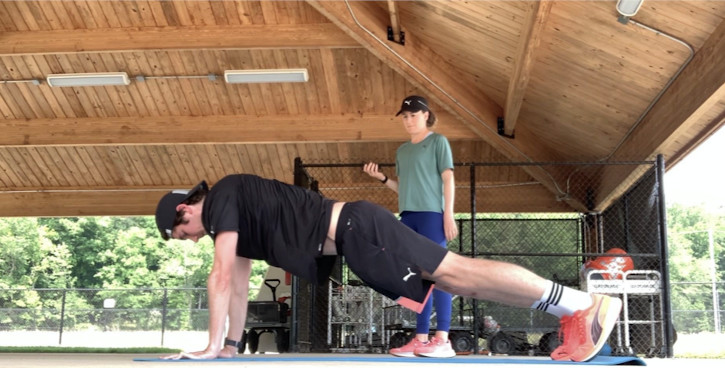
Her career highlights include winning the 2016 Olympic Marathon Trials, finishing third in the marathon at the 2017 world championships, and running a 2:21:42 PR in the 2018 Tokyo Marathon.
Cragg withdrew from the 2020 Olympic Marathon Trials last February, citing illness.
Amy Cragg—who won the 2016 Olympic Marathon Trials, took the bronze medal in the marathon at the 2017 IAAF World Championships, and ran the 2018 Tokyo Marathon in 2:21:42, making her the sixth-fastest American in history at the distance—announced she is retiring from competitive running.
She is now officially a coach with the new Puma-sponsored training group based near Chapel Hill, North Carolina. Her husband, Alistair, is the group’s head coach.
Cragg, 37, said in a phone call with Runner’s World that she took the time she needed to make the decision. “It was definitely time [to retire],” she said. “It’s been great. I’m definitely enjoying life on the other side.”
She had suffered from persistent fatigue over the past couple of years, which kept her from competing at the 2020 Olympic Marathon Trials. Now, she says, she’s feeling well again and running between two and four miles, several times a week, “just to get out there and enjoy it.”
In the summer of 2020, Cragg and her husband drove across the country from their home in Portland, Oregon, where she had trained with Bowerman Track Club for years. They looked at various locations along the way, trying to figure out where to establish Puma’s new training base.
Although they considered different spots at altitude, they ultimately decided the Research Triangle area of North Carolina was ideal for its weather, ease of travel to European track meets and American road races, and the 22-mile, crushed gravel American Tobacco Trail, which has every quarter mile marked. (The Craggs took a wheel out to measure 10 miles of the trail, and the quarters were spot on.)
They also considered medical support in the area, affordability, and job prospects for runners’ significant others.
“I’ve lived in places where people didn’t have a social life or their significant other didn’t have a social life or couldn’t work, and they were depressed,” Cragg said, “and that doesn’t lead to longevity in the sport. We want to create an environment that leads to longevity in the sport. For a lot of people, it takes them a little longer to get there. However long it takes you, we want it to be a good place for that.”
The team currently has Taylor Werner and Fiona O’Keeffe, both of whom are qualified for next month’s U.S. Olympic Track and Field Trials; Steven Fahy, a steeplechaser who currently is nursing a foot injury; and Emmanuel Roudolff-Levisse, a French marathoner. The Craggs—believers in the powers of group training—expect their numbers to grow, albeit slowly.
“We aren’t in a rush to get people,” she said. “We want to get the right people. We’re hoping these are 10-year athletes, not two- or three-year athletes.”
Cragg’s career flourished when she was in her 30s, and she was involved in some of the more memorable moments in Trials history. In 2012, she narrowly missed making the team in the marathon, finishing fourth at the Trials in Houston behind Shalane Flanagan, Desiree Linden (then Davila), and Kara Goucher.
But Cragg (then Hastings) turned her attention back to the track and won the 10,000 meters at the 2012 track trials to earn her first trip to the Games. At the Olympics in London, she finished 11th in 31:10.69, her personal best.
Four years later, at the 2016 Olympic Marathon Trials in Los Angeles, Cragg and training partner Flanagan ran stride for stride together, breaking the race open before the halfway point. But by the 23rd mile, Flanagan was struggling in the heat. Cragg slowed to stay with her, urging her onto the finish. With less than two miles to go, and Linden lurking in the background, Cragg finally left Flanagan and won the race in 2:28:20, waving her visor as she broke the tape.
Linden was second, in 2:28:54, and Flanagan willed herself across the line in third in 2:29:19, where she collapsed and was carried off the course. In Rio, their finishing order was reversed: Flanagan was sixth, Linden seventh, and Cragg ninth, the best collective performance by any country’s three athletes in the event. (The 2016 gold and silver medalists are currently serving suspensions for anti-doping violations.)
Training at times up to 130 miles per week with the Bowerman Track Club in Portland, Cragg qualified for the world championships in 2017 in London. At the race, she moved into third place with 400 meters and sprinted to a bronze medal.
Cragg said that was her top moment as a professional runner. “It kind of just made my entire career worthwhile,” she said.
Seven months later, in Tokyo, she ran her lifetime PR, 2:21:42, taking nearly six minutes off her previous best and putting her among the country’s top runners in history.
Cragg’s world championships bronze marked a renaissance of sorts for American women’s distance running. In Chicago in 2017, Jordan Hasay ran 2:20:57, Flanagan won the New York City Marathon in 2017, and Linden won Boston in 2018.
But after Tokyo, Cragg experienced a series of health setbacks and never was able to regain her top form for a marathon. She ran 15:54 5K in New York in November 2018 and finished third at the U.S. 5K championships, but she raced only twice in 2019. Both races—a 10K and a half marathon—were far from her best. She had planned to run the Chicago Marathon, but pulled out in the summer.
In an interview with Runner’s World at the time, Cragg talked about the fatigue she felt. “I think we just went too hard for too long,” she said. “I ‘cooked myself’ is what I’ll say. Took some time off when we realized it wasn’t coming around for Chicago. Now I’m feeling a lot better and ready to go.”
But citing illness, she withdrew from the 2020 Olympic Marathon Trials in February in Atlanta.
Her only race results from 2020 were pandemic-era intrasquad meets put on by her Bowerman Track Club at a high school track in Portland. Cragg ran a few 400s and 800s at slow paces—seen as fulfilling contractual obligations.
Her peers had nothing but praise for her.
“I’m thrilled for Amy. She’s had a tremendous career,” Linden, who first met Cragg when they were undergraduates at Arizona State University, told Runner’s World in a text message. “If people could have eavesdropped on our long run conversations during our ASU days, they would have laughed at how audacious our goals were. It’s been incredible to watch her check them all off one by one and then accomplish even more. I’m grateful that while being in a hyper-competitive career, Amy’s been able to remain a friend, and I know we’ll have many more conversations about her future goals.”
Shalane Flanagan wrote in a text, “I’m so happy for her. She was a wonderful teammate and one of the toughest athletes I got to train alongside. I treasure all the time spent together chasing big goals and dreams.” 

by Runner’s World
Login to leave a comment
Keira D’Amato Is Trying to Break the American 10-Mile Record on Monday. It Could Cost Her Thousands of Dollars.
Since 2011, Keira D’Amato has been part of the race committee for the Credit Union Cherry Blossom Ten Mile Run, the famous Washington, D.C. road race held along the banks of the Potomac River. She’s held a few different roles over the years; recently she’s been responsible for coordinating speakers for clinics at the race expo. This year, Molly Huddle was one of the scheduled speakers, and D’Amato told her she believed Huddle could break the women’s-only American record of 52:12, set by Janet Bawcom at Cherry Blossom in 2014 (coincidentally, D’Amato held the finish line tape for that race). After telling Huddle about the record, D’Amato realized something: I can run that fast too.
Over the following six months, as D’Amato has risen from obscurity to one of the best distance runners in the United States, that statement has become blindingly obvious. After running a personal best 2:34:24 to finish 15th at the Olympic Marathon Trials in February, the 36-year-old has spent the summer and fall demolishing her pbs, from a 15:04 time trial 5,000 on the track in June to a 32:33 10,000 at the MVMNT Race Series in July to a 68:57 to win the Michigan Pro Half Marathon on October 28.
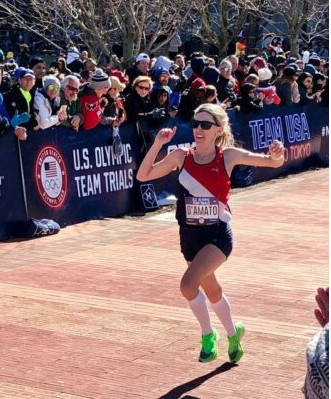

On Monday, D’Amato will try to back up her claim from the spring: she’s going for Bawcom’s record at the Up Dawg Ten Miler, where she’ll face a five-woman professional field that includes Olympian Molly Seidel. And that leads into one of the oddest statistics of a very odd year.
If D’Amato had broken the record at Cherry Blossom in April (which cancelled its 2020 edition due to COVID-19), she would have earned a $10,000 bonus.
If D’Amato breaks the record on Monday — or even if she doesn’t — she could end up out around $8,000.
That’s because D’Amato is covering most of the costs of the Up Dawg Ten Miler, which will take place in an undisclosed location in the DC area. Even though D’Amato is staging a race for five athletes rather than Cherry Blossom’s typical 17,000, several key expenses remain: getting the course USATF-certified and measured, securing park permits and road closures. It can add up quickly.
And then there is drug testing. USATF rules state drug testing is only required to ratify American records in events for which World Athletics recognizes an official world record. Since 10 miles is a “world best” distance, that means drug testing isn’t required to ratify an American record at the Up Dawg Ten Miler — but D’Amato is leaning toward including it anyway to avoid all doubts. However, based on the quote she received from USADA, it would run her an extra $3,000-$3,500. She hasn’t made a final decision yet.
There is an online store selling race merchandise to help offset the cost of the event. And around 20 members of the CUCB organizing committee have also chipped in a total of $2,000 — and, more importantly, their time — so that D’Amato can chase the record.
“If there was a way to measure intensity per person, this race would be much more intense [than the Cherry Blossom Ten Mile Run],” says CUCB event director Phil Stewart. “We’re not dealing with getting 17,000 people entered in the race and moving them around or ordering as many porta potties or things like that, but this is a group of special individuals. I’ve spent a lot of time being consumed by making sure that we have all of the conditions set for the record to be accepted if the record is broken. If Keira or anybody breaks the record here, the worst nightmare would be that there was some little USATF rule that I didn’t know about that was required for an American record to be set.”
Stewart knows that feeling all too well; last year, Stanley Kebenei thought he had broken Greg Meyer‘s American 10-mile record at Cherry Blossom, only for it to be revealed that a set of cones had been improperly placed, making the course 240 feet short (CUCB still paid Kebenei the $10,000 bonus).
With no mass race entries to fund the Up Dawg Ten Miler, CUCB will lose money on the event. But it’s worth it to Stewart to support D’Amato, whose meteoric rise he has followed first-hand — Stewart was among a group of CUCB committee members who traveled to Atlanta to support her in the Trials in February.
“One of the things that has been fun about [this event] is that in a time when there’s so much downbeat news, I think a lot of people have gotten excited about working on something that’s upbeat,” Stewart says.
And D’Amato? Well, in keeping with her carefree, laid back demeanor, she’s trying not to think about the cost and electing to focus on the positives. Five fast women (Susanna Sullivan, Bethany Sachtleben, and Emily Durgin round out the field) are gathering on Monday at 8 a.m. to race 10 miles. There will be a free live stream, with commentary, on the CUCB Facebook page. This should be fun, right? No. This will be fun.
“For me, it’s not about the money at all,” D’Amato says. “Right now when everyone’s starving for motivation and opportunity, I felt like this would be a service to the running community. And it fell in line really perfectly with my training too.”
Keira D’Amato’s return to competitive running began with a joke. Which, if you know anything about D’Amato, could not be more fitting.
D’Amato loves all things humor. The name of Monday’s race, Up Dawg, was her idea — a nod to a joke from The Office. When D’Amato joined Strava a few years ago, she began using jokes or puns to title her runs. Sample entry: November 16. My cousin, a magician, decided to incorporate the use of trapdoors in his shows. But I think it’s just a stage he’s going through. She used to rely on her children’s popsicle sticks for material or by asking her Amazon Alexa, “Tell me a joke.” As she amassed Strava followers (she’s over 2,600 now), she began receiving suggestions from fans — which delights her to no end.
“You have no idea how awesome it is that when people hear a funny joke, they think, Oh, I need to send this to Keira,” she says.
D’Amato’s impishness was on display during Christmas 2016, when she decided to gift her husband, Anthony, an entry to the 2017 Shamrock Marathon, held in March in Virginia Beach.
“Who gives someone a gift of a marathon entry?” D’Amato says. “Because that means you have to start training a lot. It’s kind of a backhanded compliment gift, I guess. But then I felt a little bad, so I signed up too.”
D’Amato was no stranger to running. A four-time All-American at American University under coach Matt Centrowitz, she finished 6th at the 2005 NCAA XC champs as a senior, ahead of future stars Amy Cragg, Molly Huddle, and Jenny Simpson. She remains friendly with the Centrowitz family, and is even in a fantasy football league with Olympic 1500 champ Matthew Centrowitz — let’s just say both D’Amato and Centro are better runners than fantasy football managers.
“I think at one point, I was in second-to-last and he was dead last,” D’Amato says. “But I also think Centro does a whole bunch of them, so maybe in his other leagues he’s doing better. But it was either the first or second week, I played him, and I crushed him.”
After graduating in 2006, D’Amato (then known as Keira Carlstrom) spent a few years running for DC Elite, a post-collegiate group coached by Scott Raczko — better known as the coach of Alan Webb. By 2008, she had lowered her 1500 personal best to 4:22, but was in constant pain, beset by a series of stress fractures and ankle pain. Her issues were the result of a condition known as a tarsal coalition — an abnormal bridging of bones in the foot — but the surgery to correct it was not covered by her insurance.
So D’Amato “retired” and got a job at mortgage giant Freddie Mac. Even after undergoing surgery to correct her condition in 2009 (her new job had better insurance), D’Amato ran sparingly for the next seven years. In her first run back after giving birth to her daughter, Quin, in August 2016 (she also has a six-year-old son, Tommy), D’Amato couldn’t make it through a three-minute run without walking. Yet she steadily built up ahead of Shamrock, and despite hail, sleet, and brutal winds on race day, D’Amato blew past her pre-race goal of 3:25.
“I couldn’t run slow enough to do that pace,” says D’Amato, who ran 3:14.
D’Amato felt there was a lot left in the tank, and took her next marathon, in Richmond in November, more seriously. After running 2:47 there — just two minutes off the Olympic Trials standard — she knew it was time to return to serious training. She reunited with Raczko, and steadily dropped her times while balancing running with her career as a realtor. When she ran a pb of 2:34 to finish 15th at the Trials at age 35, it looked like the culmination of a remarkable three-year journey.
In reality, D’Amato was just getting started.
Since the Trials, D’Amato has run personal bests over almost every distance. Her 15:04 5,000 doesn’t officially count because it came in a time trial rather than a race, but it’s faster than the Olympic standard of 15:10 and would have ranked her 6th in the US during the 2020 outdoor season.
Her most impressive performance came in last month’s Michigan Pro Half Marathon, where she clocked 68:57, 47 seconds ahead of runner-up Emma Bates, a 2:25 marathoner who finished 7th at the Olympic Trials. That made D’Amato the second-fastest American half marathoner on the year, behind Sara Hall, and 10th on the US all-time list. She is now in very elite company.
by LetsRun
Login to leave a comment
So what US marathoners are going to come out on top at next weekend’s Olympic Trials
The three Olympic women’s berths from next Saturday’s US marathon trials in Atlanta look to be up for grabs among at least five challengers. Besides Desiree Linden, who placed seventh in Rio, there are Jordan Hasay, who was third in Boston last year, Emily Sisson, who was sixth in London in her 26-mile debut, Molly Huddle, a two-time track Olympian, and Sara Hall.
Amy Cragg, who placed ninth in Rio and would have been a contender, has been battling Epstein-Barr virus and withdrew this week.
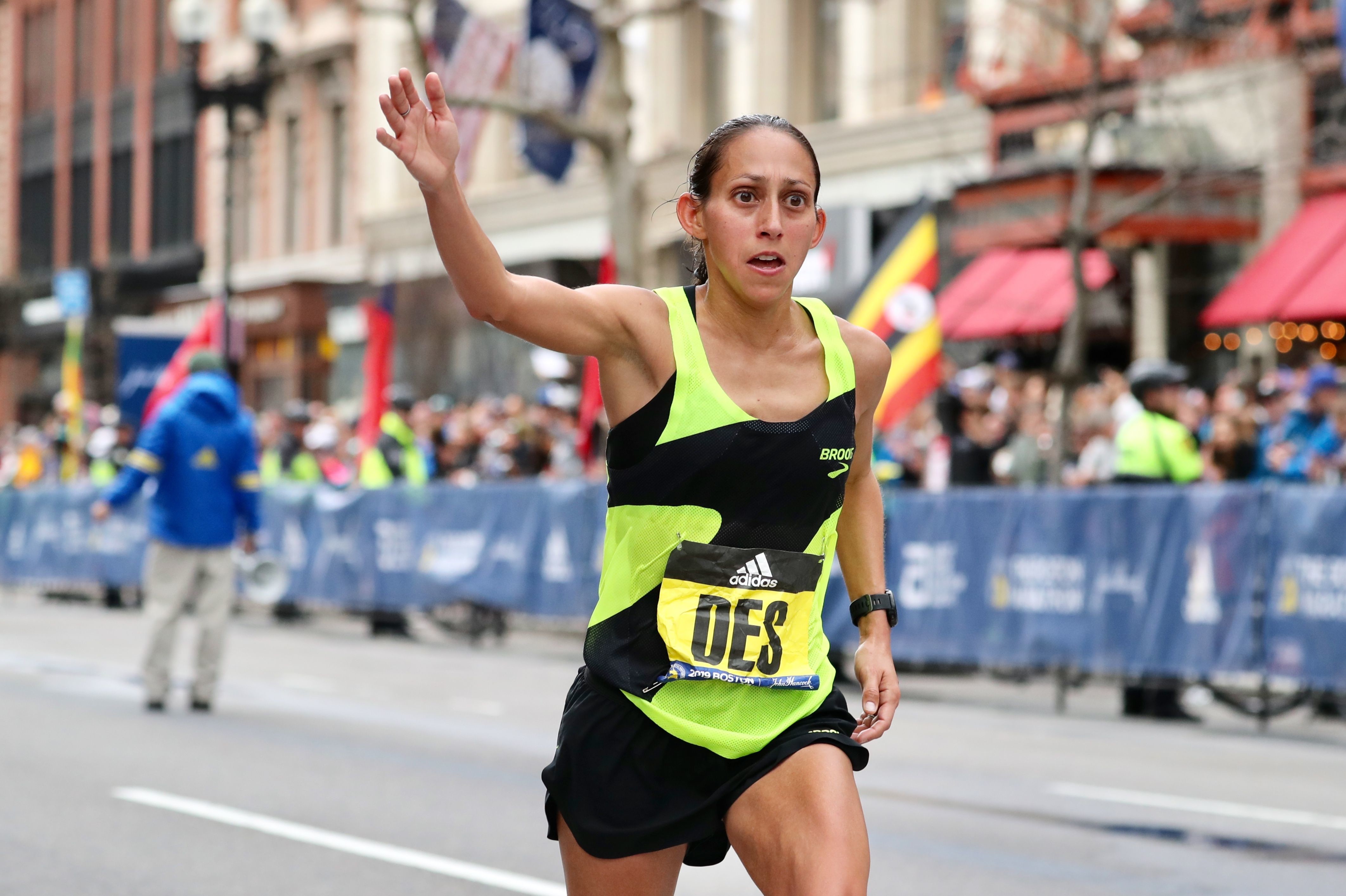
Linden, the former Boston Marathon victor who’s bidding to make her third team, already has committed to competing here in April. If she qualifies for the Games, she’ll be running three marathons in just over five months.
On the men’s side, Galen Rupp, who won bronze in 2016, is the decided favorite, with Jared Ward (sixth in Rio), Leonard Korir, and Scott Fauble, last year’s top domestic finisher in Boston, also in the mix.
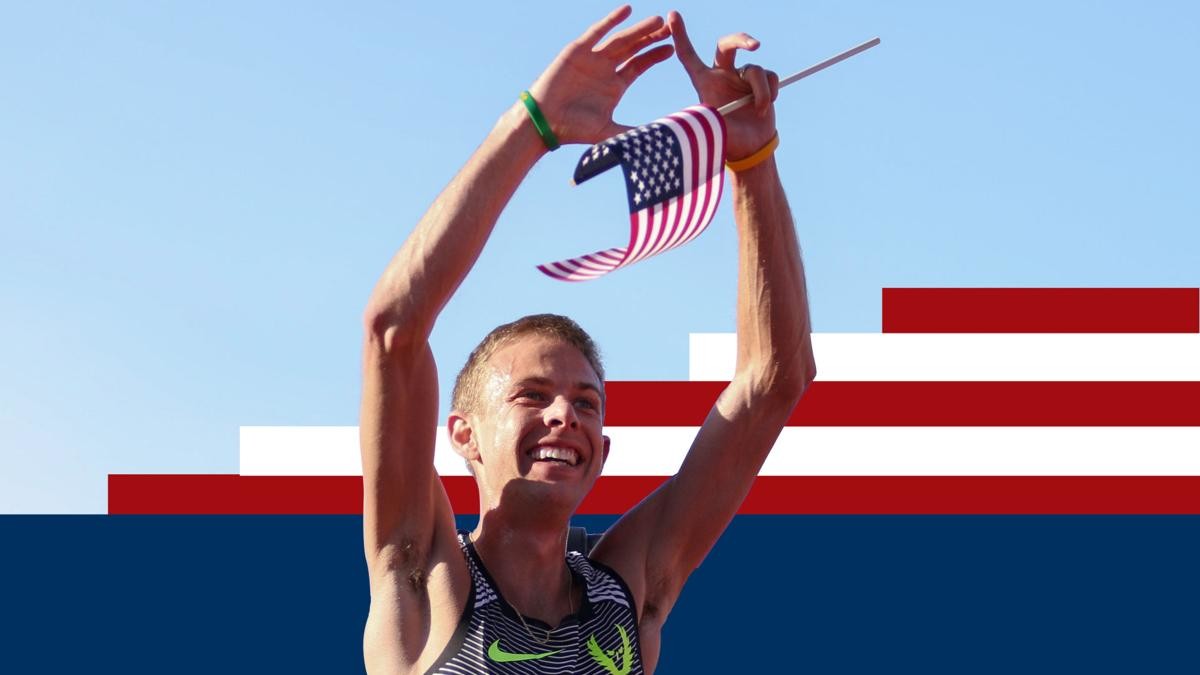
The Atlanta loop course, which will finish in Centennial Olympic Park, is a hilly challenge and will be more so if the midday temperature is in the 70s, as it often is on that date. That’s still cooler than it’s likely to be in Sapporo (average temperature 78), the former Winter Games site where the races were moved to avoid Tokyo’s sauna (87).
Login to leave a comment
2028 US Olympic Trials Marathon
Most countries around the world use a selection committee to choose their Olympic Team Members, but not the USA. Prior to 1968, a series of races were used to select the USA Olympic Marathon team, but beginning in 1968 the format was changed to a single race on a single day with the top three finishers selected to be part...
more...With less than a week and a half to go Amy Cragg Withdraws from 2020 Olympic Marathon Trials
Defending champion Amy Cragg, 36, announced on Instagram that she will not compete in the championship. Cragg cited an illness as the reason for withdrawing from the race.
“The Trials are the reason I have shown up every day for the last four years, so this has been an extremely difficult decision,” she wrote on Instagram. Cragg did not immediately respond to Runner’s World’s request for comment.
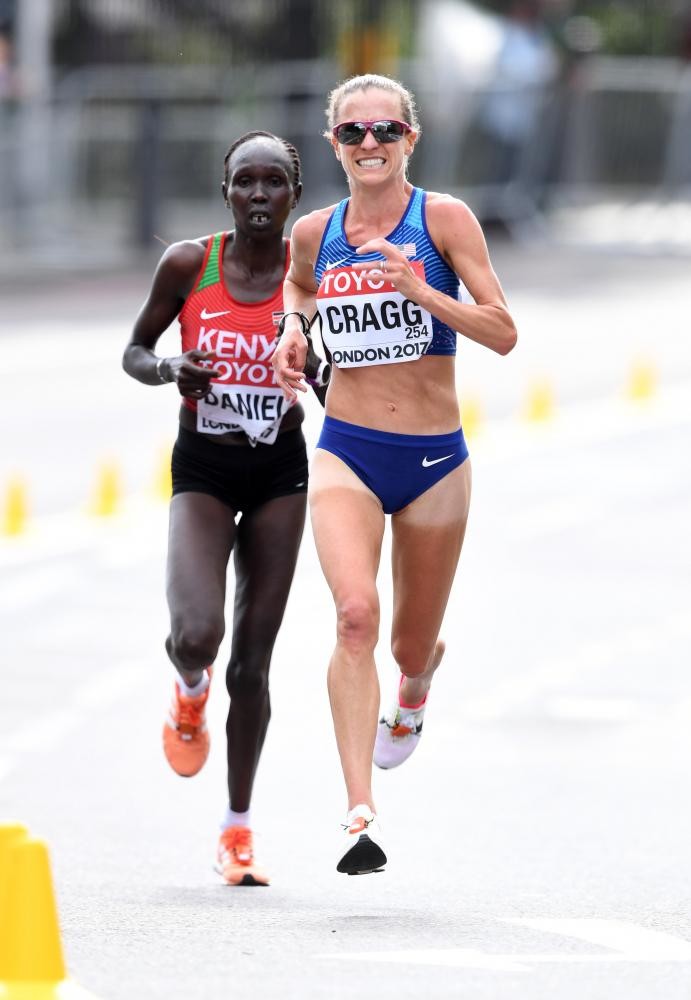
In January, Cragg told Runner’s World, “February 29, top 3, that’s what I’m going for. It’s just getting on that team. For me, that’s everything.” She said that training for Trials was going well, despite a disappointing year of racing in 2019.
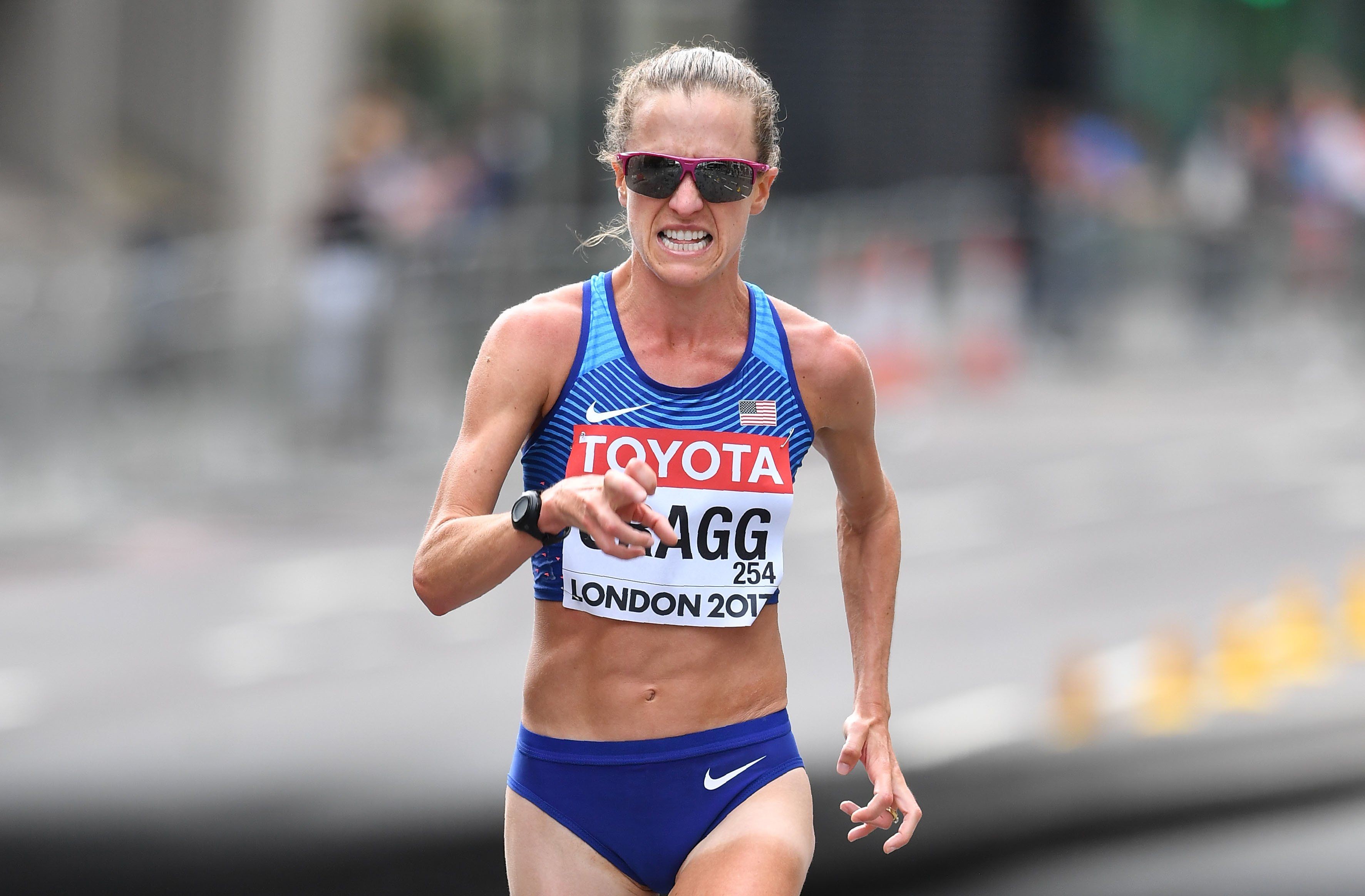
Last year, the 2:21 marathoner raced only twice on the roads, finishing seventh at the Prague Half Marathon in 1:13:27 in April and 14th at the Beach to Beacon 10K in 34:40 in August. She had plans to race at the 2019 Chicago Marathon but withdrew with an injury. Outside of racing, she was struggling in workouts with overall fatigue.
“You talk to any distance runner, you go through those ups and downs regularly,” she told Runner’s World. “It’s like you just can’t seem to get out of the slump. You don’t know whether to push harder or let go. I’ve been used to it over the years. But there was definitely still that fear that I might have overdone it; [I’d] hope it’s not undoable.”
After training at altitude with the Bowerman Track Club for most of January and February this year, Cragg came down to sea level to race the New Orleans Rock ’n’ Roll Half Marathon on February 9. Unfortunately, she slowed throughout the race, indicating that a successful Trials defense was in jeopardy. She finished in 1:16:53, averaging 5:51 per mile. When Cragg ran the 2018 Tokyo Marathon, which put her fifth on the U.S. all-time list, she averaged 5:24 pace for double the distance.
by Hailey Middlebrook
Login to leave a comment
Alps 2 Ocean Ultra
New Zealand's First Ultra Staged Run. Starting at the base of New Zealand's highest mountain, travelling on foot 316 kms to the small harbour of Oamaru, located on the shores of the Pacific Ocean. The ultimate adventure race, Alps 2 Ocean Ultra, was a dream that quickly became a reality. And it’s now only weeks until the 126 entrants will...
more...A look at who's got a shot at making the American Olympic marathon squad
The U.S. Olympic Trials are less than three weeks away. The fields are finalized, the tapers are starting soon and runners and fans are anticipating one of the most exciting trials yet.
Here’s a look at which runners we think are most likely to place in the top three and be named to the U.S. Olympic squad after the February 29 race in Atlanta.
Women’s field.- The favorites to make this Olympic team are Sara Hall (Asics), Des Linden (Brooks), Molly Huddle (Saucony) and Emily Sisson (New Balance). Hall has been extremely consistent over the past year, running personal bests in both the marathon and the half (a 2:22:16 in Berlin and a 1:08 in Houston just a few weeks ago). Linden is a gamer and someone who shows up no matter the conditions. She’s also an Olympic marathon veteran.
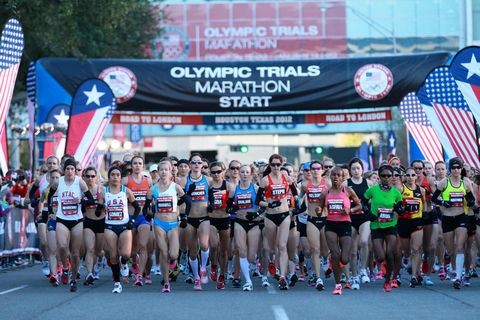
Huddle and Sisson are training partners who have helped each other improve over the marathon distance. Huddle has been a staple on the American distance scene for years (she’s a multi-time American record holder) and Sisson is the rising star who has flourished alongside Huddle. The pair own 2:23:08 (Sisson) and 2:26:33 (Huddle) marathon personal bests and know how to show up on race day. But the knock on Sisson is that she’s only run one (albeit, fantastic) marathon, and inexperience could be her downfall.
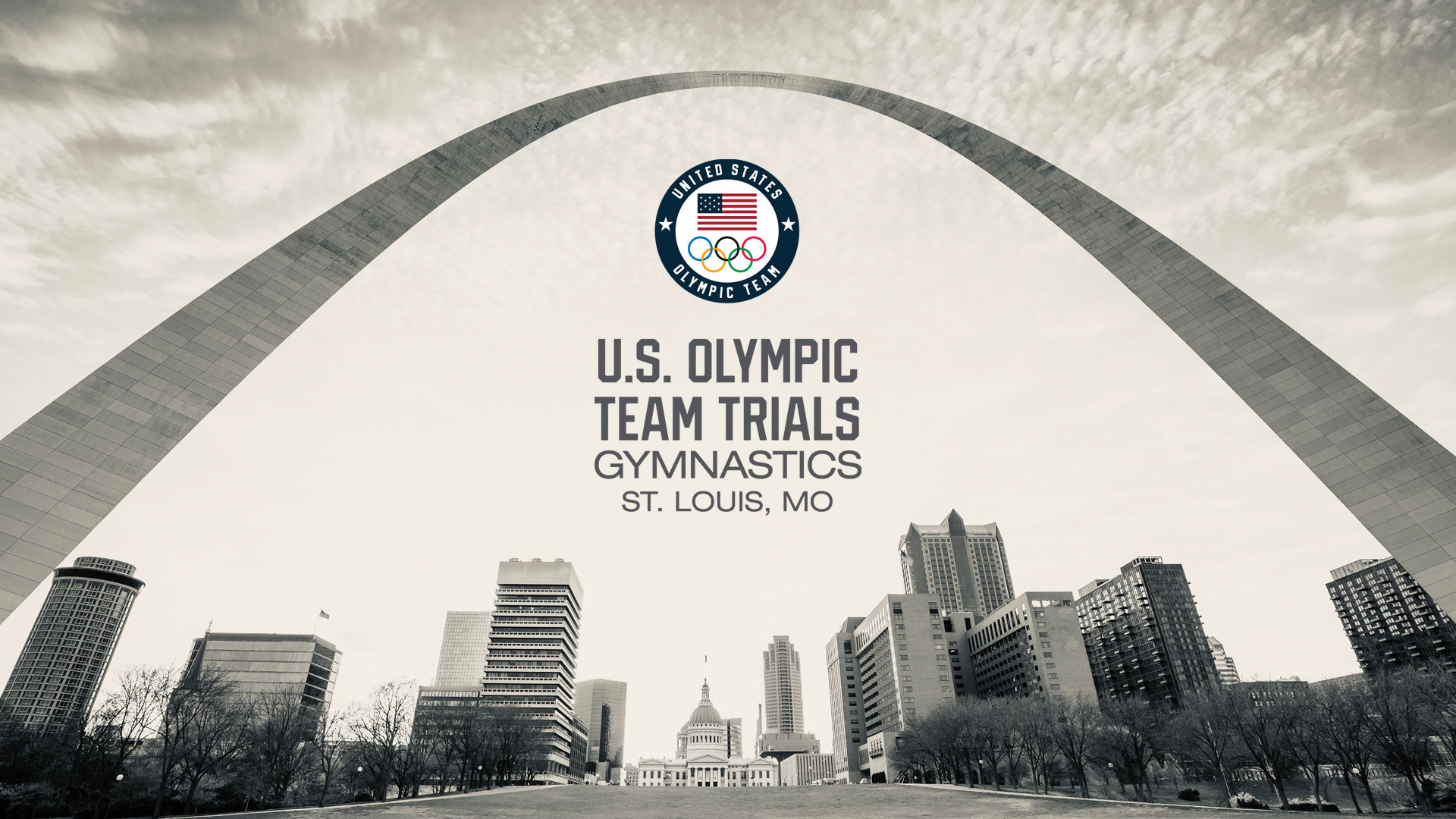
Our best bet for the top three, in order, is: Hall, Huddle, Linden.
The dark horses.- Jordan Hasay (Nike) and Amy Cragg (Nike) are the dark horses. We just haven’t seen enough to know where these two runners are at. Hasay’s most recent result is a DNF from the Chicago Marathon. Admittedly, her training group had just folded and her former coach was charged with doping infractions, so her racing conditions weren’t ideal. But Hasay hasn’t even gotten on a start line since then.
As for Cragg, she’s the 2017 World Championship medallist and 2016 Olympian over the distance. Cragg’s results are few and far between over the past two years, but she put it all together at the Tokyo Marathon in 2018 to run a 2:21:42–one of the fastest American times in history. Both Hasay and Cragg boast the best personal bests of the bunch, but with no indication of fitness, it’s impossible to predict where they’ll end up in 20 days’ time.
Men’s field.- The favorites in the men’s race are Galen Rupp (Nike), Leonard Korir (Nike), Scott Fauble (Hoka) and Jared Ward (Saucony). Rupp was almost a dark horse, due to his poor resume from the past year, but on Saturday he clocked a 1:01:19 in a tune up half-marathon in Arizona. So he’s in good shape.
As for the other three, all hold personal bests from 2019 around the same time. Korir’s is 2:07:56 from Amsterdam and Fauble and Ward’s are both from Boston 2019 at 2:09:09 and 2:09:25. Among these three it’s really a toss-up, based on past performances, as to who makes the team.
Our best bet for the top three, in order, is: Rupp, Ward, Korir.
The dark horses.- The dark horses in this event are the masters men: Bernard Lagat (Nike) (45) and Abdi Abdirahman (Nike) (42). Like in women’s marathoning, the men are also proving that age is just a number on the race course. Lagat and Abdirahman have both recently clocked 2:11 and 2:12 marathons and are in the conversation for the team if they have a good day in Atlanta.
by Madeleine Kelly
Login to leave a comment
2028 US Olympic Trials Marathon
Most countries around the world use a selection committee to choose their Olympic Team Members, but not the USA. Prior to 1968, a series of races were used to select the USA Olympic Marathon team, but beginning in 1968 the format was changed to a single race on a single day with the top three finishers selected to be part...
more...After struggling with fatigue last year Amy Cragg is focused on making the olympic team
With seven weeks until the Olympic Marathon Trials, the defending women’s champion, Amy Cragg, is training well and putting in hundreds of miles in the mountains of Colorado. Despite a rough year in 2019, she expects to contend for a spot on the Olympic team bound for Tokyo. It would be her third Olympic team.
After the 2016 Olympic Games in Rio, Cragg, who turns 36 next week, sat down with her husband, Alistair Cragg, and her coach, Jerry Schumacher, to talk about her future.
The results of that conversation: They decided everything in her training would be geared toward making the Games in 2020, even though she briefly considered stopping her career then.
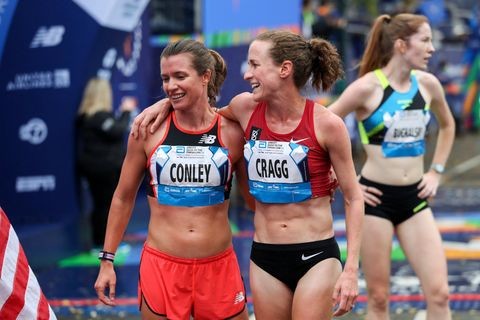
“I’m still around,” she told Runner’s World.

Cragg had a spectacular seven-month stretch between 2017 and 2018. In August 2017, she won the bronze medal at the world championships in London. The following February at the Tokyo Marathon, she finished third in 2:21:42. It was a a PR by almost six minutes, and the performance put her fifth on the U.S. all-time list.
She was announced as part of the Chicago Marathon field for 2018 but withdrew with an injury. In 2019, she raced only twice on the roads and both times the results were disappointing. She was seventh in 1:13:27 at the Prague Half Marathon in April, after previously hinting she might attempt to break Molly Huddle’s American record in the event (1:07:25). In August, she struggled at the Beach to Beacon 10K in Cape Elizabeth, Maine, finishing 14th in 34:40. After that, she withdrew from the 2019 Chicago Marathon.
“It was just overall fatigue,” Cragg said. “I think we just went too hard for too long. I ‘cooked myself’ is what I’ll say. Took some time off when we realized it wasn’t coming around for Chicago. Now I’m feeling a lot better and ready to go.”
Cragg said she went through a period of weeks when she felt tired and worn down, but then she would have glimmers of hope in strong workouts and think she needed to “keep plugging away.” After Beach to Beacon, she realized her fatigue was getting worse instead of better and decided she shouldn’t attempt Chicago.
She took a full three weeks with no running—and followed that up with about a month and a half of slowly building into full training again. At times, she worried her career was ending.
“You talk to any distance runner, you go through those ups and downs regularly,” she said. “It’s like you just can’t seem to get out of the slump. You don’t know whether to push harder or let go. I’ve been used to it over the years. But there was definitely still that fear that I might have overdone it; I’d hope it’s not undoable.”
by Sarah Lorge Butler
Login to leave a comment
2028 US Olympic Trials Marathon
Most countries around the world use a selection committee to choose their Olympic Team Members, but not the USA. Prior to 1968, a series of races were used to select the USA Olympic Marathon team, but beginning in 1968 the format was changed to a single race on a single day with the top three finishers selected to be part...
more...Shalane Flanagan has announced her retiring from professional running
With happy tears I announce today that I am retiring from professional running. From 2004 to 2019 I’ve given everything that’s within me to this sport and wow it’s been an incredible ride! I’ve broken bones, torn tendons, and lost too many toenails to count. I've experienced otherworldly highs and abysmal lows. I've loved (and learned from) it all.
Over the last 15 years I found out what I was capable of, and it was more than I ever dreamed possible. Now that all is said and done, I am most proud of the consistently high level of running I produced year after year. No matter what I accomplished the year before, it never got any easier. Each season, each race was hard, so hard. But this I know to be true: hard things are wonderful, beautiful, and give meaning to life. I’ve loved having an intense sense of purpose. For 15 years I've woken up every day knowing I was exactly where I needed to be.
The feeling of pressing the threshold of my mental and physical limits has been bliss. I've gone to bed with a giant tired smile on my face and woken up with the same smile. My obsession to put one foot in front of the other, as quickly as I can, has given me so much joy.
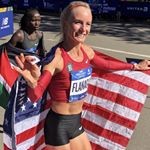
However, I have felt my North Star shifting, my passion and purpose is no longer about MY running; it's more and more about those around me. All I’ve ever known, in my approach to anything, is going ALL IN.
So I’m carrying this to coaching. I want to be consumed with serving others the way I have been consumed with being the best athlete I can be.
I am privileged to announce I am now a professional coach of the Nike Bowerman Track Club. This amazing opportunity in front of me, to give back to the sport, that gave me so much, is not lost on me. I’ve pinched myself numerous times to make sure this is real. I am well aware that retirement for professional athletes can be an extremely hard transition. I am lucky, as I know already, that coaching will bring me as much joy and heartache that my own running career gave me.
I believe we are meant to inspire one another, we are meant to learn from one another. Sharing everything I’ve learned about and from running is what I’m meant to do now.I would like to thank: The 5 coaches who guided me throughout my career, Michael Whittlesey and Dennis Craddock (2004-2005), John Cook (2006-2008), Jerry Schumacher (2009-2019), and Pascal Dobert (2009-2019). Each man was instrumental in developing me into the best version of myself.
Jerry, Pascal and I will continue to work together in this next chapter and I couldn’t be more grateful.
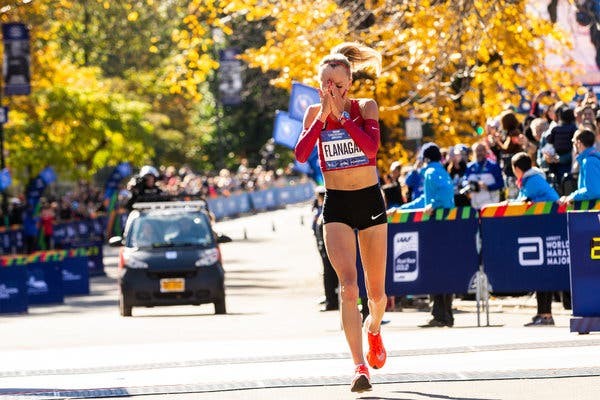
Jerry has been my life coach, running coach and now will mentor me towards my next goal of becoming a world-class coach myself. I’m thankful for his unending belief in me.
My family and husband who have traveled the world supporting my running and understanding the sacrifices I needed to make. Their unconditional love is what fueled my training.My longtime friend, Elyse Kopecky who taught me to love cooking and indulge in nourishing food. Run Fast. Eat Slow. has been a gift to my running and to the thousands of athletes.
My teammates, and all the women I've trained with, for pushing me daily, and the endless smiles and miles. They include: Erin Donahue, Shannon Rowbury, Kara Goucher, Lisa Uhl, Emily Infeld, Amy Cragg, Colleen Quigley, Courtney Frerichs, Shelby Houlihan, Betsy Saina, Marielle Hall, Gwen Jorgensen, Kate Grace.
My sponsor Nike for believing in me since 2004 and for continuing to support my new dream as a professional coach. I hope I made myself a better person by running. I hope I made those around me better. I hope I made my competition better. I hope I left the sport better because I was a part of it.
My personal motto through out my career has been to make decisions that leave me with “no regrets”.....but to be honest, I have one. I regret I can’t do it all over again.
by Shalane Flanagan
Login to leave a comment
TCS New York City Marathon
The first New York City Marathon, organized in 1970 by Fred Lebow and Vince Chiappetta, was held entirely in Central Park. Of 127 entrants, only 55 men finished; the sole female entrant dropped out due to illness. Winners were given inexpensive wristwatches and recycled baseball and bowling trophies. The entry fee was $1 and the total event budget...
more...Sara Hall of Flagstaff finished fifth Sunday at the Berlin Marathon, first among American women
Sara Hall, 36, ran a personal best 2 hours, 22 minutes, 16 seconds, sixth fastest in U.S. marathon history. Her previous PR was 2:26.20 at the 2018 Ottawa Marathon.
The women’s race was won by Ashete Bekere in 2:20:14, pulling away at the end from fellow-Ethiopian Mare Dibaba, 2:20:21, with Kenya’s Sally Chepyego taking third overall in 2:21:06.
Hall’s time takes four minutes from her previous best time of 2:26:20 and moves her up to sixth in the U.S. all-time rankings.
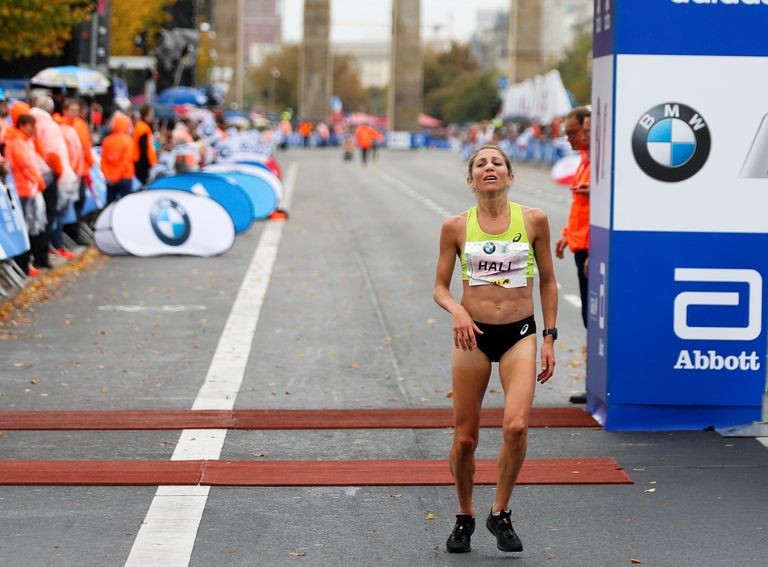
“I’m very happy. It’s the first time I’ve run a marathon with negative splits,” Hall told Runner’s World. “When I began to catch other women after halfway, I had fun and ran some 5:15 miles. It got tough near the end, with strong wind and running alone, but I finished strong. Ryan and I knew I was ready for an improvement, and it’s good to do it well.”
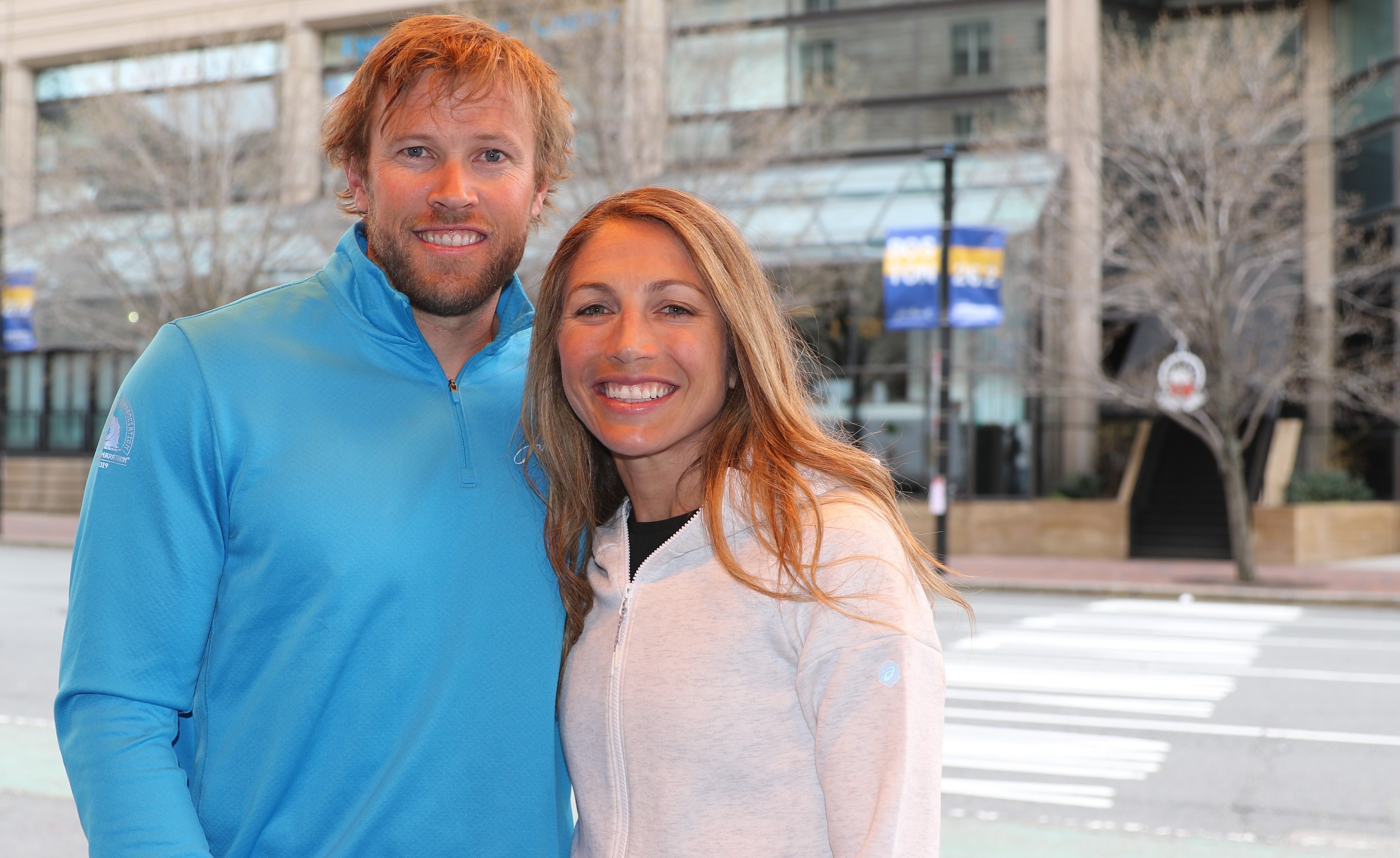
Hall is among several women with Arizona ties who are U.S. contenders for the 2020 Tokyo Olympics. Others include Amy Cragg, Emily Sisson, Kellyn Taylor, Desiree Linden, Allie Kieffer and Stephanie Bruce.
Hall also gave a lot of credit to her husband and coach, Ryan Hall, who is the American record holder in the half marathon. She said it was her best period of training ever, with not one day off for injury or illness since racing Boston in April.
“We knew from her training times that she was ready to move to a new level. It was a matter of getting it right in the race today,” Ryan Hall added.
by Jeff Mecalfe
Login to leave a comment
BMW Berlin Marathon
The story of the BERLIN-MARATHON is a story of the development of road running. When the first BERLIN-MARATHON was started on 13th October 1974 on a minor road next to the stadium of the organisers‘ club SC Charlottenburg Berlin 286 athletes had entered. The first winners were runners from Berlin: Günter Hallas (2:44:53), who still runs the BERLIN-MARATHON today, and...
more...Dathan Ritzenhein is Withdrawing from 2019 Chicago Marathon
Dathan Ritzenhein‘s injury woes continue. On Monday, Ritzenhein, the fourth-fastest US marathoner ever, announced that he is withdrawing from next month’s Bank of America Chicago Marathon due to chronic foot problems that “flared up some other areas.”
Ritzenhein’s Chicago preparations appeared to be going well. He ran 64:27 to win the Rock ‘n’ Roll Chicago Half Marathon on July 21, and ran 47:19 at the Crim 10-Miler in Michigan on August 24, his fastest performance over that distance since 2015. But after that race, Ritzenhein said, a nagging arthritis problem in his foot flared up and caused him to miss a few weeks of running. Fellow American Chris Derrick also withdrew from Chicago after suffering an ankle fracture at Crim.
“I’m feeling better now,” Ritzenhein told LetsRun.com, “but missed a few weeks of running and need a few more rebuilding.”
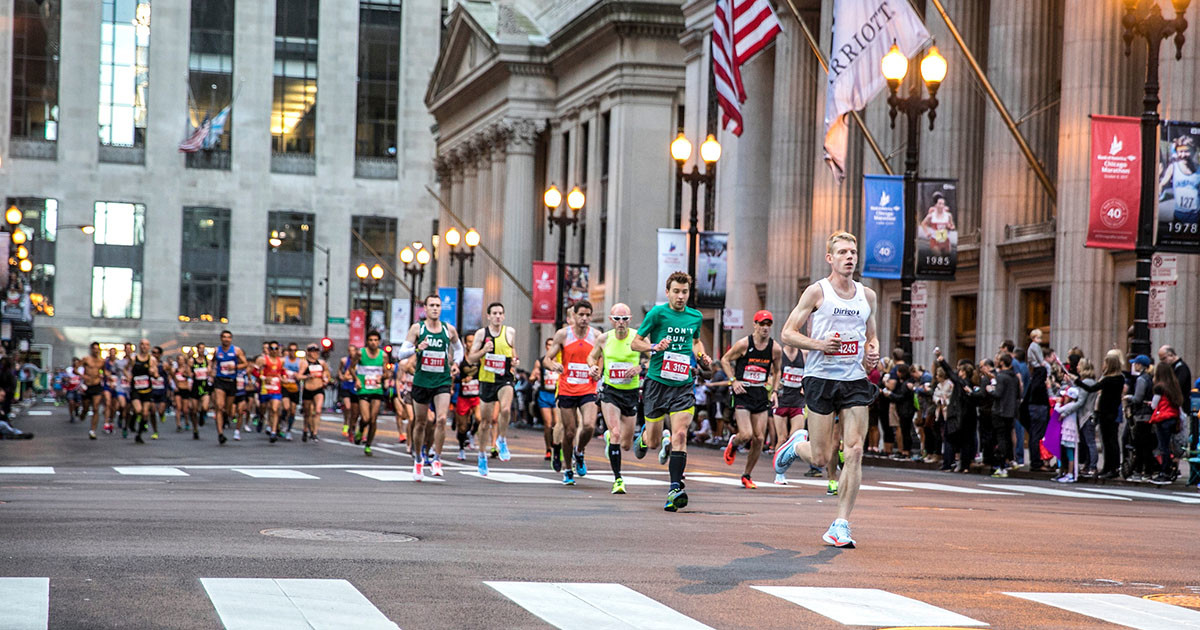
Ritzenhein said he still plans on being in Chicago on October 13 supporting fellow pro Parker Stinson, whom Ritzenhein has been coaching since last fall.
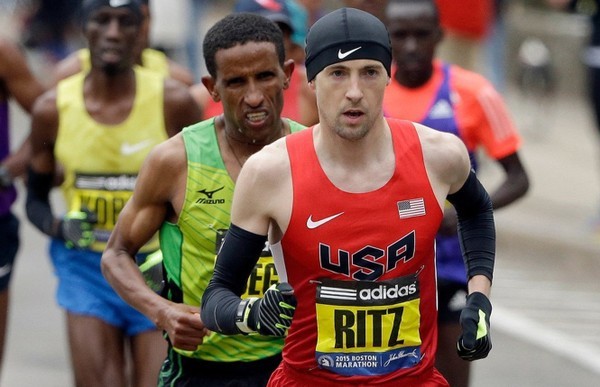
After making three consecutive Olympic teams in 2004, 2008, and 2012, injuries have consistently derailed the 36-year-old Ritzenhein in recent years. He was forced to drop out of the 2016 Olympic Trials and 2016 New York City Marathon and withdrew from the 2018 Boston Marathon just days before the race with a sacroiliac joint injury.
He has finished just one marathon in the last four years, placing 19th in Boston in April in 2:16:19 after attempting an abbreviated eight-week buildup in order to stay healthy.
While Ritzenhein officially broke the news of his withdrawal on social media on Monday, a poster on the LetsRun messageboard — who claimed to be the same person who correctly predicted that both Amy Cragg and Jordan Hasay would withdraw from Chicago last year — started a thread on Sunday predicting that Ritzenhein would withdraw from the race.
Login to leave a comment
Bank of America Chicago
Running the Bank of America Chicago Marathon is the pinnacle of achievement for elite athletes and everyday runners alike. On race day, runners from all 50 states and more than 100 countries will set out to accomplish a personal dream by reaching the finish line in Grant Park. The Bank of America Chicago Marathon is known for its flat and...
more...USA Olympic Trials Marathon has achieved the IAAF Gold Label Status
USA Track & Field (USATF) announced today that the 2020 USA Olympic Trials Marathon, scheduled for February 29, in Atlanta, has been granted IAAF Gold Label status. That's a critical development because it means that the top-5 male and female finishers will automatically achieve 2020 Olympic Games qualifying marks, regardless of their finish times. As part of the Tokyo Olympic Games qualifying program unveiled by the International Association of Athletics Federations earlier this year, top-5 finishers at Gold Label marathons are given automatic Olympic Games qualifiers. As such, the six-athlete USA Olympic team in the marathon can be named with certainty on the day of the Trials with the top-3 male and female finishers nominated for the team.
In a press release, USATF said that "the announcement of the Tokyo 2020 Qualification System in March presented challenges to USATF and its partners as planning for marathon trials had begun well before the changes to the qualification system were announced." Those partners include the not-for-profit Atlanta Track Club, which will host the Trials, as well as NBC the network which will broadcast them. The Trials would be devalued for both of these parties if the team could not be named that day.
Right now only a handful of USA athletes have achieved the Olympic Games qualifying standards (2:11:30 for men and 2:29:30 for women since January 1, 2019). On the men's side, there are only two, Scott Fauble and Jared Ward who ran 2:09:09 and 2:09:25, respectively, at last April's Boston Marathon (they also finished in the top-10, which also confers qualifying status at any Abbott World Marathon Majors event). On the women's side there are nine: Emily Sisson (2:23:08), Jordan Hasay (2:25:20), Kellyn Taylor (2:26:27), Molly Huddle (2:26:33), Aliphine Tuliamuk (2:26:50), Des Linden (2:27:00), Nell Rojas (2:28:06), Roberta Groner (2:29:09), and Lindsay Flanagan (2:30:07/9th place at Boston). Those athletes lose the relative advantage of having a qualifying mark in advance of the race.
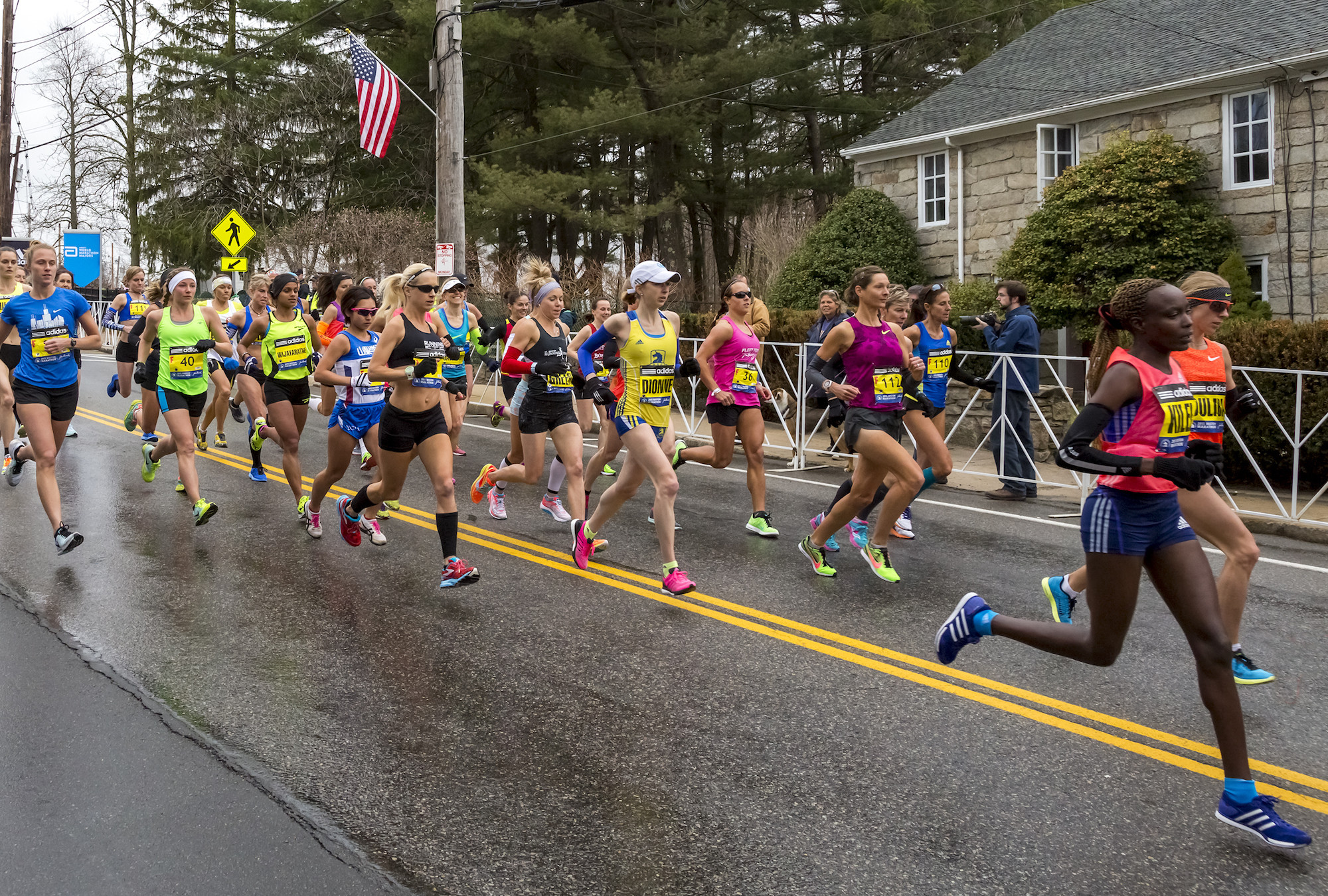
But, for most of the 181 men and 340 women who have qualified, according to a tally done by MarathonGuide.com, this announcement will be good news. Athletes can now approach the trials in the traditional way, with their focus only finish place and not on time. That's particularly important considering the difficulty of the Atlanta course which has a number of challenging hills.
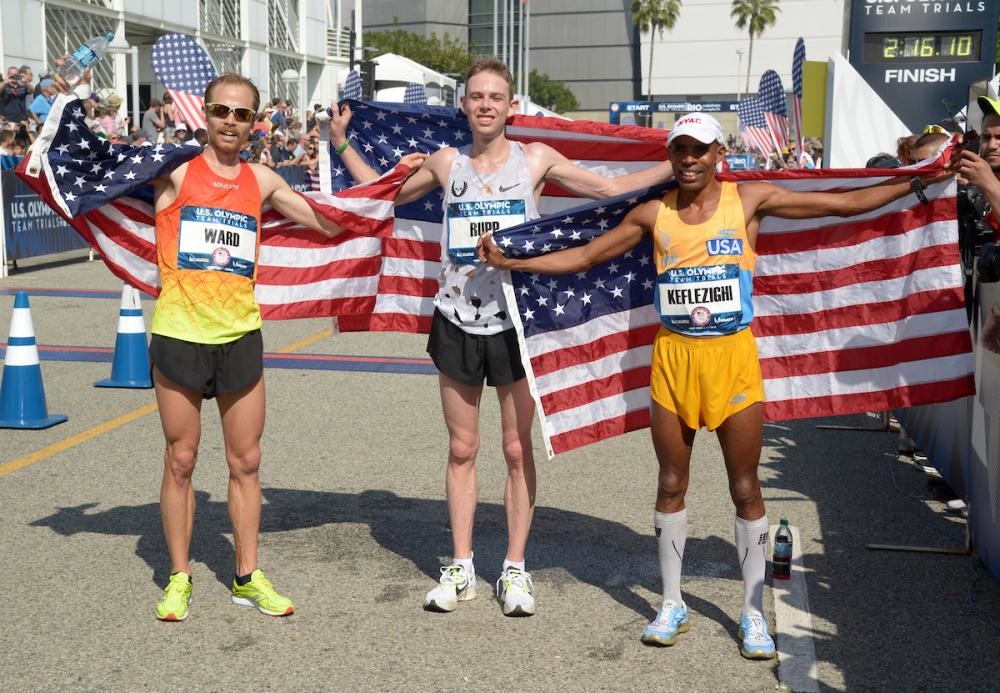
"Hilly is an understatement," said Brogan Austin who won the men's division of an 8-mile test event held on part of the course last March. "I definitely have a new respect for this marathon. I only ran eight miles. I can't imagine doing four times that distance."
Amy Cragg, the winner of the 2016 Trials in Los Angeles, agreed. "It's going to be really, really tough," she told Race Results Weekly after winning the women's division of the test event last March. "We're going to send a good women's team, a really good women's team (to Tokyo). If you can get through this course, you're going to be ready."
Login to leave a comment
2028 US Olympic Trials Marathon
Most countries around the world use a selection committee to choose their Olympic Team Members, but not the USA. Prior to 1968, a series of races were used to select the USA Olympic Marathon team, but beginning in 1968 the format was changed to a single race on a single day with the top three finishers selected to be part...
more...Amy Cragg Puts Trust in Her Team, and now she’s back training for the 2019 Chicago Marathon after 18 months away from racing 26.2-miles
Cragg, 35, is a member of the Bowerman Track Club, based in Portland, Oregon, under the direction of coach Jerry Schumacher. And now she’s back training for the 2019 Chicago Marathon on October 13, after 18 months away from racing 26.2-miles. The last time was the 2018 Tokyo Marathon, where she placed third in 2:21:41, a personal best by more than five minutes, making her the fifth-fastest U.S. woman at the distance.
In the past year, the overriding goal, Cragg said, was doing whatever was best to ultimately make the 2020 Olympic team. The Olympic Trials are set for February 29 in Atlanta, where the top three finishers who have the Olympic qualifying standard will be named to the team. Cragg still needs to achieve the Olympic standard within the specified window—either by time (2:29:30) or by placing in the top 10 in Chicago. Those are her primary goals for the October race, but as her training tells her more about her fitness in the months ahead, she’ll likely target a few more ambitious secondary goals.
“In training and everything we’re going to protect that goal of the qualifying standard for the Olympics—that’s what we’re going there to do,” she said. “But at the same time if things go well, we’ll narrow the focus of what I want to achieve on race day.”
The Chicago Marathon may serve as a good preview for the February Trials, too. Jordan Hasay, the second-fastest U.S. woman in the marathon, is also planning to compete—her personal best of 2:20:57 was set at the 2017 Chicago Marathon, when she placed third. Hasay has indicated she’d like to set the American record in October, currently held by Deena Kastor in 2:19:36.
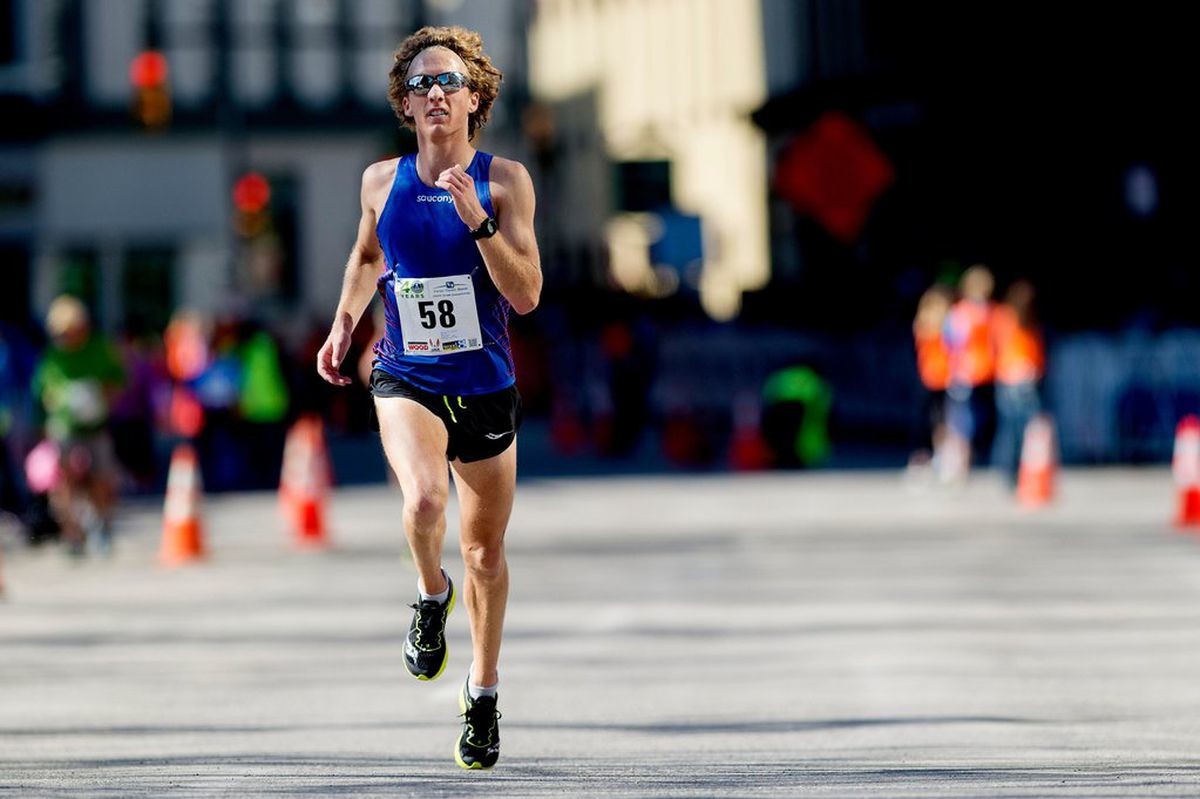
Although she was upset to not compete last year, not all was lost for Cragg after she withdrew from the marathon. She started focusing on shorter distances and was thrown into workouts with her teammates, all of whom are Olympians specializing in middle-distance events—and are rather good at them, too. Like Shelby Houlihan, American record holder in the 5,000 meters (14:34.45) and Colleen Quigley, national indoor mile champion.
“It was really hard. It’s a different stimulus than I’m used to,” Cragg said. “They’re the best in the world at what they do. There were a lot of tough moments, putting my head down and hanging on in practice.”
As a result, though, Cragg took third in the national road 5K championships in November and fifth at the U.S. cross-country championships in January. And she believes the focus on quicker cadence will help her in the marathon, too.
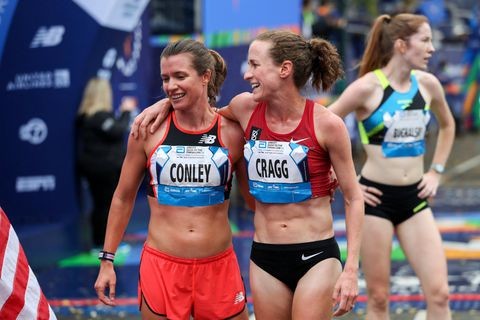
“It’s so important to go back to that faster stuff because your legs can almost go kind of dead after all that marathon training—if you’re just running 130 or 140 miles a week, day-in and day-out, all of a sudden those regular runs just naturally start slowing down,” she said. “You need to throw in that extra speed to keep the quality high. There will be five-minute miles thrown into a marathon—it’s not the speed that kills you, it’s the faster turnover.”
The Bowerman women’s group has plenty of members to keep things moving. In the past year, the group has added to its roster, including Karissa Schweizer, a six-time NCAA champion from the University of Missouri; Vanessa Fraser, a nine-time All American at Stanford University; and Elise Cranny, an 12-time All American at Stanford.
by Erin Strout
Login to leave a comment
Bank of America Chicago
Running the Bank of America Chicago Marathon is the pinnacle of achievement for elite athletes and everyday runners alike. On race day, runners from all 50 states and more than 100 countries will set out to accomplish a personal dream by reaching the finish line in Grant Park. The Bank of America Chicago Marathon is known for its flat and...
more...Could an american woman win the Chicago Marathon this year? Very strong field is lined up
There haven't been three American women in the top five at the Chicago Marathon since 1994, and the 2019 field has a good shot at changing that, Jordan Hasay, Amy Cragg, Stephanie Bruce, Lindsay Flanagan and Emma Bates have a chance at rewriting Chicago Marathon history this fall.
On October 13, one of the strongest-ever American contingents will line up in Chicago for a race that hopes to see Deena Kastor’s American record fall.
Hasay announced in May that she would be returning to Chicago to target the American record and yesterday the remainder of the American elites were announced for the world major. This field includes the five women mentioned above who all own sub 2:30 personal bests.
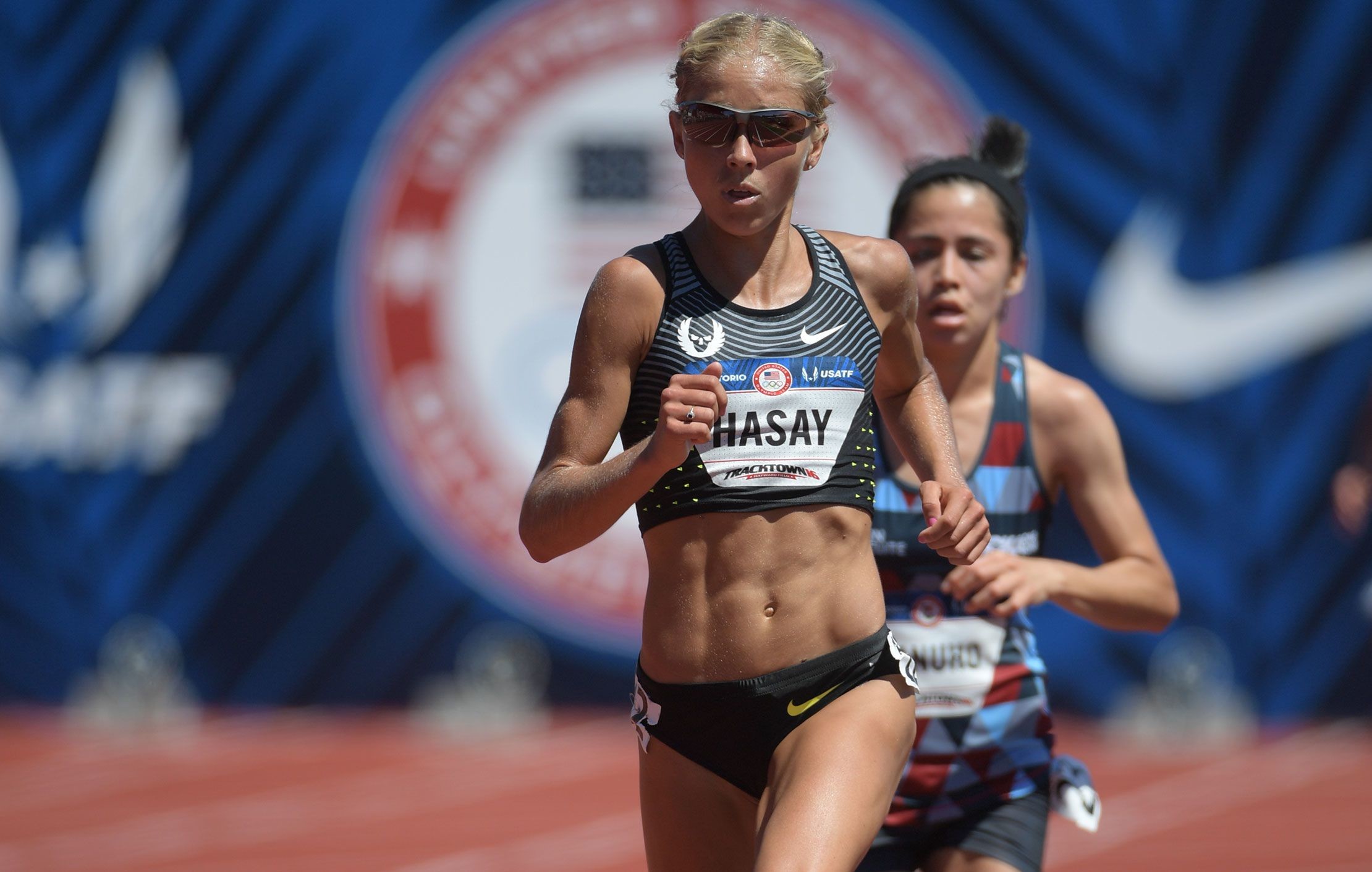
Cragg, who was the 2016 U.S. Marathon Olympic Trial champion, is an interesting addition to the field. She’s run the fifth-fastest time in American history and ended a 34-year medal drought by taking home a World Championship bronze in 2017.
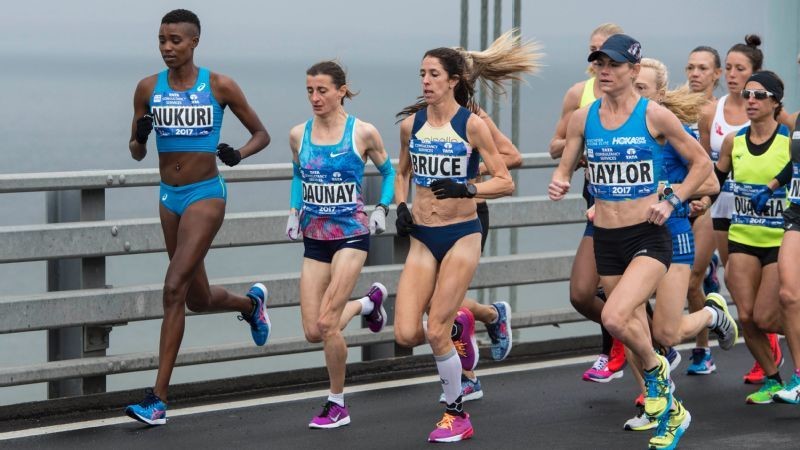
She’s barely raced since running her personal best at the 2018 Tokyo Marathon, but we’re excited to see what she can do come the fall.
There haven’t been three American women in the top five at the Chicago Marathon since 1994, and this particular field has a good shot at changing that.
by Madeleine Kelly
Login to leave a comment
Bank of America Chicago
Running the Bank of America Chicago Marathon is the pinnacle of achievement for elite athletes and everyday runners alike. On race day, runners from all 50 states and more than 100 countries will set out to accomplish a personal dream by reaching the finish line in Grant Park. The Bank of America Chicago Marathon is known for its flat and...
more...Strong field of American runners will join previously announced superstars Galen Rupp and Jordan Hasay at the Chicago Marathon on October 13
“This year’s elite field highlights an exciting resurgence we are seeing in American distance running right now,” said Bank of America Chicago Marathon Executive Race Director Carey Pinkowski. “We have a deep pool of American runners who are coming to Chicago to run fast, and we cannot wait to welcome them in the fall. We could see new American records and a lot of personal bests in October.”
With a PR of 2:20:57, Jordan Hasay leads this year’s women’s field as the second-fastest American woman in history and the fastest to ever run the Bank of America Chicago Marathon. Hasay hopes to put Deena Kastor’s long-standing American record, 2:19:36, in jeopardy.
But Hasay’s primary competitor won’t be the clock alone – Amy Cragg, Emma Bates, Stephanie Bruce, Lindsay Flanagan and Taylor Ward represent a strong contingent of U.S. women all vying for podium finishes. The last time three American women finished in the top five in Chicago was 1994, and the last time U.S. women claimed the top two spots was 1992. Chicago’s history could be rewritten this fall.
Cragg, a member of Nike’s Bowerman Track Club since 2015 and the winner of the 2016 U.S. Olympic Marathon trials, enters this year’s field as the fifth-fastest American woman in history with a personal best of 2:21:42. Cragg stunned the world at the 2017 IAAF World Championships Marathon when she ended a 34-year medal drought by taking home the bronze. While she hasn’t raced much in 2019, she won the one-time Road to Gold eight-mile road race in Atlanta in March.
Galen Rupp, a two-time Olympic medalist in the marathon (bronze) and 10,000m (silver) and the current holder of four American records, stands out in the men’s field as the 2017 Bank of America Chicago Marathon champion and as one of the fastest runners in U.S. history with a PR of 2:06:07. While it will be difficult to match the foot speed of someone like Rupp, several American men have the potential to run significant personal bests and place inside of the top ten.
Brogan Austin, Chris Derrick, Scott Smith, Diego Estrada, Dathan Ritzenhein, Noah Droddy and Brendan Gregg are among some of the top Americans in this year’s field. Austin closed out 2018 with a career-boosting win, a national title and a huge personal best, 2:12:38, at the California International Marathon. Prior to that breakthrough performance, he broke the course record at the Indiana Monumental Half Marathon, clocking 1:02:39. He built on his 2018 momentum by winning the Road to Gold eight-mile road race in March.
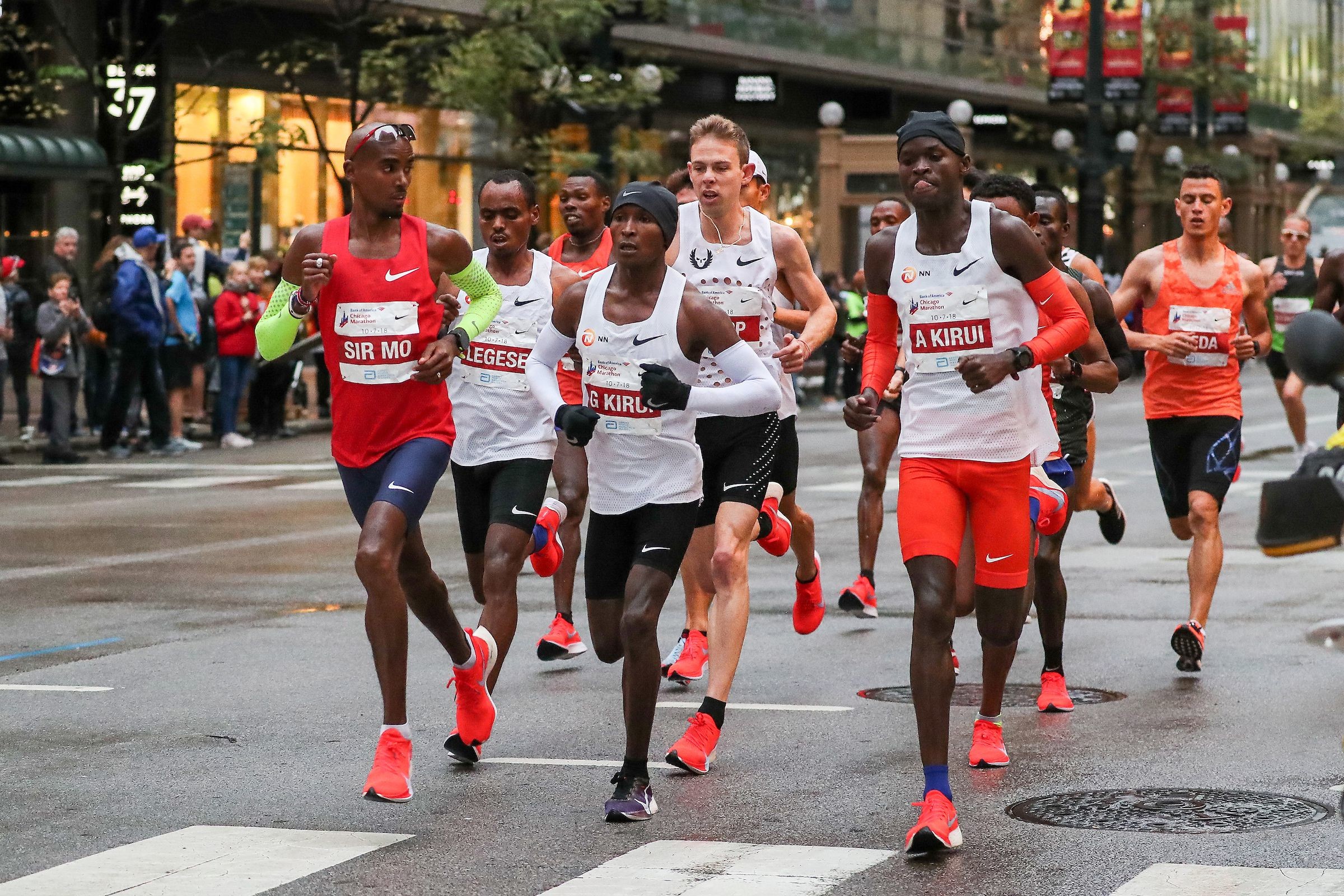
The Chicago Marathon will be Austin’s third go at the marathon. Derrick, a native of Naperville, Illinois and the 2013-2015 U.S. Cross Country champion, made his highly anticipated marathon debut in Chicago in 2017, running 2:12:50 to finish ninth. He followed up his debut performance with a ninth-place finish in 2:13:08 at the 2018 New York City Marathon.
Derrick, one of the elite pacers for Nike’s Breaking2 project in 2017, is one of the most versatile runners in the field with PRs of 13:08 in the 5,000m, 27:31 in the 10,000m, and 1:01:12 in the half marathon.
Smith, a 4:01-miler, experienced a huge breakthrough in the marathon in 2017 when he posted a 2:12:21 in Frankfurt, and then he hung on to finish sixth overall at the 2018 Boston Marathon (the now infamous year where runners endured whipping winds and freezing rain). He trains with Northern Arizona Elite, and he has represented the U.S. internally in both the half marathon and marathon at the IAAF World Championships. Smith’s strongest performance came in May when he finished second at the USATF 25K national championships.
Estrada has been a favorite among Chicagoans, ever since his 2016 breakout performance in Chicago and his second-place finish at the 2017 Bank of America Shamrock Shuffle. After slipping on a bottle at the 10K mark during his Chicago debut and badly twisting his ankle, Estrada rallied to finish eighth overall (first American) in his still-standing personal best, 2:13:56. He finished 16th in 2017 and he did not race a marathon in 2018. Estrada hasn’t raced much on the roads in 2019, but his half marathon speed (1:00:51) and 2:13 PR indicate that he has the talent to be a top marathon runner heading into 2020.
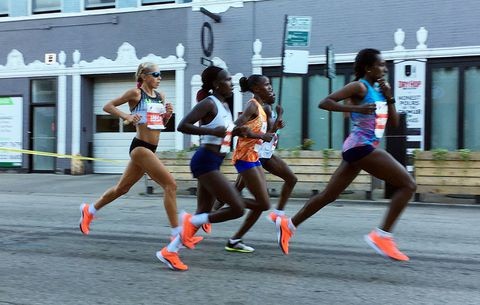
Ritzenhein (“Ritz”), a three-time Olympian and the fifth-fastest American in history, enters Chicago with one of the most impressive resumes. He has broken 13 minutes in the 5,000m, run 27:22 in the 10,000m, collected four national titles, and earned a bronze medal at the 2009 IAAF World Championships Half Marathon. He set his marathon PR seven years ago in Chicago, 2:07:47. At 36 and now racing with the Hansons-Brooks Distance Project, Ritzenhein is a veteran, but his 1:01:24 half marathon earlier this year still makes him a top contender.
Droddy and Gregg both bring massive potential to this year’s field. Droddy, always a crowd favorite, ran his personal best, 2:16:26, in Chicago in 2017, but his half marathon best, 1:01:48, suggests that there is room to demolish his PR this fall. Gregg made his debut in Chicago in 2014 in 2:18:30, and he experienced his best performance in 2018 at the California International Marathon, running 2:13:27.
This year’s field also includes 25K American record-holder, Parker Stinson, and exciting debuts from Reed Fischer and Justin Gallegos. In 2018, Gallegos became the first professional athlete with cerebral palsy to sign a contract with Nike.
Login to leave a comment
Bank of America Chicago
Running the Bank of America Chicago Marathon is the pinnacle of achievement for elite athletes and everyday runners alike. On race day, runners from all 50 states and more than 100 countries will set out to accomplish a personal dream by reaching the finish line in Grant Park. The Bank of America Chicago Marathon is known for its flat and...
more...Everything you need to know about 2020 US Olympic Marathon trials
The selection policy for the 2020 US Olympic marathon team, cloudy for months after the IAAF announced in March that the qualification process for the 2020 Olympic Games is changing, is quietly beginning to take shape. For those wishing to preserve the best thing about the US Olympic Marathon Trials — top three across the line make the team — there was some good news, but there remains work to be done. After speaking with sources at the IAAF and USATF, here’s where we stand eight months from the Olympic Trials, which will be held in Atlanta on February 29.
The first bit of news trickled out on June 25 in the IAAF Athlete Representative Newsletter, which was promptly shared by agent Dan Lilot on Twitter. The update? After lobbying from USATF, the IAAF Council approved that “national Tokyo 2020 Olympic selection championship/trials in the men’s and/or women’s marathon, held in 2019 or 2020, may be granted Gold Label status if requested by the Member Federations and if the race can meet the Gold Label requirement for number of Gold Label athletes.”
Normally, Gold Label status is awarded to a marathon based on the previous year’s field. So to attain Gold Label status in 2020, the 2019 edition of the race would have to have six men and six women with Gold Label status that year, or seven athletes if it’s a single-gender race (Gold Label status is awarded to an athlete based on their world ranking at the end of the previous year; a marathoner has to be ranked in the world’s top 200 to earn Gold Label status). The 2019 edition of the US Olympic Marathon Trials would normally be the 2019 USATF Marathon Championships, but USATF isn’t holding a marathon championship this year.
So what the IAAF is saying is that USATF doesn’t have to worry about the field at the 2019 USATF Marathon Championships; as long as the Trials has enough Gold Label athletes, it can be granted Gold Label status.
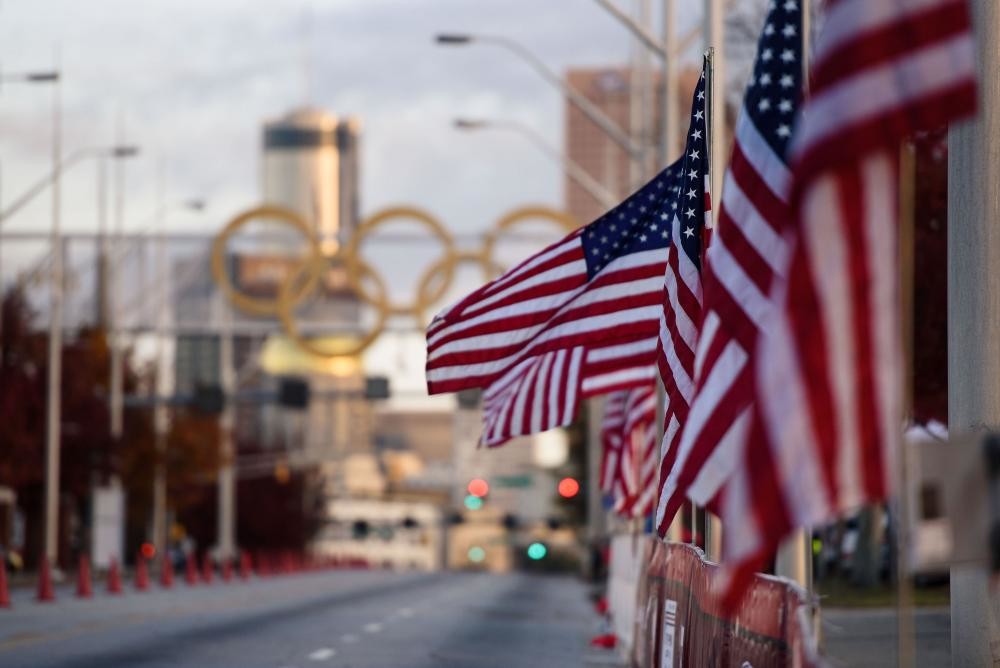
This is good news for American women. Remember, an athlete automatically achieves the Olympic standard by finishing in the top five at a Gold Label marathon. And the women’s race at the US Olympic Trials should have no problem hitting the minimum Gold Label requirements; 11 American women had Gold Label status in 2019, and as of the most recent world rankings, 10 are on track to earn it in 2020. That means that on the women’s side, the Olympic Trials will be able to use the “top three make the team” model. (Also note that Japan, which is holding its first Olympic marathon trials in September, will easily meet the criteria on the men’s and women’s side).
That may not sound like a huge deal, considering nine American women already have the Olympic standard. But consider two women who do not have the standard: Amy Cragg and Shalane Flanagan, both members of the 2016 Olympic team. If it’s a bad weather day on the hilly Atlanta course, it’s not out of the question that third place could be slower than the Olympic time standard of 2:29:30 (Flanagan finished third at the ’16 Trials in 2:29:19). Achieving Gold Label status puts any of those worries to bed. That’s a win for USATF.
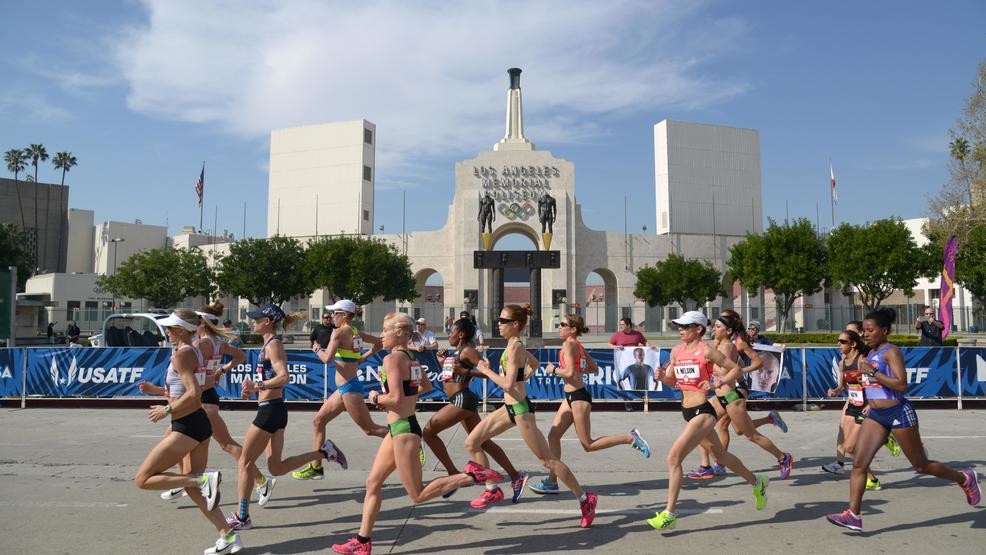
On the men’s side, USATF still has some work to do. Only one American man, Galen Rupp, qualified for Gold Label status in the marathon in 2019. And right now, Rupp is the only American man on track to earn it again in 2020 (Scott Fauble and Jared Ward are just outside, at #205 and #210 in the current world rankings).
That means that, based on the criteria the IAAF announced on June 25, there’s no way that the men’s race at the Olympic Trials will qualify for Gold Label status. And the men are the ones who need it: Fauble and Ward are the only Americans with the Olympic standard, and the time standard of 2:11:30 could be tough to hit on the day in Atlanta.
Login to leave a comment
The standards are tough but the US is running the trials in weather most similar to Tokyo. - Bob Anderson 7/10 9:54 pm |
2028 US Olympic Trials Marathon
Most countries around the world use a selection committee to choose their Olympic Team Members, but not the USA. Prior to 1968, a series of races were used to select the USA Olympic Marathon team, but beginning in 1968 the format was changed to a single race on a single day with the top three finishers selected to be part...
more...America’s Amy Cragg is set to race the Prague Half on Saturday
Success for reigning USA Olympic Trials Marathon champion Amy Cragg did not come easily or quickly. Indeed, the 35 year-old Nike Bowerman Track Club athlete nearly quit the sport before her true talent really showed through, eventually carrying her to Olympic Trials wins in both 2012 (at 10,000m) and 2016 (marathon), four USA titles, and a 2:21:42 marathon personal best. It’s been a long, and sometimes bumpy, road.
“Definitely, I’ve made some mistakes along the way,” Cragg told Race Results Weekly in a telephone interview from Prague where she’ll be running the Sportisimo Prague International Half-Marathon on Saturday. “I’ve learned from them and that’s kind of led me to here. So, every once in a while I’ve looked back and I’m, like, I should have done this differently or this differently. But, the reality is that I might not have ended up here. I think I’m in a really good place.”
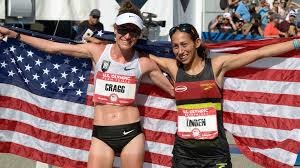
Working with coaches Jerry Schumacher and Pascal Dobert and Bowerman teammate Shalane Flanagan since the end of 2015, Cragg has blossomed into one of America’s best at 26.2 miles. After winning the February, 2016, Marathon Trials on a brutally hot day in Los Angeles, she went on to finish ninth in the Olympic Games Marathon in Rio.
She backed up that performance a year later with a thrilling, late-race charge at the 2017 IAAF World Championships marathon in London, taking the bronze medal (the first medal for a USA woman at those championships in the marathon since 1983), and only missing the silver by a fraction of a second.
She recovered from her London race well, then ran the Tokyo Marathon in February, 2018, finishing third in an excellent 2:21:42. That performance made her the fifth-fastest American of all time behind only Deena Kastor, Jordan Hasay, Flanagan and Joan Samuelson.
"I love where I’m at,” Cragg continued. “I love my team and my coach. Just living in Oregon, that’s been incredible. I think overall, those rough moments, those times when I considered stopping have made me a stronger athlete. I’m glad I went through that. It’s hard to say that. Those times, I think I really learned a lot from them.”
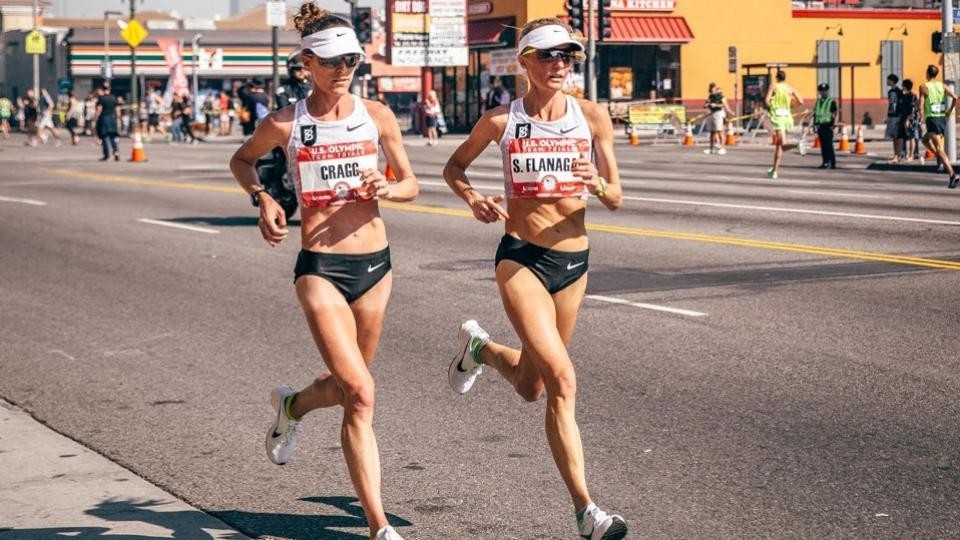
Cragg is at an unusual juncture in her career. She hasn’t run a marathon in over a year. She built-up for Chicago last October, but ended up withdrawing from the race after she and her coaches felt that her training hadn’t brought her to the fitness she would need to run her best. They had intense discussions, she said, about what to do next.
“When I pulled out of Chicago last year the big talk was, OK, what do we really want to get out of the next two years?” Cragg said. “I’ll probably be in the sport two years and reassess. The big thing is making another Olympic team and trying to perform well in Tokyo. Everything we do from here on out, that’s the goal to make that team and we’ve been working back from there.”
Cragg decided not to do a spring marathon this year. Instead, she worked with her Bowerman teammates Shelby Houlihan, Marielle Hall, Courtney Frerichs, and Karissa Schweizer to get ready for the USATF Cross Country Championships last February where she finished fifth in her first national cross country championships in nine years.
A month later she ran the special Road to Gold test event in Atlanta where she was able to run on the 2020 Olympic Trials course. Uncontested, she covered the 8-mile route in 43:23 and won by a minute. She told Race Results Weekly that the Atlanta race was essentially the kick-off of her Trials training.
“I felt pretty good,” Cragg said. “I think I’m in a good position and I’m pretty excited to get into the bigger miles. For me, that makes a huge difference. I feel ready to start that, which is exciting for me.”
Saturday’s race in Prague is the next logical step on Cragg’s long journey to Atlanta next February for the marathon trials and Tokyo for the Olympics next August. On Prague’s flat, record-eligible course Cragg wants to race hard with the goal of improving herself as a marathoner.
by David Monti
Login to leave a comment
Prague Half Marathon
Start the RunCzech season with one of the biggest running events in the Central Europe! Every year the Sportisimo Prague Half Marathon excites spectators with performances of elite athletes breaking records. Enjoy a course with incomparable scenery in the heart of historic Prague that follows along the Vltava river and crisscrosses five beautiful bridges. Take in majestic views of the...
more...Former World Half Marathon bronze medalist Fancy Chemutai will compete in her second half marathon in Prague
Fancy Chemutai, who injured her ankle in May 2018, announced her return to action in January, finishing second at the Houston Half Marathon in a time of 66:48, and believes she will be strong enough to challenge the course record in Prague, currently held by compatriot Joyciline Jepkosgei in 64:52.
"I have been in good form for some time after the injury healed. It is a challenge for me in Prague but when I say I am back to my full potential, it means I have gauged myself. I will still fight for medals. I have sat down with my coach and I believe I have a chance to race again," said Chemutai, who currently trains in Iten.
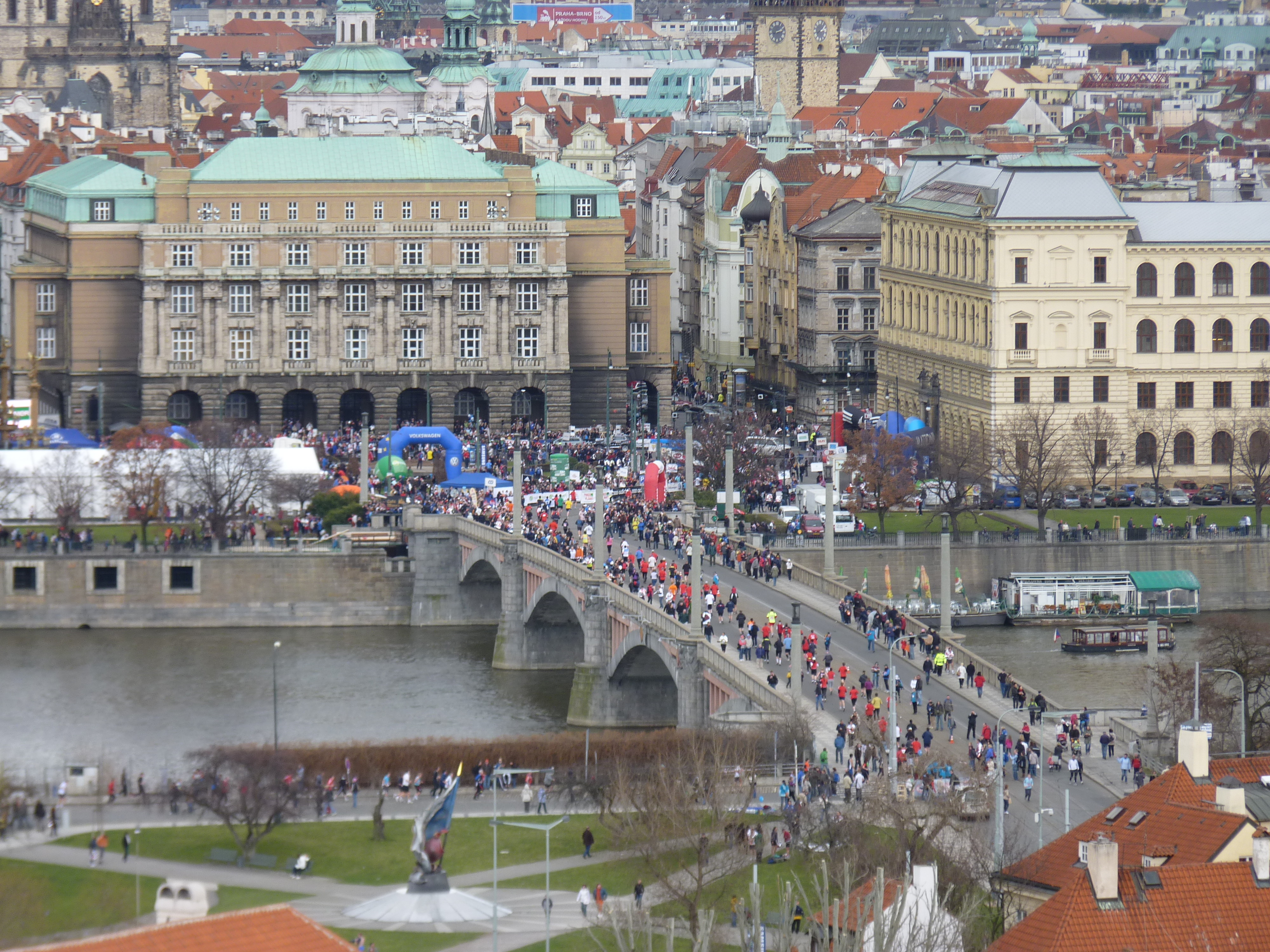
The Kenyan, whose personal best time is 64:52, and last year's Prague runner-up Caroline Kipkirui (65:07), a Kenyan now competing for Kazakhstan, will lead Kenya's delegation to the Czech Republic capital.
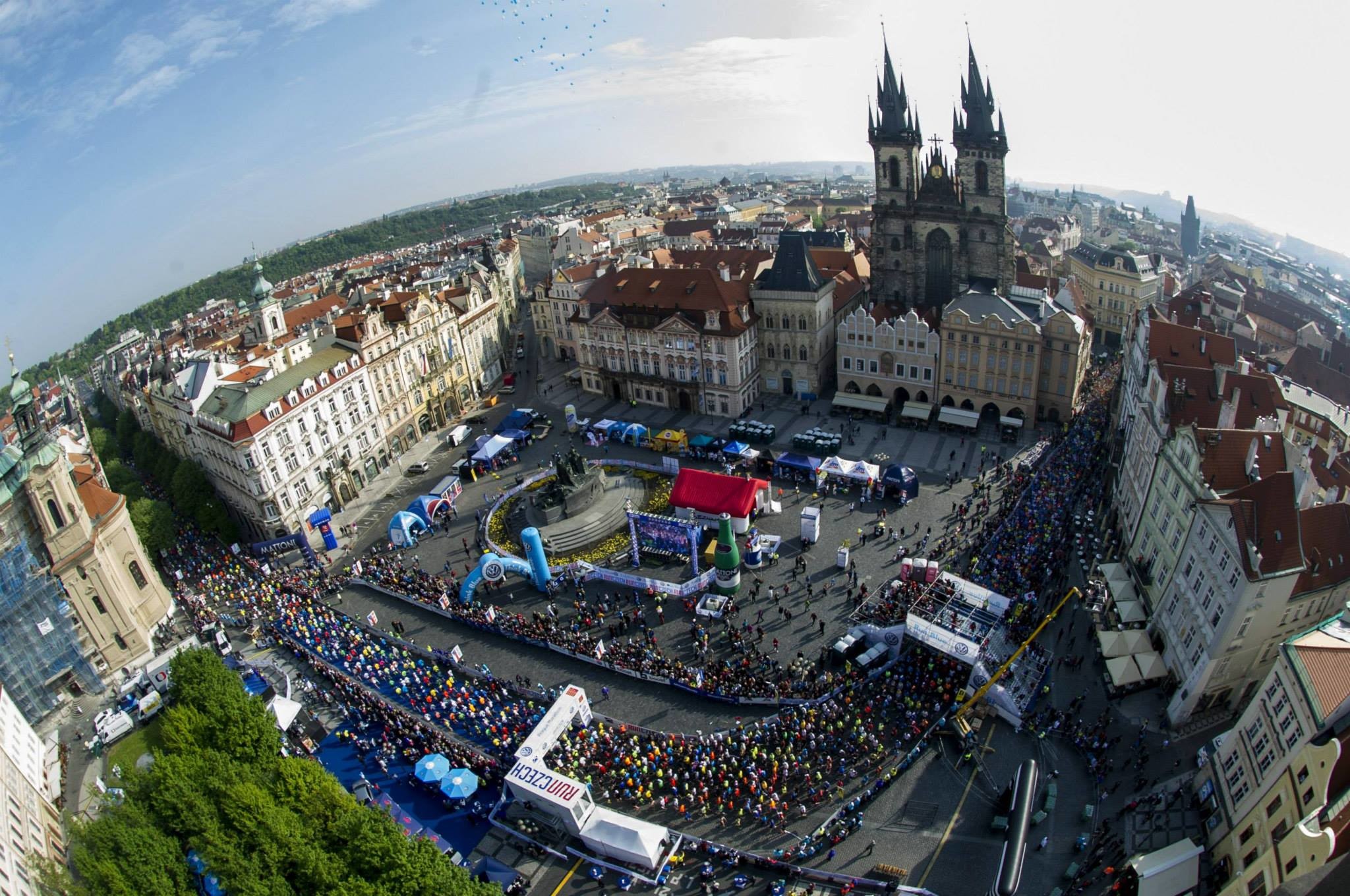
However, they will also be up against strong opposition from Asian record-holder Alia Mohammed Saaeed (66:13), European 10,000m champion Lonah Chemtai Salpeter (67:55) of Israel and world marathon bronze medalist Amy Cragg from the United States (68:27).
"I have plans to run the full marathon, but the injury slowed me down," Chetumai said. "Now that I am back in action, I will discuss with the coaches and see how fast I can move to the marathon."
Login to leave a comment
Prague Half Marathon
Start the RunCzech season with one of the biggest running events in the Central Europe! Every year the Sportisimo Prague Half Marathon excites spectators with performances of elite athletes breaking records. Enjoy a course with incomparable scenery in the heart of historic Prague that follows along the Vltava river and crisscrosses five beautiful bridges. Take in majestic views of the...
more...2012 Olympic 10,000m silver medalist Sally Kipyego, will be running her first marathon as an American at Boston
2012 Olympic 10,000m silver medalist Sally Kipyego, who will be running her first marathon as an American.
We break down the elite fields below, but we start with some analysis of Kipyego, who is returning to racing in 2019 after missing most of the past two years.
When John Hancock announced the 2019 US elite field for Boston last month, we noted that there is currently a “Studly Six” in US marathoning — Amy Cragg, Jordan Hasay, Molly Huddle, Shalane Flanagan, Des Linden, and Sally Kipyego (who has never before run for the US). At the time, only two of those women (Hasay and Linden) were entered in Boston, but the updated field released today included Kipyego’s name, which spices things up quite a bit.
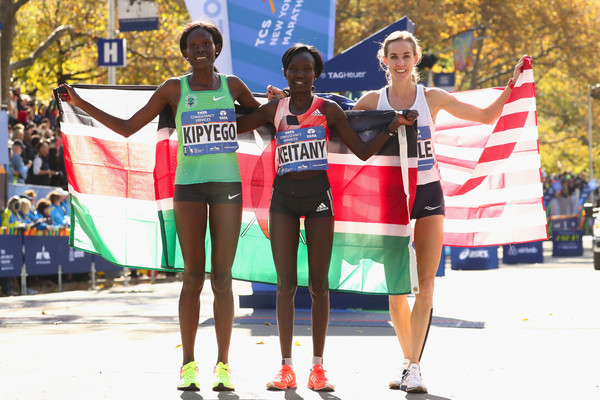
Kipyego, 33, became a US citizen in January 2017 but has only raced once since. She took 2017 off to have a baby, giving birth to daughter Emma in July 2017, but her return to training took longer than anticipated and she did not race again until June 2018, where she was just 10th at the BAA 10K in 34:32. Kipyego was slated to run the NYC Marathon last fall, but was forced to withdraw a month before the race, citing malaria and pneumonia.
But Kipyego remains a monster talent, and it wouldn’t be a surprise to see her on the plane to Tokyo with Team USA in 2020. At Texas Tech, she became the only woman to win three NCAA XC titles, and after turning pro, she put together a track career more successful than any of her US contemporaries: PRs of 14:30 (four seconds faster than the American record) and 30:26 (only Flanagan and Huddle have run faster among Americans) for 5k and 10k on the track, and a pair of global 10k silvers at the 2011 Worlds and 2012 Olympics. She’s also run 68:31 in the half marathon, and in her only career marathon finish she was 2nd in NYC in 2016, one spot ahead of Huddle.
The question, of course, is whether Kipyego can return to that form after a long layoff. We will learn a lot about her over the next three months, and that begins next weekend in Houston, where Kipyego is entered in the half marathon. Should Kipyego run well there, there will be a lot of hype for Boston.
Login to leave a comment
Kenyan-born American runner Paul Chelimo wins his first USA road title this morning in New York
Login to leave a comment
Amy Cragg has withdrawn from the 2018 Chicago marathon
Login to leave a comment
Gwen Jorgensen added to the 2018 Chicago Marathon field
Login to leave a comment
Olympian Amy Cragg Joins 2018 Bank of America Chicago Marathon American Women’s Elite Field
Login to leave a comment
How fast did Amy Cragg run at the Tokyo Marathon?
Login to leave a comment
Months of work, time, sacrifice and determination paid off for Amy in Tokyo
Login to leave a comment
Dickson Chumba wins the Tokyo Marathon again...six Japanese Runners under 2:09
Kenya’s Dickson Chumba (the 2014 Tokyo and 2015 Chicago champion) opened a nice gap as they approach 38km and went on to win in 2:05:29.
At 40k Japan’s Yuta Shitara takes another swig from his festive bottle and grits his teeth as he hunts down and passes Amos Kipruto.
This is a man on a mission! Yuta Shitara did not let up and accomplished the following: 1. Ran a Japanese marathon record of 2:06:11 2. Finished 2nd in the Tokyo Marathon (highest finish ever by a Japanese man at a World Marathon Major) 3. Won 100 million yen for setting the NR. That's $936,000US.
Wilson Kipsang dropped out at 15k...Amy Cragg finished third in the women’s race taking five minutes off her PR. (2:21:42). Ethiopian’s Birhane Dibaba won the female race in 2:19:51.
This year’s race was the biggest field ever with 35,500 starters.
Login to leave a comment
Some bold predictions at the Tokyo Marathon press conference Friday
Login to leave a comment
America’s Amy Cragg wants to PR at the Tokyo Marathon on Sunday
Login to leave a comment
Amy Cragg, among the only top U.S. women not included in the field?
Login to leave a comment





